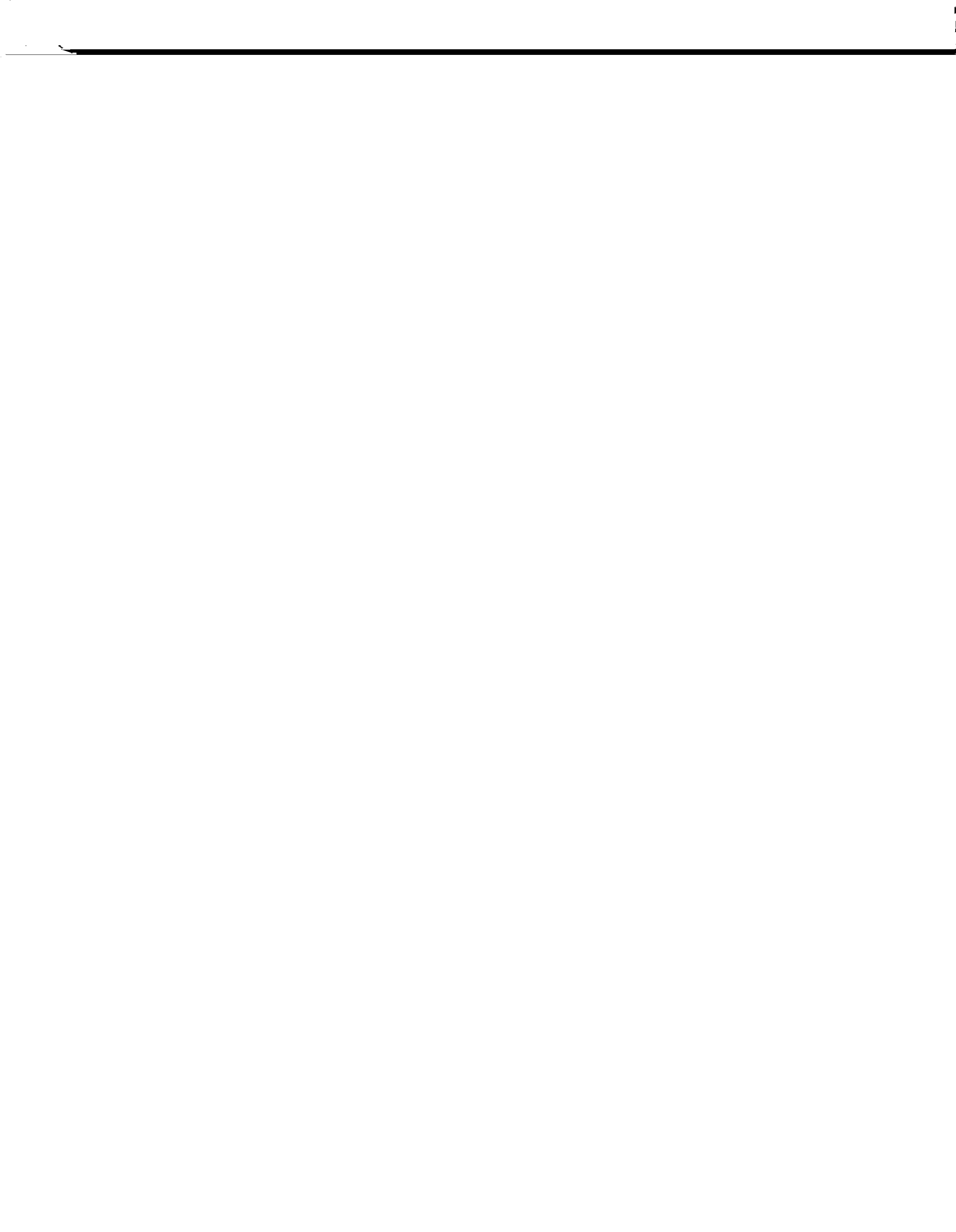| | - REGULATORY TAKINGS
- PUBLIC USE REQUIREMENT OF THE FIFTH AMENDMENT
- Exhibit E.
- a) Application Forms
- and conditions concerning monitoring, entry andinspection);
- permitted discharge.
- 114. In Community Association for Restoration of the Environment v.
- accommodate important economic or social development in the area in which the
- waters are located.”
- That this, the Honorable Illinois Pollution Control Board, Orderthe
- 002249
- DESCRIPTION OF CONSOLIDATEDPERMIT APPLICATION FORMS
- PLEASE PLACE LABEL IN THIS SPACE
- fIB1T
- • 3-• The Utfindant shall develop, maintain, and enforce, a~
- • limits, or local. limits, whichaver are more stringent.
- dosaribiag the Defendant’s pretreatment progrn activities over
- Sprin~field, Illinois 6Z194-9276
- party zeceiving such notice shall acknowledge receipt of the
- 14 days from the
- rec~riptof suchnotice.
- between representatives of the Plaintiff ard the Defendant,
- filing.
- dispute resolution.
- establish any prer..zmptions adverse to any party as a result of
- invocation of this section or the parties’ inability to reach
- • agreement with ‘respect to the disputed issue.
- wc~rkthat caceurri’d ‘as a result of dispute resolution,
- It. cg;renot4ance. .fltqfls azd Other Qqginets
- st1~thittedas followsr
- kg’tos~plainti~fchris Icallis
|
RECE~VED
CLERK’S OFFICE
~
BOA~
FEB 28 2O~
VILLAGE OF LAKE BARRINGTON,
~
STATE OF ILLINOIS
CUBA TOWNSHIP, PRAIRIE RIVERS
)
Pollution
Control 8oarc~
NETWORK, SIERRA CLUB, BETH
)
WENTZEL and CYNTHIA SKRUKRUD,
)
)
Petitioners,
)
)
v.
)
PCB
05-55
)
(Third-Party NPDES Permit Appeal
ILLiNOIS ENVIRONMENTAL
)
Water)
PROTECTION AGENCY and
)
VILLAGE OF
WAUCONDA,
)
)
Respondents.
)
_________________________________________________________________
)
)
SLOCUM DRAINAGE DISTRICT
OF
)
LAKE COUNTY, ILLiNOIS
)
)
Petitioner,
)
)
v.
)
PCB
05-58
)
(Third-Party NPDES Permit Appeal
ILLINOIS ENVIRONMENTAL
)
Water)
PROTECTION AGENCY and
)
VILLAGE OF
WAUCONDA,
)
)
Respondents.
)
THIS FILING PRINTED ON RECYCLED PAPER
AL PHILLIPS, VERN MEYER, GAYLE
)
DEMARCO, GABRIELLE MEYER, LISA)
O’DELL, JOAN LESLIE, MICHAEL
)
DAVEY,
NANCY DOBNER, MIKE
)
POLITO, WILLIAMS PARK
)
IMPROVEMENT ASSOCIATION,
)
MAT SCHLUETER, MYLITH PARK LOT)
OWNERS ASSOCIATION, DONALD
)
KREBS, DON BERKSHIRE, JUDY
)
BRUMME, TWIN POND HOMEOWNERS)
ASSOCIATION, JULIA TUDOR and
)
CHRISTINE DEVINEY.
)
)
Petitioners,
)
)
V.
ILLINOIS ENVIRONMENTAL
PROTECTION AGENCY and
VILLAGE OF WAUCONDA,
Respondent.
Dorothy Gunn, Clerk
Illinois Pollution Control Board
James R.
Thompson Center, Suite 11-500
100 West Randolph Street
Chicago, Illinois 60601
PLEASE TAKE NOTICE that I
Pollution Control Board an original and four,
FINDINGS OF
FACT AND BRIEF
SI
NPDES PERMIT, a copy ofwhich is herewith
Jay J. Glenn,
Attorney at Law
2275 Half Day Road,
Suite
350
Bannockburn, Illinois 60015
(847) 526-9202
(847) 526-9207 Fax
PCB 05-59
)
(Third-Party NPDES Permit Appeal
)
Water)
NOTICE OF FILING
Bradley P. Halloran
Illinois Pollution Control Board
James R. Thompson Center, Suite 11-500
100 West Randolph Street
Chicago, Illinois 60601
)
)
)
)
)
ofthe Clerk of the
Group PROPOSED
~EOF WAUCONDA
Resident Group
THIS FILING PRINTED ON RECYCLED PAPER
fl\
STATE OF ILLINOIS
~H
~i~
L
FEB
282005
COUNTY OF LAKE
~
i \~\
...~i
Ii
L
P~TATE
OF ILLINOIS
“Ution Control Board
Jay J. Glenn,
an attorney, hereby certifies that a copy ofthe foregoing Notice of
Filing, Certificate of Service and PROPOSED FINDINGS OF FACT AND BRIEF
SUPPORTING DENIAL OF VILLAGE OF WAUCONDA NPDES PERMIT, were
served on the persons listed below by electronic transfer on February 28, 2005 and were
further served on the persons listed below by overnight mail on February 28, 2005.
Percy L. Angelo
Attorney at Law
Mayer, Brown, Rowe & Maw, L.L.P.
190 5.
LaSalle Street
Chicago, Illinois
60603
William D. Seith
Attorney at Law
Total Environmental Solutions, P.C.
631
E. Butterfield Road, Suite 314
Lombard, Illinois 60148
Albert Ettinger
Environmental Law and Policy Center
35 East Wacker Drive, Suite
1300
Chicago, Illinois
60601
Sanjay K.
Sofat, Asst. Counsel
James Allen Day
Illinois
Environmental Protection Agency
1021
North Grand Avenue, East
P.O. Box
19276
Springfield, Illinois 62794-9276
THIS FILING PRINTED ON RECYCLED PAPER
ILLI~~)~*~OL
BOARD
VILLAGE OF LAKE BAI
~
j
)
\‘
Jfl\ ~
CUBA TOWNSHIP, PRAll~iE1~I’~tEkS”
Lj
L LI
U’’
FEB 282005
NETWORK, SIERRA CLUB, BETH
)
IS
WENTZEL and CYNTHIA SKRUKRUD,
)
Petitioners,
)
)
v.
)
PCB
05-5 5
)
(Third-Party NPDES
Permit Appeal
ILLINOIS ENVIRONMENTAL
)
Water)
PROTECTION AGENCY and
)
VILLAGE OF WAUCONDA,
)
)
Respondents.
)
_________________________________________________________________
)
)
SLOCUM DRAINAGE DISTRICT OF
)
LAKE COUNTY, ILLINOIS
)
)
Petitioner,
)
)
v.
)
PCBO5-58
)
(Third-Party NPDES Permit Appeal
ILLiNOIS ENVIRONMENTAL
)
Water)
PROTECTION AGENCY and
)
VILLAGE OF WAUCONDA,
)
)
Respondents.
)
THI5 FILING PRINTED ON RECYCLED PAPER
AL PHILLIPS, VERN MEYER, GAYLE
)
DEMARCO, GABRIELLE MEYER, LISA)
O’DELL, JOAN LESLIE, MICHAEL
)
DAVEY,
NANCY DOBNER, MIKE
)
POLITO, WILLIAMS PARK
)
IMPROVEMENT ASSOCIATION,
)
MAT SCHLUETER, MYLITH PARK
LOT)
OWNERS ASSOCIATION, DONALD
)
KREBS, DON BERKSHIRE, JUDY
)
BRUMME, TWIN POND HOMEOWNERS)
ASSOCIATION, JULIA TUDOR and
)
CHRISTINE DEVINEY.
)
)
Petitioners,
)
)
PCB
05-59
v.
)
(Third-Party NPDES Permit Appeal
)
Water)
ILLINOIS ENVIRONMENTAL
)
PROTECTION AGENCY and
)
VILLAGE OF
WAUCONDA,
)
)
Respondent.
)
PROPOSED FINDING OF FACT
AND
BRIEF
SUPPORTING DENIAL OF
VILLAGE OF WAUCONDA NPDES PERMIT
NOW COMES
the RESIDENT GROUP, by and through their attorney JAY J.
GLENN, and for their
PROPOSED FINDINGS OF FACTS, ARGUMENT
AND
BRIEF
SUPPORT OF DENIAL OF VILLAGE OF WAUCONDA NPDES
PERMIT
and states as follows:.
THIS FILING PRINTED ON RECYCLED PAPER
2
JURISDICTION
1.
On
August 23, 2004 the Illinois Environmental Protection Agency
(“Agency”), approved
the Final
Modified NPDES
Permit to the Village of
Wauconda
Wastewater
Treatment Plant
(“
WWTP”)
Permit No;1L0020 109
(“Permit”
)l,
further particularized as
follows:
2
Issue Date:
November 6, 2000
Modification Date #1:
December 30, 2003
Modification Date #3:
August 23, 2004
Expiration Date:
November 30, 2005 ~
2.
In support of this decision, the Agency spread of record a collection of
documents entitled
Wauconda Wastewater Treatment Plant NPDES Permit ~
consisting ofthe Table of Contents5, Agency Decision6, Hearing Record7, Background
ofPermit Modification8, Discharge History9, Public Hearing,’0 September 9-10, 2003
Public Hearing’
1,
Coliform Bacteria’2, Disinfection Exemption Modification for Current
Permit13, Local Government Meeting
—
December
10,
200314 and Response to
Comments, Questions
and Concerns’5, and a copy ofthe NPDES
Permit.
‘Reference to IPCB Doc. No.: _____,
are
to the Agency
document submission to the Illinois Pollution
Control Board.
2
IPCB Doc’s. No’s.:
#002195
‘
IPCB
Doc’s
No’s.:
#00225
1
thru #002262
~‘
IPCB Doc’s. No’s.:
#0022 10
thru
#002262
and
#00225
1
thru
#002262
~IPCB
Doc. No.: #0022 10
6
IPCB
Doc. No.: #002211
~IPCB
Doc. No. :#002212
8
IPCB
Doc.No.:
#002213
~IPCB Doc.
No.: #0022 14
10IPCB
Doe. No.: #0022 14
~ IPCB Doc.
No.: #0022 13
12
IPCB Doc.No.:
#0022 14
13
IPCB Doc.
No.: #0022 15
14
IPCB Doc.
No.: #0022 15
THIS FILING PRINTED ON RECYCLEDPAPER
3
Jurisdiction
—
Resident Group
3.
On September 27, 2004 pursuant 415 ILCS 5/40(e)(1) and 35 Ill.
Administrative Code Section
105, the
Resident Group
filed before this, The Honorable
Illinois
Pollution Control Board
(“Board”)
this
THIRD-PARTY
PETITION FOR
REVIEW
OF A DECISION BY THE ILLINOIS ENVIRONMENTAL
PROTECTION AGENCY
(
“Resident Group Petition”).
4.
Pursuant to 415
ILCS
5140(e)(2)(A)
members ofthe Resident
Group gave
statements, made extensive comments and submitted numerous documents to the Agency
at the September 9, 2003 and September
10, 2003
“informational hearing”
and filed
other documents prior to the
close ofthe public record.
5.
The Hearing Officer dictated specific meeting rules for the September 9, 2003
and September
10, 2003 “informational meeting” and individual members ofthe Resident
Group participated and fully complied with the specific instructions ofthe Hearing
Officer
and the Resident Group is fully compliant with thejurisdictional requirements
necessary to prosecute this
Appeal from the Agency decision granting this Permit.
6.
Additional jurisdictional compliance is ofrecord in theseproceedings in the
Resident Group Petition and
those facts are incorporated by reference herein as if frilly
set forth herein.
7.
Most members ofthe Resident Group reside in the Village ofLake
Barrington and Cuba Township.
8.
The Village ofLake Barrington and Cuba Township have, jointly,
filed a
separate NPDES Appeal, PCB
05-55
which is consolidated herein.
15
IPCB Doe’sNo’s.: #0022 16 thru #002250
THIS FILING PRINTED ON RECYCLED PAPER
4
9.
The Resident Group notes that the Village ofLake Barrington and Cuba
Township, (“Municipal Petitioners”) and others’6, are captioned as Petitioners in these•
Consolidated Proceedings but the Resident Group advises this, The Honorable Illinois
Pollution Control Board,
that the activities and recent pleadings ofthe Municipal
Petitioners are in conflict with the views of the Resident Group, and if implemented will
endanger the health and
safety ofthe Resident Group.
ACRONYMS
10.
The Resident Group adopts the Agency Acronyms17 and a copy is
attached
hereto as Exhibit A.
The Resident Group Supplements the Agency Acronyms and a
copy is attached as Exhibit B.
CONSTITUTIONAL AND PROCEDURAL OBJECTIONS
11.
This pleading is intended as a factual summary and
argument
supporting
denial of the
Permit based solely on the Record.
12.
The Resident Group will raise additional constitutional, jurisdictional and
procedural objections to the approval and/or implementation ofthis Permit in future
pleadings. A brief overview ofthese additional grounds is summarized as follows:
PROCEDURAL DUE
PROCESS
13.
The Resident Group has by testimony at the “informational hearing”,
in
post-hearing comments and its filings in these proceedings charge that the Agency has
institutionalized practices and procedures which result in the systematic denial of due
16
PCB
05-55
‘7IPCD Doe. No.: #00249
THIS FILING PRINTED ON RECYCLED PAPER
5
process rights commonly associated with quasi-judicial proceedings guaranteed to
interested parties in accordance with
People ex re. ROBERT J.
KLAEREN
II et al. v.
Village of Lisle et al.
202 Ill. 2d 164; 781 N.E.2d 223; 2002 Ill. LEXIS 9411;
269 Ill.
Dec. 426 (2002).
REGULATORY TAKINGS
14.
In
1994, the
Court of Appeals in Loveladies Harbor, Inc. v. United
States, 28 F.3d
1171,
1179
(Fed. Cir.
1994) outlined a 2-step test for determining
whether a regulatory takings has occurred:
Tihere
has
been
a regulatory taking
if:
(1)
there was
a
denial of economically
viable
use
of the property
as
a
result
of
the
regulatory
imposition;
(2)
the
property
owner has
distinct investment-backed expectations; and
(3) it was an interest vested in the owner, as a
matter of
state property
law, and not within the power ofthe state
to regulate under common law
nuisance doctrine.18
15.
The land tracts ofthe Fiddle Creek Wetlands are privately
owned, they are not the property ofthe Village ofWauconda, Village of
Lake Barrington or Cuba
Township.
16.
Ifthe current
waste loading conditions are allowed to
continue, the Village
of
Wauconda wastestream will reduce the Fiddle
Creek Wetlands to a wastestream channel directly to the Fox River in 14
to
15 years’9.
Ifthis Permit
is allowed to proceed and become operational,
the aging process will accelerate.
‘8ABA
Environment, Energy,
and Resources Law
—
The Year in Review 2002 at page 346
19
IPCB Doe. No.: #000475
THIS FILING PRINTED ON RECYCLED PAPER
6
17.
When the Village of Wauconda, apparently with Board
approval, moved its wastestream to the Fiddle Creek Wetlands,
the
predictable consequence ofthat
action, the death of the Fiddle Creek
Wetlands became possible.
18.
In 1993 the Fiddle Creek Wetlands open water had an area
of about 180
acres, at the present time little orno
open water is present20.
19.
No riparian owner or property owner in the Fiddle Creek
Wetlands has been told
“During the wet weather flow conditions an out-
of-bank
condition
occurs along the east-west portion ofFiddle Creek
during the 1-year, 12-hour
storm event”21
20.
No riparian owner or property owner in the Fiddle Creek
Wetlands has been told that
“The analysis did not include the influence
from the Fox River
backwater and applied a nominal
flow at the Slocum
Lake Drain confluence based on the data provided in the FIS.
Further
detailed studies would be required to assess the full effects ofthe
watershed variables.
The
analysis presented is intended to address the
anticipated overbank conditions and the impact ofthe increased flows
from the wastewater treatment plant as critical locations along
Fiddle Creek.22
20
IPCB Doe.
No.: #000475
21
IPCB Doe. No.: #002057
22
IPCB Doe.: #002058
THIS FILING PRINTED ON RECYCLED PAPER
7
21.
In
Cooley v.
United
States23 324 F.3d 1297 (Fed. Cir. 2003)
the Court held that a takings claim became ripe upon issuance ofthe Corps
issuance of a
final decision.
PUBLIC USE REQUIREMENT OF THE
FIFTH AMENDMENT
22.
The United
States Supreme Court hasjust heard February,
2005
oral
arguments
in
Kelo,
et al.
v.
City
of New London, et
al.
Case No. 04-108, and the
Supreme Court has been asked, as follows:
QUESTION PRESENTED
What protection does the Fifth Amendment’s public
use requirement provide for individuals whose property
is
being condemned, by to eliminate slums or blight, but
for the sole purpose of
“economic development” that
will perhaps increase tax revenues and improve the
local economy?
23.
While it
is true
that
Kelo
is
currently
undecided and focused on the use of
condemnation
for the sole purpose ofeconomic developmentthe language challenged in
Kelo
is substantially identical
to the language used by the Agency in its justification of
this Permit.
CONFLICTS OF
INTEREST
A.
Agency
says
“We
didn’t do it, the Board
did it basically”
24.
On September 9, 2003, the Agency, by its attorney,
beganthe
“informational hearing”
with the following statement:
It
was
the
Pollution
Control
Board
back
in
the
‘80’s
who
ordered the plant to change
its point of
discharge.
And
that was on
the
basis
of
a
series
of what
we call
variances,
which
there
was
a
phosphorous
limit
in
effect.
And they and a
lot of other people weren’t being
able to
meet the phosphorous
limit.
So the Board said,
23
ABA
—
Environment, Energy, and Resources Law, The Year in Review 2003
at p.
142
THIS FILING PRINTED ON RECYCLED PAPER
8
Okay,
under the
Act we can
give you
a
variance of a
maximum of five years
to
give you
time
to
figure
out
what
you
are going
to do.
As
it
turned out, what they
ended up having to do was to move the discharge.
So it
was
the Pollution
Control
board
that was
in,
I
mean
that was
—
It basically
is
the equivalent of a
court order.
And I would just
like to make that clear because I think
there
may
have
been
some,
you
know,
just
some
curiosity as
to
how
it
was
that
that
came about.
~
didn’t do it, the Board did it basically.
24
25.
In a document entitled WAUCONDA WASTEWATER
TREATMENT
PLANT
decision25 the Agency stated in the
DISCHARGE
HISTORY, as
follows:
“In
1977,
the Illinois
Pollution
Control
Board
(Board)
granted
Wauconda
a
variance
from
the
phosphorus
standard
in
order to have
time to resolve the problem.
In
1983
the Board
terminated the variance, whereupon
the discharge was moved away from Slocum Lake to its
resent
location
in
Fiddle
Creek.
(Fiddle
Creek
has
previously
been
designated
in
Wauconda’s
NPDES
permit
and
other
Illinois
EPA
documents
as
“an
unnamed
tributary
to
the
Fox
River”
or
Wauconda
Creek;”
however,
the
permitted
discharge
point
has
been the same since 1983).~~26
26.
This Record
and
the relevant Statutes give this Board both
the
grounds and authority to
deny and/or terminate the Village of
Wauconda NPDES Permit.
24
Hearing Transcript at p.
15
—
16
25
IPCB Doe’s No’s.:
#002220 thru 002262
26
IPCB Doe.
No.:
#0022 13
THIS FILING PRINTED ON RECYCLED PAPER
9
27.
Prior to the September 9, 2003
“informational hearing” the
Agency contacted numerous Residents near the Fiddle Creek Wetlands
and advised that this Permit would be granted.
A review ofthis Record
indicates that the Agency is in the business ofapproving NPDES
Permits
and is failing to protect our wetlands and surface waters.
28.
The Resident Group seeks Justice,
sees no worse
Municipal neighbor than the Village of Wauconda and no worse guardian
than
the Agency.
29.
The Agency has by words and documents has shifted the
responsibility for the current degradation ofthe Fiddle Creek Wetlands to
the Illinois Pollution
Control Board.
30.
This Record with these Respondents
creates a unique
opportunity review a past decision, revealing the environmental
consequences of that decision and
providing an opportunity to
correct
a problem.
The Resident Group believes, if there were ever grounds for
Permit denial
or revocation, this Record, the environmental history ofthe
Village ofWauconda warrant serious consideration.
B.
TARKOWSKI SUPERFUND SITE
(“Superfund 2”)
31.
The Fiddle Creek Wetlands contains a Superfund Site the
second oftwo
involved in this Permit Appeal
identified as LAKELAND ESTATES, 431
S. Lakeview,
Wauconda, Illinois27 which is owned by a Mr. John Tarkowski.28
27
IPCB Doe.
#000382
28
Tr.: 187, 1PCB Doe’sNo’s.: #000382 thru #00387, #000580, #000807,
THIS FILING PRINTED ON RECYCLEDPAPER
10
32.
Prior to September 9, 2003, the Agency was, on actual knowledge, that
this Superfund Site would be raised by Residents at the “informational hearing”.
numerous documents and photographs were submitted during the hearing and in the post
hearing comment period.
33.
On September 9, 2003, the Agency, by its
attorney, advised that the
Agency was aware ofthe Tarkowski matter29 and advised the public ofa decision in
United States ofAmerica v. John Tarkowski
30
34.
Mayer, Brown & Platt, represented Mr. Tarkowski in those proceedings.
35.
Mayer Brown, Rowe & Maw LLP have filed their Appearance in these
proceedings and represents the Village ofLake Barrington and Cuba Township.
36.
The entrance to Superfund 2
is through Lakeland Estates and Superfund 2
is
a 16 acre tract which is in and adjacentto the Fiddle Creek Wetlands, and parts of
Superfund 2 are adjacent to the Slocum Lake Drainage District channels which currently
carries the WWTP wastestream to the Fox River.
37.
Superfund 2 has been come under aerial surveillance and the Agency has
produced no documents relating to this active investigation.
The Resident Group has
additional information relating to Superfund 2 which is Confidential, and cannotbecome
part ofthe public
record.
38.
The existence ofSuperfund 2 was raised by Residents at the
“Informational Hearing” and this Appeal but the Agency has failed to disclose any
29Tr.: 196-197
30
IPCB Doe’s No’s.: #000807 thru #000828
THIS FILING PRINTED ON RECYCLED PAPER
11
information relating to Superfund 2 in any documents, and its antidegradation analysis
has failed to mention it
even
though eventhough the Wauconda wastestream flows
through Superfund 2.
RESIDENT GROUP
39.
The approximate 500 individuals,
31
standing before this Board,
represent
a small cross-section ofthe actual
Resident property owners ofCuba Township and
Wauconda Township.
Almost all members ofthe Resident Group live downstream ofthe
WWTP outfall, and are so situated as to be affected by this Permit
and by offensive
conditions and other violations ofthe water quality standards ofthe Environmental
Protection Act in the Fiddle Creek Wetlands, Fox River and Illinois River.
40.
The members ofthis Resident Group have children, and the Resident
Group represents
them in these proceedings, they swim, hike, play and
fish in the Fiddle
Creek Wetlands.
41.
Most members ofResident Group are in daily, intimate contact with the
Fiddle Creek Wetlands.
The Agency is on actual notice “It is reported that many ofthe
wells in the area use a very shallow aquifer”32.
Our wells are linked to groundwaters
under this wetland and the Resident
Group knowtheir wells are subject to surface and
subsurface contamination from the Village ofWauconda wastestream.
42.
On July 29, 2003
a group ofResidents requested a meeting with the
Illinois Attorney General and requested an investigation ofthe Agency33
43.
The Residents raised the possibility ofcontamination in wells near the
landfill.34
31
Resident Group Appearance in these proceedings
32
IPCB Doe. No.: #000475
“
IPCB Doe’s No’s.: #001744 thru #001746
THIS FILING PRINTED ON RECYCLED PAPER
12
44.
The Residents then mentioned the possibility that contaminants associated
with Superfund
1
leachate going to the WWTP and passing through to receiving stream
and affecting the wells in North Barrington Lake
Barrington
~
45.
The consequences of aquifer pollution and existence of
a leachate plume
from Superfund
1
is now a
matter ofpublic record. It has been sixteen months since our
neighbors
in the Hillcrest Subdivision in un-incorporated Wauconda Township were told
that cancer causing chemicals (Vinyl Chloride) was in their wells.
46.
In the last
16 months, the Elmcrest, Spencer Highlands,
Wellesmere
Heights
and North Shore Subdivisions and
Residents living near Superfund
1
have been
made aware ofthe danger ofgroundwater contamination and several hundred residents
are receiving bottled water.
47.
The Agency is on actual notice that Superfund 1, under a 2’~’
NPDES
Permit issued to WTG recovers leachate runoffthrough a
system ofdrain tiles which
is
pumpedto the WWTP and
is dumped into the Village ofWauconda wastestream and
then is discharged into the Fiddle Creek Wetlands.
48.
The Residents then raised the possibility ofcontaminates associated with
leachate going to the STP and passing through to receiving stream affecting wells of
wells downstream ofthe WWTP Outfall on Anderson Road.36
49.
The Resident Group recognizes that the WWTP wastestream is a clear and
present danger to health and
safety of
downstream Residents, their families, theirwells
and the environment.
~‘
Ibid at #00 1745
~ Ibid
36
Ibid
THIS FILING PRINTED ON RECYCLED PAPER
13
50.
The leachate
recovery system was specifically installed at Superfund
1 to
keep leachate from
discharging directlyto Mutton Creek.
51.
The Discharge ofleachate from the landfill to the City ofWauconda
(one ofthe PRP’s) was permitted by the Agency in
1991.
The leachate does contain
some VOC’s ,heavy metals,
and boron. Boron elevated.37
52.
A list ofSuperfund
1 PRP’s is attached hereto as Exhibit C.
Prior to
1983 there were no STP or WWTP
discharges into the Fiddle Creek
Wetlands.
False NPDES Application submitted by Village of Wauconda
and
Agency
approval of NPDES Permit
knowing Permit False
53.
Form
1
General
Information
for Consolidated
Permits
Program is
EPA
Form
3510-1 and the EPA Description of Consolidated Permit Application Forms, Form
1
Package Table ofContents, Section A
—
General Instructions, Section B
—
Form
1
line-
by-line instructions, Section C, Section D
—
Glossary and blank Form
1
are attached
hereto as
Group Exhibit D.
54.
Page
1-4 ofthe NPDES instructions in Item XIII state, in relevant part as
follows:
a.
18 U.S.C.
Section
1001 provides that:
“Whoever,
in
any matter within the jurisdiction of any
department
or
agency
of he
United
States
knowingly
and
wilfully
falsffies,
conceals
or
covers
up
by
any
trick, scheme,
or
device
a
material
fact
,
or
makes
or
uses
any
false writing
or
document
knowing
same
to
contain
any
false,
fictitious
or fraudulent
statement
or
entry,
shall
be
fmed
not
more
than
$10,000
or
imprisoned not more than five years, or both.”
~
IPCB
Doe. No.:#00 1843
THIS FILING PRINTED ON RECYCLED PAPER
14
b.
Section 309(c)(2) ofthe Clean Water Act provides:
“any
person
knowingly
makes
any
false
statement,
representation,
or
certification
in
any
application,...
shall upon conviction,
be punished by
a fme of no more
than
$10,000
or
by imprisonment of not more than
six
months, or
both.”
c.
Section 3008(d)(3) ofthe Resource Conservation and
Recovery Act provides:
“for a fine up to $25,000 per day or imprisonment up to one
year, or both, for a first conviction ormaking
a false
statement in an application under the Act, and for double
these penalties upon subsequent convictions”.
55.
In the
State of Illinois, the current statutory authority to deny an NPDES
permit is found at
35 Ill. Adm. Code 309.105,
a copy ofwhich is attached hereto as
Exhibit E.
56.
35 Ill.
Adm. Code 309.103
states as follows:
a)
Application Forms
1)
An
applicant
for
a
National
Pollution
Discharge
Elimination
System
(NPDES)
Permit
shall
file
an
application,
in
accordance
with
Section
309.223
hereof,
on
forms
provided
by
the
Illinois
Environmental
Protection
Agency
(Agency).
Such
forms shall comprise the NPDES
application
forms
promulgated
by the U.S.
Environmental
Protection
Agency
for
the
type
of
discharge
for
which
an
NPDES Permit is being sought...”
57.
Pursuant to
35
Ill.
Adm. Code
309.182(b)(2)
this
Board
has Authority to
Modif~’,Suspend orRevoke Permits, as follows:
The Pollution Control Board,
after complaint and
hearing
in
accordance with the Act and
its
Procedural
Rules, may
modify,
suspend or
revoke any NPDES permit
in whole
or
in
part in
any manner consistent with the Act, applicable
THIS FILING PRINTED ON RECYCLED PAPER
15
Board regulations and federal
requirements, upon proof of
cause including, but not limited to, the following:
1)
Violation
of
any
terms
or
conditions
of
the
permit
(including,
but
not limited
to,
schedules of compliance
and
conditions
concerning
monitoring,
entry
and
inspection);
2)
Obtaining
a
permit by misrepresentation
or
failure
to
disclose fully all relevant facts; or
3)
A
change
in
any
circumstance that
mandates
either a
temporary or permanent reduction or elimination of the
permitted discharge.
58.
On March 19, 2003,
the Village
ofWauconda,
by
Bonestroo
Devery & Associates38
filed with the Agency two copies of an
executed
NPDES
Permit Application and supplemental documentation for
a wastewatertreatment plant39.
59.
Two completed NPDES Permit Applications,
withoutthe
Table in Section B.6 on page 8 of21
were received by the Agency on
March 23, 2003~°.
60.
On April 3,
2003, the Village ofWauconda, by Bonestroo
Devery & Associates filed with the Agency two copies ofthe completed
Table in Section B.6 on page 8 of 21
in its NPDES Permit Application41
61. On April 7, 2003 the Agency received the copies ofthe Table in B.6 on
page
8 of 12.
38
IPCB
Doe’sNo.: #001608
-
#001609
~
IPCB Doe’s
No’s.:
#001610 -001670
40IPCB
Doe. No.: #00 1608
41
IPCB Doe.
No.: #001671
THIS FILING PRINTED ON RECYCLED PAPER
16
62.
Seven days latter, on April
14, 2003, J. Hutton in a Memorandum to D.
Netemeyer42
advisedthat the Antidegradation assessment was completed pursuant to 35
Ill.
Adm. Code
302.105 was compliant with Antidegradaton standard43.
63.
On July 31, 2003, a group ofResidents requested, and were granted,
a
meeting with the an Assistant Attorney General, Chris Grant, Esq. and the falseNPDES
Permit Application, filed by the Village ofWauconda, dated March 21, 2003 was
raised.44
64.
C. Kallis, an investigator with the IEPA was present and he
prepared the
above MEMORANDUM which was forwarded to Mr. Don Netemeyer45.
65.
At the “informational hearing” a Resident had reviewed the modified
permit and directly questionedthe truth of Village ofWauconda answers to the NPDES
Permit Application46.
66.
On the Village ofWauconda NPDES Application at page
19, under
CERCLA superfund wastewater, RCRA remediation, corrective action, wastewater, and
other remediation activity wastewater, the Village ofWauconda answered NA when they
knew they were receiving wastewater from Superfimd
1
going into the Village of
Wauconda
wastestream47.
VIOLATION OF PERMIT
67.
On September
9, 2003 the Agency, by
its attorney,
summarized the
history ofthe Village of Wauconda
and its Waste Water Treatment Plant as follows:
42
IPCB
Doe’s. No’s.: #00 1677
thru #00 1679
~ Further comment canbe found at Agency Response to Request to Admit p. 6
~ IPCB Doe’s No’s.: #001744 thru #00 1746
‘~
IPCB Doe’s No’s.: #00 1744 thru #00 1746
46
Tr. 90
-
96
~ Ibid
THIS FILING PRINTED ON RECYCLED PAPER
17
“Now, yes, it is true
that through the ‘90’s it had
a lot of
problems.
No question
about that.
But it doesn’t have
those
same
problems
anymore.
What
happened
basically
is
that
in
2000,
1999
and
2000,
we
had
the
Attorney General’s office file suit against the Village to
force them to take care of some of these problems.
And
there was
a
consent
decree
entered
into
here
in
Lake
County
in
Chancery Court.
And
for
those
of you
who
might be
interested, it’s No.
99CH720.
It was
entered
on
December
12,
2000.
And
basically
what
it
did,
it
ordered Wauconda to fix its sewer problems
and
to put
in an excess-flow
facility, that that the excess flow when
there
---
and these guys will explain to you, when
there
is excess flow, this facility holds
it and treats
it.
48,,
68.
The 2001
SUMMARY
REPORT
OF
SLOCUM LAKE
(“Slocum Report”)
which was prepared by the Lake County Health
Department
was
entered
into
the record.49
69.
The Slocum Report put the Agency on actual notice that the
eutrophication ofSlocum Lake was accelerated by years of discharge from
the Wauconda Wastewater Treatment Plant5°
70.
WWTP was built in the early
20th
century and discharged
treated
effluent
into Bangs Lake Drain which empties into Slocum
Lake51.
71.
Historically WWTP has had many problems with discharge
ofraw sewage into the Bangs Lake Drain when flow exceeded the plant’s
maximum
capacity52.
48Tr.p18—19
‘~
IPCB Doe’s.:
#0003 88 thru
#00042 1
50
IPCB Doe. No.:
#000392
51
IPCB Doe. No.:
#000392
52
IPCB
Doe. No.:
#000392
THIS FILING PRINTED ON RECYCLED PAPER
18
72.
According to
the Lake County Health Department, in 1986
the Bangs
Lake Drain Bypass was built, and treated
effluent was to be
diverted into Fiddle Marsh Fiddle
Creek Wetlands
and eventually enter
the
Slocum Lake Drain,
downstreamofthe lake Slocum
Lake53.
73.
From
1986-1996, WWTP illegally bypassed the Bangs
Lake Drain bypass, continuing to discharge raw sewage into Slocum
Lake54.
74.
In 1997, the JEPA required WWTP to address this illegal
conduct.
75.
In 2002 LCHD concluded
“Regardless ofthe
improvements that have come about over the past decade, much ofthe
damage to the lake Slocum
Lake
has already been done55.
PEOPLE OF THE STATE
OF ILLINOIS
v. VILLAGE
OF WAUCONDA
99
CII 720
76.
On
June 28, 1999 in caseNo. 99 CH 720, Attorney General ofthe State
of Illinois, on behalfofthe Agency filed a
COMPLAINT FOR
INJUNCTION AND
OTHER RELIEF (“1999 Litigation”)
which is
attached hereto as
Group Exhibit F
Agency
did not disclose either the litigation or document.
77.
In Count
1
—
WATER POLLUTION, the State of Illinois alleged that on
May 20,
1996, February 20,
1997 and February 21,
1997, the Village ofWauconda
~
IPCB Doe.
No.:
#000392
54IPCB Doe.
No.:
#000392
~
IPCB Doe.
No.:
#000392
THIS FILING PRINTED ON RECYCLED PAPER
19
violated Section
12(a) of 415 ILCS 5/12(a) (1996)
and allowed untreated raw sewage to
be pumped from six different locations totaling approximately 1,530,390 gallons into
Bangs Lake Creek.
78.
In Count II- VIOLATION OF GENERAL EFFLUENT STANDARDS,
the
State of Illinois alleged that in February,
1997, the Village of Wauconda violated the
Illinois Pollution Control Board, Water Pollution Regulations,
35
Ill. Adm., Code
304.120(c)
—
Deoxgenating Wastes in that in February,
1997 caused or allowed 28.4
milligrams per liter (“mg/l”) oftotal suspended
solids
(“TSS”) to be discharged into
Bangs Lake Creek.
79.
In Count III
-
VIOLATION OF NPDES PERMIT EFFLUENT LIMITS,
the State ofIllinois charged that the Village ofWauconda violated its NPDES Permit No
ILOO2O 109 which was issued on June 7,
1995 and expired on May 31, 2000 in that the
Village ofWauconda
with exceeded the chlorine residual limits by discharging 28.4 mg/l
of
TSS on February 20, 1997
and 0.68 mg/l and 0.69 mg/l ofresidual chlorine on both
February 20 and 21,
1997.
80.
In Count IV
-
VIOLATION OF NPDES PERMIT REPORTING
REQUIREMENTS the State ofIllinois
charged that Village of Wauconda did not provide
representative flow monitoring required under
the NPDES Permit.
81.
In
Count
V
—
VIOLATION OF ERFORMANCE CRITERIA the
State of
Illinois charged that the Village
of Wauconda on February
20
and 21,
1997 allowed
excessive
inflow/infiltration
into its collection
system leading to sewer overflow.
THIS FILING PRINTED ON RECYCLED PAPER
20
82.
On February 20 and 21,
1997 the Village ofWauconda allowed overflows
to
occur during wet weather periods and did not receive primary treatment and
disinfection prior to discharge.
83.
In County VI- VIOLATIONS OF NPDES PERMIT
CONDITIONS, the
State of
Illinois charged that the Village ofWauconda
a.
Failed to provide representative flow monitoring;
b.
Failed to take samples;
c.
Failed to submit its
sludge analyses and its semi-annual
sludge
management report;
d.
Failed to submit a completed industrial survey.
84.
On December 13, 2000, the Village ofWauconda and State ofIllinois
entered into a CONSENT ORDER
56
which required, among other relief,
as follows:
a.
Elimination ofhydraulic bottleneckat headworks;
b.
Limit hydraulic loading to treatment units downstream ofheadworks,
with exception of Bio Towers; and
c.
Conform “Basis ofDesign”
report for WWTP “Wet Weather Flow
Improvements”
d.
Wauconda shall complete construction by October 14, 2001;
e.
Cease
and Desist order was entered from future
violations
of
the Act
and Board regulations.
85.
The CONSENT ORDER charged the Village ofWauconda with a Civil
Penalty ofTwenty Thousand Dollars
($20,000.00).
PEOPLE OF
THE STATE OF
ILLINOIS
v. VILLAGE OF WAUCONDA
Case No. 04
CH 1206
86.
On
August
17, 2004, prior to the issuance ofthe
Permit,
the Attorney General ofthe State of Illinois,
in its own name and on
behalfofthe
Agency filed a complaint (“2004
—
Litigation”).
56
IPCB Doe’s.:
#2271
thru #2284 produced
in these proceedings in AMENDED RECORD 2
on January
31, 2005.
THIS FILING
PRINTED ON RECYCLED PAPER
21
87.
On December 10, 2004 a CONSENT ORDER was entered
in this proceedings, a copy ofsaid Order is attached hereto as
Group
Exhibit G.
Agency
did not disclose this document
88.
Thatthe CONSENT ORDER memorializes violations by
the
Village ofWauconda ofthe following Illinois Pollution Control Board
Regulations:
a.
Water Pollution
-
violation of415 ILCS 5/12(d) 2002);
b.
CREATING A WATER POLLUTION HAZARD
-
violation of415
ILCS
5/12(d)
(2002);
c.
VIOLATION OF
WATER QUALITY STANDARDS
-
violation of
415 ILCS
5/12(a)
(2002), and 35 Ill. Adm.
Code 302.203;
d.
VIOLATION OF EFFLUENT STANDARDS
—
violation of415
ILCS
5/l2(a)(2002), and 35
Ill. Adm.
Code 304.104;
e.
NPDES PERMIT VIOLATIONS
—
violation of415 ILCS 5/12(f)(
2002) and NPDES
Permit No.
IL 00200109.
89.
The Resident Group did not receive any documents from the Agency
relating to the 2004
Litigation;
90.
The Resident Group notes for this record that the Attorney General for
the State of Illinois and Agency file a law suit against the Village of Wauconda on
August 17, 2004;
91.
The Agency choose to issue this contested NPDES Permit to the Village
ofWauconda
7 days after filing suit against this same Village ofWauconda
For:
Water
Pollution, Creating a Water Pollution Hazard;
Violation ofWater Quality Standards,
Violations of Effluent Standards and NPDES Permit Violations.
92.
The 2004 Consent Order mandates that the Village ofWauconda to
implement and enforce its pretreatment program in accordance with
its Ordinance 2000-
0-31, adopted September 19, 2000.
THIS FILING PRINTED ON RECYCLED PAPER
22
93.
The 2004 Litigation resulted in
the Village of Wauconda being issued a
civil penalty of Ten Thousand Dollars ($10,000.00).
Additional Reported Violations
94.
V2 Consultants reviewed USEPA’S Permit Compliance System (PCS) and
in the period April 2001
to May 2003 found the following violations;
a.
Total ammonia nitrogen in discharge exceeded the permit limitation in
June2002~~
b.
Copper in the discharge exceed the permit limitation on three occasions
February 2003, November 2001, and September 200158.
95.
April 17, 2003 R. Coob advised that the Agency had sent the Village of
Wauconda a violation notice in regard to water main and sewer main permit violations in
the Liberty Lakes Development (Town and Country Homes)
96.
Agency records show that Wauconda Task Group constantly violates the
Village ofWauconda
Ordinance for Boron and total dissolved solids, however as long
VOW is not on the pretreatment program, the Agency has no legal authority to force
VOW to enforce its ordinance.
~
97.
The annual report confirms the presence ofsome organic compounds and
poly aromatic hydrocarbons.
Do we know ifthis is affecting the plant or causing pass
through ? No because they are not on the pretreatment program.
Thus they are not
required to sample and analyze forthese compounds in their influent, effluent and sludge.
~
IPCB
Doe.:
#0003
19
58
IPCB
Doe.: #0003 19
~
IPCB
Doe. No. #00 1766
THIS FILING PRINTED ON RECYCLED PAPER
23
98.
Memo from Chris Kallis to
LisaMoreno, Al Keller, Don Netemeyer and
Scott Twait which states that there is a memo from DanRay to Don Netermeyer
concerning Wauconda’s omission ofthe landfill leachate
in their industrial survey that
was required under the old permit6°
Fecal Foam Out
99.
On September 24, 2003, WWTP foam was leaking out of
the west aerobic
digester, running downhill surrounding a control building
and entering a storm
sewer tributary to the Bangs Lake Drain.61
100.
This same problem with the aerobic digester was seen by
the
WWTP staff on August 29, 2003
and August 20, 2003, they didn’t
knowthe
source.62
RECORD
101.
On November 30, 2004, after requesting and being granted and extension,
the Agency filedherein, what it represented as the complete RECORD,
consisting of
Two Thousand Sixty- Two (2,262)
pages. On December
10, 2004 the Agency Amended
the Record herein for the First time with the inclusion ofthe Transcript ofthe September
9, 2003
—
September 10,
2003 Agency hearing.
102.
On December
17, 2004 Attorney Glenn representing the Resident Group
and
Attorney Macfarlane representing the Slocum Lake Drainage District ofLake
County, at the invitation ofthe Agency, traveled to Springfield and reviewed, what the
60
IPCB
Doe. No. #00 1766
61
IPCB
Doe
No. #000611
thru 000614
62
IPCB
Doe. No. #611
THIS FILING PRINTED ON RECYCLED PAPER
24
Agency represented as all
documents not heretofore submitted
into the record. This
document review was highly controlled and restricted and resulted in the Resident Group
filing
a MOTION FOR SANCTIONS AND TO COMPEL.
103.
In the Agency RESPONSE TO MOTION FOR SANCTIONS AND TO
COMPEL, filed on
January 7, 2005, the Agency, in its Attachment A, filed
47
individual
responses
and attached
8
additional documents un-numbered.
104.
In the Agency RESPONSE TO MOTION TO COMPEL THE AGENCY
TO PRODUCE THE VIOLATION AND LITIGATION RECORD, filed on January 6,
2005, the Agency filed
19 individual responses but attached the CONSENT ORDER in
Case No. 99 CH 720 un-numbered.
105.
On January 31, 2005, the Agency filed its
AMENDED RECORD 2
which
numbered the above records from 2263
thru 2285.
106.
On February 8, 2005, the Agency filed its third amended record entitled
DOCUMENTS SUBMITTED PURSUANT TO THE HEARING OFFICER ORDER
DATED FEBRUARY
3, 2005 and these third amended documents are numbered P-i
thru P-36.
107.
On February
10,
2005, the day ofthe IEPA Hearing, the Village of
Wauconda and Agency advised that the PRELIMINARY DESIGN REPORT for WWTP
was not in the record, and on or about February
15, 2005,
a copy of
this report was
tendered,
and
is
identified in this pleading as Amended Record 4,
and has identification
numbers HO-i through HO-47.
THIS FILING PRINTED ON RECYCLED PAPER
25
ARGUMENT
Pursuant to
35
Ill. Adm.
Code 105.116 the Agency is required to file the Agency
Record with the Board within (30) days after receipt ofthe Petition. Section 40 ILCS
5/40(e)(3)
provides that the Board shall hear the petition “exclusively on the basis ofthe
record before the Agency. Pursuant to Section 105.2 12(b). The Agency states that it did
not rely upon information in making its final decision.
FEDERAL OVERVIEW
108.
The CWArequires that State water quality standards
include an
antidegradation policy and implementation procedures that are consistent with the
requirements ofthe federal policy outlined in 40 C.F.R.
§
131.12 a copy ofwhich is
attached hereto as
Exhibit H.
109.
Federal antidegradationpolicy delineates a different standard-of
protection for each of three different “tiers” ofwater.
110.
Tier
1
maintains and protects existing uses and water quality conditions
necessary to support such uses.
An existing use can be established by demonstrating that
fishing, swimming,
or other uses have
actually occurred since November 28,
1975, or
that the water quality is suitable to allow such uses to occur.
111.
Where an existing
use is established,
it must be protected even if it is not
listed in
the water quality standards as a designated
use.
Tier
1
requirements are
applicable to all surface waters.
112.
CWA prohibits the discharge ofany pollutant from a point source into
navigable waters unless the discharge is authorized by permit.
63
63
33
U.S.C.
§
1342
(2000)
THIS FILING PRINTED ON RECYCLED PAPER
26
113.
“Navigable waters” are defined
as “waters of
the
United
States.”64
114.
In Community Association for Restoration of the Environment v.
Henry Bosma
Dairy65 Ninth Circuit reaffirmed previous decisions holding that
irrigation canals are waters ofthe United
States. In United States v.
New
Portland
Meadows66
the court held that an unnamed ditch which eventually discharged into the
Columbia Slough was a water of the United States.
115.
CWA section
4Q467
requires a permit for discharges offill or dredge
spoils
to “navigable waters”. In a post Solid Waste Agency ofNorthern
Cook
County
v. U.S.
Army Corps of
Engineers68 decision, the Fourth Circuit in
United States
v.
Deaton
69
affirmed the Corps determination that wetlands, which were adjacent to and
drained into a roadside ditch and whose waters eventually flowed into a navigable river,
were
waters ofthe United States forpurposes of section 404.
The court emphasized that
“any
pollutant or fill material that degrades the water quality in a tributary ofnavigable
waters has
the potential to move downstream and degrade the quality ofthe navigable
waters themselves.70 Relying on Deaton, the Sixth Circuit in United States
v.Rapanos71
concluded that wetlands connected by a manmade drain to a creek, and in turn to a
navigable river, were waters ofthe United States, even though the wetlands were located
at least eleven miles from the nearest water that was in fact navigable.
6422
U.S.C.
§
1362(7) (2000)
65ABA- Environment, Energy, and Resources Law, The Year in Review
-
305 F.3d 943
(9~
Cir.
2002)
66
Ibid. 2002
U.S. Dist.
LEXIS
19153 (D.OR. 2002)
67
33 U.S.C.
§
1362(7) (2000)
68531
U.S. 159
(2001)
69ABA
—
Environment, Energy, and Resources Law, The Year in Review -332 F.2d 698
(4th
Cir. 2003)
70
Deaton at 707
71
~
F.3d 447
(6th
dr.
2003)
THIS FILING PRINTED ON RECYCLED PAPER
27
116.
The EPA warned
Louisiana that it would consider withdrawing the
State’s authority to implement the NPDES program if Louisiana did not take specific
actions to restore the integrity ofthe program.72
CLEAN WATER ACT
117.
CWA water quality standards include an antidegradation policy and
implementation method. CWA requires States and Tribes to establish a three-tiered
antidegradatin program.
118.
CWA
Tier
1
is designed to maintain and protect existing uses and
water
quality conditions
necessary
to
support
such uses.
An
existing use can be established by
demonstrating that fishing,
swimming, or other uses have actually occurred since
November 28,
1975, or that the water quality is suitable to allow such uses to occur.
119.
Where an existing use is
established, it
must
be protected even if it is not
listed
in the water quality standards as a designated use.
Tier
1
requirements are
applicable to all
surface waters.
120.
Inno
case may water quality be lowered to
a level which would interfere
with existing or designated uses.
121.
Under 35 Ill. Adm. Code 302.105 the Fiddle Creek antidegradation
analysis failed because it failed to address the November 28,
1975 baseline requirement.
122.
The CWA requires full satisfaction ofthe intergovernmental coordination
and public participation. The Agency
has failed to comply with the public participation
mandate
7224
Inside
EPA 9,
14
(2003)
~ CWA
§
101(a)(2)
THIS FILING PRINTED ON RECYCLED PAPER
28
123.
The Agency decision, not to change the Fiddle
Creek uses because the
Agency
does not
have
data on the receiving stream on November 28, 1975~~
124.
The anticipated benefits to
communityat large75 is not the statutory
standard76.
125.
The CWA standard
is
“that allowing lowerwater quality
is necessary to
accommodate important economic or social development in the area in which the
waters are located.”
126.
The antidegradation analysis failed to evaluate anticipated benefits to the
Residents in the
Fiddle Creek Wetlands, if any.
127.
The only water quality data evaluated in the 2003
antidegradation
assessment was dated
September 15,
1993
and was a facility stream survey by the
Agency.
Survey
found
“fair conductivity, nitrate plus nitrite, phosphorus, sodium,
potassium, boron, strontium, and oil downstream ofthe WWTP outfall.
The Agency did
not evaluate any contaminants.
128.
Agency has concerns about lack of
current
basin
survey
data, Macro-
invertebrate date last collected in
Fiddle Creek in 1993, remains unclear whether any
fishery
assessment was ever
performed.~
129.
Cuba Township is area ofrapid urbanization and Fiddle Creek is a
relatively
small watershed, reliance on decade-old data seems
unjustified.78
74IPCB Doe.
No.: #00 1899
n IPCB Doe.
No.: #00 1899
7640
CFR 131.12
~‘
IPCB Doe.
No.:
#002002B
78IPCB Doe. No.:
#002002B
THIS FILING PRINTED ON RECYCLED PAPER
29
130.
On 04-08-04 T.
Flattery, IDNR’s wetland specialist
advised the
Agency
that the
amount ofadditional water volume added to
the wetland from the increased
discharge would be detrimental79.
The Agency then sought another opinion from a non-
DNR
wetland
specialist who was skeptical ofIDNR’s statement.
131.
IDNR thought Fiddle Creek Wetlands had threatened and endangered
species.8°
132.
Internal critical discussion relating to nutrient loading. Antidegradation
analysis
says “Because
no adverse effects ofnutrient loading have been
observed since
discharging at this point began,
none will occur in the future even
though nutrient loading
will double.” Comment advises that this is Unreasonable and
illogical81.
133.
Fiddle Creek Wetlands has a high-quality fen wetland and at leasttwo
State-listed
endangered or threatened plants.
Proposed discharge volumes will result in
routing inundation ofthese fen wetlands, resulting in their degradation and loss oflisted
species.
82
134.
On 02-25-04 B. Mosher advised that the Wauconda antideg decisionwas
about as “easy” as they come.
There aren’t going to be any flashy references or
revelations. We concluded that the receiving stream would not suffer a diminishment of
existing uses because ofincreased pollutant loading due to the expansion ofthe plant.
If
we can’t make a case for our decision at Wauconda we can’t make it anywhere.83
135.
The Office ofthe Attorney General in letter dated October 30, 2003
states:
79IPCB Doe. No.: #00 1990
‘°IPCBDoe.
No.: #00 1990
81
IPCB Doe. No.: #002002B
82
IPCB
Doe.
No.: #002002B
83
IPCB Doe. No.:
#00 1946
THIS FILING PRINTED ON RECYCLED PAPER
30
a.
Wauconda has not
adequately demonstrated that receiving waters have
sufficient hydraulic capacity to acceptthis increased flow without
contributing to flooding of downstream segments during wet weather
flows. The Attorney General notes that flood waters may become
contaminated with inadequately treated wastewater.
b.
Wauconda should provide appropriate documentation, such as Federal
Emergency ManagementAdministration (FEMA) flood maps
identifying the flood plain and flood prone areas.
c.
Wauconda should conduct a risk assessment to determine the potential
risk to public
health under wet-weather conditions.
d.
The Office ofthe Attorney General observed children’s recreation
equipment in backyards ofhomes along Creek. The Attorney General
notes there is risk ofincidental or accidental contact, and that the
Creek no longer meets the exemption requirements of35
Ill. Adm.
Code 302.209(a)(2).
e.
The Office ofthe Attorney General noted Wauconda’s
Antidegradation Assessment indicated that
“.
.
.the treated domestic
waste that characterizes this proposed effluent would be similar to
other treated effluents ofpurely domestic origin.” Statement
is
inconsistent with its own user survey which identifies a significant
number ofnon-residential users, including a landfill and industrial
facilities.
f.
Wauconda’s Anti-degradationAssessment indicated receiving stream
has a 7Q10 flow ofOcfs and is classified as a “General Use” water but
based on a 1993
stream survey, not advisable or appropriate to rely on
data generated ten years ago.84
REQUESTED RELIEF
A.
Thatthis, The Honorable Illinois Pollution Control Board determine if
the
NPDES
Permit submitted by the Village ofWauconda is truthful in substance and if fact.
84
IPCB Doe’s. No’s.:
#00 1037
thru #00 1040
THIS FILING PRINTED ON RECYCLED PAPER
31
B.
If the Permit is false, deceptive
or evasive, the Resident
Group prays that
this The
Honorable Illinois Pollution Control Board
hold hearings pursuant to 35 Ill.
Adm. Code
309.182
to Revoke the
Village ofWauconda NPDES Permit.
C.
That this, the Honorable Illinois Pollution Control Board, Orderthe
Agency
to conduct a new
anti-degradation assessment, including:
1.
New assessment of all
alternate
discharge locations;
2.
Perform an assessment ofthe Fiddle Creek Wetlands;
3.
Hold a newpublic hearing for comment on any new Village ofWauconda
NPDES Permit;
D.
Order the Agency to collect and test sediment cuts in the Fiddle Creek
Wetlands,
one immediately downstream ofthe WWTO outfall.
E.
Order the Agency to prepare a contingencyplan to place WWTP into
Receivership if problems with this STP continue.
F.
Deny this Permit;
G.
Order the Agency to test the Fiddle Creek Wetlands forradium.
H.
Order the Agency to monitor both the radium wastestream and the radium
sludges.
I
For such other relief as may be
deemed
Jay
J. Glenn
Attorney at Law
2275
Half Day Road
Suite
350
Baimockburn, Illinois
60015
(847) 526-9202
and reasonable.
THIS FILING PRINTED ON RECYCLED PAPER
32
ACRONYMS
Agency
BOD
CFR
DMRs
DO
Illinois
EPA
Illinois
PCB
LCFPD
MGD
mg/L
mL
NPDES
ppm
SMC
STP
TSS
Uv
WWTP
303(d)
305(b)
Illinois Environmental Protection Agency
Biological
Oxygen Demand
Code ofFederal Regulations
Discharge MonitoringReports
Dissolved Oxygen
Illinois Environmental Protection Agency
Illinois Pollution Control Board
Lake County
Forest Preserve District
Million Gallons per Day
Milligrams per Liter
Milliliter,
one part per million;
100 mL is the normal sample size
and equals
about one-half
cup.
National Pollution Discharge Elimination System
Parts per Million
Lake County Stoniiwater Management Commission
Sewage
Treatment
Plant
Total Suspended Solids
Ultraviolet
Wastewater Treatment Plant
Federal Clean Water Act, Section 303(d)
Federal Clean
WaterAct, Section
305(b)
40
002249
EXHIBIT B
SUPPLEMENTAL ACRONYMS
-
RESIDENT GROUP
CWA
Clean Water Act
Superfund
1
Wauconda Sand & Gravel Superfimd Site
Superfund 2
John Tarkowski Superfund Site
Fiddle Creek Watershed
Geographical Designation for an approximate
360’ acre wetland complex which includes, Fiddle
Creek, Fiddle Marsh, Fiddle Lake and the
drainage channels ofthe Slocum Lake Drainage
District.
SLDD
Slocum Lake Drainage District
CFR
Code of Federal Regulations
wastestream
Agency terminology2 includes radium
wastestream, Superfund
1
leachate wastestream,
industrial user wastestream
and municipal
wastestream includes all discharges front
WWWTP
at the Anderson Road
Outfall.
PRP
Potentially Responsible Party
WTG
Wauconda Task Group
—
A partial list of
PRP’s, a
copy ofthe WTG group is attached hereto as
Exhibit.
Note that Lake County has received
notification of inclusion as a PRP, attached as
Exhibit C.
Director
The Honorable Renee
Cipriano
IPCB Doe.:
#000474
2
IPCB Doe.: #001803
EXHIBIT
This
Filing Printed on Recycled Paper
8
Wauconda
Task Group
(Respondents
of
UAO)
Contact Information
Basic Electronics Mfr.
Co.
Counsel forBasic Electronics Mfr
Co.:
Mr. James M. Porter, P.A.
2920 SunTrust International Center
One Southeast Third Avenue
Miami, FL 33131
Phone:
786-425-2299
Fax:
305-536-6495
Email: JamesMPorterPA@aol.com
Browning-Ferris Industries
Counselfor Browning-Ferris Industries:
Mr. William G. Beck
LATHROP, NORQUIST & MILLER
2600 MutualBenefit Life Building
2345 Grand Avenue
Kansas
City,
MO
64108
Phone:
816-842-0820
Fax:
816-421-0500
Chroma Corporation
Mr. Robert Swain, Chairman
CHROMA CORPORATION
3900 WestDayton Street
McHenry,
IL 60050-8378
Phone: 815-385-8100
Fax: 815-385-1518
Exxon Corporation
Mr. Steven P. Schmidt
Superfund Consultant
-
Major Projects
EXXON
MOBIL CORPORATION
2401
Brooklawn Drive
c/o NPC Services, Inc.
Baton Rouge, LA 70807
Phone:
225-778-6224
Fax:
225-778-6293
Email:
steven.p.schmidt@exxonmobil.com
H.B. Fuller Company
Ms. Susan Mussell
H.B. FULLER COMPANY
P.O. Box
64683
St. Paul, MN
55164-0683
Courier:
1200 Wifiow Lake Boulevard
St. Paul, MN
55110-5101
Phone:
651-236-5216
Fax:
651-415-9582
Email:
susan.mussell@hbfuller.com
Honeywell, Inc.
Jean
Flynn
Litigation
Coordinator
HONEYWELL INC.
1985 Douglas Drive N.
Golden Valley, MN 55422
Phone:
763-954-4010
Fax:
763-954-6194
Email:
jean.flynn@honeywell.com
Illinois Bronze Paint Company
(I.B Distributors, Inc.)
Counsel for I.B. Distributors, Inc.
Mr. Bruce White
KARAGANIS, WHITE
& MAGEL
Suite 810
414 North Orleans Street
Chicago, IL 60610-4421
Phone: 312-836-1177
Fax: 312-836-9083
Ink Specialties Company, Inc.
Counselfor Ink
Specialties Company, Inc.:
Mr.
Louis
M. Rundio,
Jr.
MCDERMOTT, WILL &
EMERY
227 West MonroeStreet
Chicago, IL
60606-5096
Phone:
312-984-7710
Fax:
312-984-2098
Email:
lrundio@mwe.com
Wauconda
Task Group
(Respondents
of UAO)
Contact Information
Mail-Well
Envelope Company
Mr. Mark L. Zoeller
VicePresident-General Counsel
MAIL-WELL COMPANY
83105. Valley Highway, #400
Englewood, CO 80112-5806
Phone:
303-397-7407
Fax:
303-397-7400
Email:
mzoeller@mailwell.com
Morton International, Inc.
Mr. Jeffrey C. Wyant
ROHM & HAAS
100 Independence Mall West
Philadelphia, PA
19106
Phone:
215-592-6782
Fax:
215-592-3227
Email:
jwyant@rohmhaas.com
Waste Management of Illinois, Inc.
Counsel forWaste Management ofIllinois,
Inc.:
Mr. Peter Kelly
WINSTON
& STRAWN
35 W. Wacker Drive
Chicago, IL
60601-9703
Phone:
312-558-7929
Fax:
312-558-5700
Email:
pkelly@winston.com
Wells Manufacturing Company
Counselfor Wells Manufacturing Company:
Mr. Mark Steger
HOLLAND & KNIGHT
131
South Dearborn
30th
Floor
Chicago, IL
60661-2511
Phone:
312-715-5753
Fax:
312-578-6666
Email: mark.steger@hklaw.com
W.R.
Grace & Co.
-
Conn.
Ms.
Lydia Belknap Duff
Senior Environmental Counsel
W.R. GRACE & COMPANY
7500 Grace Drive
Columbia, MD
21044
Phone:
410-531-4210
Fax:
410-531-4783
Email:
lydia.duff@grace.com
Village
of Wauconda
Counsel for the Village of Wauconda:
Mr. Michael
J.
Meyer
TRIBLER &
ORPETT
30 North LaSalle Street, Suite 2200
Chicago,
IL
60602
Phone:
312-201-6435
Fax:
312-201-6401
DESCRIPTION
OF CONSOLIDATED
PERMIT APPLICATION FORMS
The Consolidated Permit Application
Forms are:
Form
1
-
General
Information
(included in this part);
Form 2-
Discharges to Surface Water
(NPDES Permits):
2A.
Publicly Owned
Treatment Works
(Reserved
-
notincluded in
this package),
2B. Concentrated Animal Feeding Operations and
Aquatic Animal
Production Facilities
(not includedin this package),
2C. Existing
Manufacturing,
Commercial,
Mining, and Silvicultural
Operations
(not
included in this package),
and
2D.
New Manufacturing,
Commercial, Mining, and Silvicultural
Operations
(Reserved
-
not includedin
this package);
Form 3- Hazardous Waste Application Form
(RCRA Permits
-
not
included in thispackage);
Form 4-
Underground
Injection of Fluids
(UIC Permits- Reserved-
not included in this package);
and
Form 5- AirEmissions
in Attainment Areas
(PSD Permits- Reserved-
not included in this package).
SECTION A
-
GENERAL INSTRUCTIONS
Who Must Apply
With
the
exceptions
described
in
Section
C
of
these
instructions,
Federal laws prohibit you from conducting any of the following activities
without a permit.
NPDES
(National Pollutant
Discharge Elimination
System
Under the
Clean
Water Act,
33
U.S.C.
1251).
Discharge of pollutants
into
the
waters of the United States.
RCRA
(Resource
Conservation and Recovery Act,
42
U.S.
C. 6901).
Treatment, storage, or disposal of hazardouswastes.
UIC
(Underground Injection
Control
Under the
Safe
Drinking
Water
Act, 42
U.S.
C. 300t).
Injection offluids underground by gravity flow or
pumping.
PSD
(Prevention
of Significant Detericration
Under the
Clean Air Act,
72 U.S.
C.
7401).
Emission
of an
air pollutant by a
new or modified
facility
in or near
an
area which has attained the
National
Ambient Air
Quality Standards for that pollutant.
Each of the
above permit programs is operated
in any particular State
by either the
United States
Environmental
Protection
Agency
(EPA)
a~
by an
approved State
agency.
You
must
use this application form
to
apply for a permit for those
programs administered by EPA.
For those
programs
administered
by
approved
States,
contact
the
State
environmental agency for the proper forms.
If you have any questions aboutwhether you need a permit under any
of the
above
programs,
or
if you
need
information as
to
whether
a
particular program
is administered by EPA or a State agency, or if you
need
to
obtain
application
forms,
contact
your
EPA
Regional
office
(listed/n
Table 1).
Upon
your request, and
based
upon
information supplied by you,
EPA
will
determine
whether
you
are
required
to
obtain
a
permit
for
a
particular
facility.
Be
sure
to
contact
EPA
if you
have
a
question,
because
Federal
laws provide
that
you may
be
heavily penalized if
you do not apply for a permit when
a permit is required.
Form
1
of the
EPA
consolidated
application
forms
collects
general
inforrration
applying
to
all
programs.
You
must
fill
out
Form
1
regardless
of which
permit you
are applying for.
In
addition, you
must
fill out
one of the supplementary
forms
(Forms 2
-
5)
for each
permit
needed under each
ol
the abode
programs.
Item
II
o~
Form I v~tiI
guide
you to the appropriate supplementary forms.
You
should
note
that
there
are
certain
exclusions
to
the
permit
requirements
listed above.
The
exclusions are described
in
detail
in
Section
C of these
instructions.
If your
activities
are
excluded from
permit requirements
then
you do
not need
to complete and
return
any
forms.
FORM
I
PACKAGE
TABLE OF CONTENTS
Section A. General
Instructions
Section B. Instructions for Form
1
Section
C. Activities Which do Not Require Permits
Section
D. Glossary
Form
1
(two copies)
NOTE:
Certain
activities
no
listed
above
also
are
subject
to
EPA
administered
environmental
permit
requirements.
These
include
permits for
ocean
dumping,
dredged
or
fill
material
discharging, and
certain
types of air emissions.
Contact your
EPA Regional office for
further information.
Table
1.
Addresses of EPA
Regional
Contacts and States Within
the
Regional Office Jurisdiction.
REGION
1
Permit Contact,
Environmental
and
Economic
Impact
Office,
U.S.
Environmental
Protection
Agency,
John
F.
Kennedy
Building,
Boston, Massachusetts 02203,
(617) 223.4635,
FTS
223-4635.
Connecticut,
Maine,
Massachusetts,
New
Hampshire,
Rhode
Island, and Vermont.
REGION
II
Permit
Contact,
Permits
Administration
Brach,
Room
432,
U.S.
Environmental
Protection
Agency,
26
Federal
Plaza,
New
York,
NewYork 10007, (212) 264-9880,
FTS 264-9880.
New Jersey, New York, Virgin
Islands, and Puerto Rico.
REGION
Ill
Permit Contact
(3 EN
23),
U.S. Environmental
Protection Agency,
6th
&
Walnut
Streets,
Philadelphia,
Pennsylvania
19106,
(215)
597-8816, FTS 597-8816.
Delaware,
District
of
Columbia,
Maryland,
Pennsylvania,
Virginia, and West Virginia.
REGION
IV
Permit
Contact,
Permits
Section,
U.S.
Environmental
Protection
Agency,
345 Courtland Street,
N.E., Atlanta,
Georgia
30365,
(404)
881-2017, FTS 257-2017.
Alabama,
Florida,
Georgia,
Kentucky,
Mississippi,
North
Carolina, South Carolina,
and Tennessee.
REG(Ot’4
V
Permit Contact
(5EP),
U.S. Environmental
Protection
Agency, 230
South
Dearborn
Street,
Chicago,
Illinois
60604,
(312)
353-2105,
FTS 353-2105.
Illinois,
Indiana,
Michigan, Minnesota, Ohio, and
Wisconsin.
1—1
SECTION A
-
GENERAL
INSTRUCTIONS
(continued)
Table
I
(continued)
REGION VI
Permit Contact
(6AEP),
U.S.
Environmental Protection Agency,
First
International Building,
1201
Elm
Street,
Dallas,
Texas 75270,
(214)
767-2765, FTS 729-2765.
Arkansas, Louisiana,
New Mexico, Oklahoma, and Texas.
REGION VII
Permit
Contact,
Permits
Branch,
U.S.
Environmental
Protecton
Agency,
324
East
11”
Street,
Kansas
City,
Missouri
64106,
(816)
758-5955, FTS 758-5955.
Iowa, Kansas,
Missouri, and
Nebraska
REGION VIII
Permit Contact
(8E-WE),
Suite
103,
U.S.
Environmental
Protection
Agency,
1860
Lincoln
Street,
Denver,
Colorado
80295,
(303)
837-4901,
FTS327-4901.
Colorado,
Montana,
North
Dakota,
South
Dakota,
Utah,
and
Wyoming.
REGION
LX
Permit Contact, Permit Branch
(E-4),
U.S. Environmental
Protection
Agency, 215 Fremont Street, San Francisco, California 80295, (415)
556-3450, FTS 556-3450.
Arizona,
California,
Hawaii,
Nevada,
Guam,
American
Samoa,
and Trust Territories.
REGION X
Permit
Contact
(MIS 521),
U.S.
Environmental
Protection Agency,
1200
64h
Avenue,
Seattle,
Washington 98101, (206)
442-7176, FTS
399-7176.
Alaska,
Idaho, Oregon,
and Washington.
Where to File
The
application
forms
should
be
mailed
to
the
EPA
Regional
office
whose
Region includes
the
State
in
which
the facility
is
located
(see
Table
1).
If the State
in which the facility is located administers a
Federal permit
program
under
which
you
need
a
permit,
you
should
contact
the
appropriate
State
agency for
the
correct
forms.
Your
EPA
Regional
office
(Table
1)
can
tell you
to
whom
to
apply
and
can
provide
the
appropriate address and phone number.
When to File
Because of statutory
requirements,
the deadlines for filing
applications
vary according to the type of facility you operate and the type of permit
you
need.
These deadlines are as follows:1
Table 2. Filing Dates for Permits
FORM
(permit)
WHEN TO
FILE
2A(NPDES)
180
days
before
your
present
NPDES
permit expires.
2B(NPDES)
180
days
before
your
present
NPDES
permit expires2, or 180 days prior to start-
up if you are a new facility.
2C(NPDES)
180
days
before
your
present
NPDES
permit expires2.
2D(NPDES)
180 days prior to startup.
3
(Hazardous Waste)
Existing facility:
Six monthsfollowing
publication of regulations listing
hazardous wastes.
New facility:
180 days before
commencing physical construction.
Table 2
(continued)
4(UIC)
A
reasonable
time
prior
to con-
struction for new wells; as directed
by the Director for existing wells.
5(PSD)
Prior
to
commencement
of
con-
struction.
1Please note that some ofthese forms are not yet available for use and
are
listed
as
“Reserved”
at
the
beginning
of
these
instructons.
Contact your EPA Regional office for information on current application
requirements and forms.
2If your
present permit
expires
on
or before November
30,
1980,
the
filing
date
is
the
date
on
which your
permt
expires.
If your
permit
expires
during the
period December
1, 1980-
May
31,
1981,
thefiling
date is 90 days before your permit expires.
Federal
regulations
provide that you
may not begin
to
construct
a new
source
in
the
NPDES
program,
a
new hazardous
waste managenlent
facility,
a
new injection well,
or a facility covered
by the
PSD
program
before the
issuance of
a
permit under the
applicable
program.
Please
not
that
if
you
are
required
to
obtain
a
permit
before
beginning
construction,
as
described abo~’e,you
may
need
to submit your
permit
application well
in advance of an applicable deadline listed
in Table 2.
Fees
The
U.S.
EPA does
not
require a fee
for applying for any permit under
the
consolidated
permit
programs.
(However,
some
States
which
administer one
or more of these programs require fees for the permits
which they issue.)
Availability of Information to Public
Information
contained
in these application forms
will, upon
request,
be
made available to
the
public for inspection
and copying.
However, you
may
request confidential
treatment
for
certain
information
which
you
submit on
certain
supplementary
forms.
The
specific
instructions
for
each
supplementary
form
state
what
information
on the
form, if any,
may
be
claimed as confidential
and what
p’ocedures
govern the
claim.
No
information
on
Forms
I
and
2A
through
2D
may
be
claimed
as
confidential.
Completion of Forms
Unless
otherwise
specified
in
instructions
to
the
forms,
each
item
in
each
form
must
be
answered.
To
indicate
that
each
item
has taen
considered, enter “NA,”for not applicable,
if a particular item does not fit
the circumstances or characteristics of your facility or activity.
If you
have
previously submitted
information to
EPA or to
an approved
State
agency
which
answers
a
question,
you
may
either
repeat
the
information
in
the
space
provided
or
attach
a
copy
of the
previous
submission.
Some
items in
the
form
require
narrative
explanation.
If
more space is necessary to answer a question, attach a separate sheet
entitled “Additional
Information.”
Financial Assistance for Pollution Control
There
are
a
number
of
direct
loans,
loan
guarantees,
and
grants
available
to
firms
and
communities
for pollution
control
expenditures.
These are provided by the Small
Business Administration, the Economic
Development Administration, the Farmers
Home Administration,
and the
Department of Housing
and
Urban
Development.
Each
EPA
Regional
office
(Table
1)
has
an
economic
assistance
coordinator
who
can
provide you with additional information.
EPA’s construction grants program under Title
II
ofthe Clean Water Act
is an additional source of assistance to publicly owned treatment works.
Contact your EPA Regional office for details.
1-2
SECTION
B
-
FORM
I
LINE-BY-LINE INSTRUCTIONS
This form must be
completed by all applicants.
Completing ThisForm
Please
typo
or
print
in
the
unshaded
areas
only.
Some
items
have
small graduation
marks
in the
fill-in
spaces.
These
marks indicate
the
number of characters that
may
be
entered
into our data
system.
The
marks
are
spaced
at
116”
intervals
which
accommodate elite ~‘pe
(12
characters per inch).
If you
use another type you may ignore the marks.
If
you
print,
place
each
character
between
the
marks.
Abbreviate
if
necessary to stay within the number of characters allowed for each item.
Use one space for breaks between words,
but not for punctuation marks
unless they are needed to clarify your response.
Item
I
Space
is provided at the upper right hand corner of Form I
for insertion
of your EPA Identification Number.
If you
have an existing facility,
enter
your Identification
Number.
If you
don’t
know your
EPA
Identification
Number,
please
contact your
EPA Regional
office
(Table
1),
which will
provide
you
with
your
number.
If
your
facility
is
new
(not
yet
constructed),
leave this item
blank.
Item
II
Answer
each
question
to
determine
which supplementary
forms
you
need
to
fill out.
Be
sure to
check the
glossary
in
Section
D of these
instructions
for the
legal
definitions of the
bold faced
words.
Check
Section
C of these
instructions
to
determine
whether your
activity
b
excluded from permit requirements.
If you answer
“no” to every question, then you do not need a permit, and
you do not need to complete and return any of these forms.
If you answer “yes” to any question, then you must complete
and file the
supplementary form
by
the
deadline
listed
in
Table
2
along
with
this
form.
(The
applicable
form
number
follows
each
question
and
is
enclosed in parentheses.)
You need not submit
a supplementary form if
you
already
have
a
permit
under
the
appropriate
Federal
program,
unless your permit is due to expire and you wish to renew your permit.
Questions
(I)
and
(J)
of
Item
II
refer to
major new or modified
sources
subject
to
Prevention
of Significant
Deterioration
(PSD)
requirements
under the
Clean Air Act.
For the purpose
of
the PSD
program,
major
sources
are defined
as:
(A) Sources
listed
in
Table
3 which
have the
potential
to emit
100 tons or more per year emissions;
and
(B) All other
sources
with
the
potential
to
emit
250
tons
or more
per
year.
See
Section
C of these
instructions for
discussion
of exclusions
of certain
modified sources.
Table
3.
28
Industrial
Categories
Listed
in
Section
169(1)
of the
Clean Air Act of
1977
Fossil
fuel-fired
steam
generators
of more
than
250
million BTU
per
hourheat
input;
Coal
cleaning plants
(with thermal dryers);
Kraft pulp mills;
Portland
cement plants;
Primary zinc smelters;
Iron and steel
mill
plants;
Primary aluminum ore reduction
plants;
Primary copper smelters;
Municipal
incinerators capable of charging more than 250 tons of refusa
per day;
Hydrofluonc acid
plants;
Nitric
acid plants;
Sulfuric acid plants;
Petroleum refineries;
Lime
plants;
Phosphate rock processing
plants;
Coke oven battenes;
Sulfur recovery plants;
Carbon
black plants
(furnace process);
Primary lead
smelters;
Fuel
conversion plants;
Sintering plants;
Secondary metal
production plants;
Chemical
process plants;
Fossil fuel
boilers
(or combination thereof)
totaling more than 250
million
BTU
per hour heat input.
Table
3
(continued)
Petroleum
storage
and
transfer
units
with
a
total
storage
capacity
exceeding 300,000
barrels;
Taconite ore processing plants;
Glass fiber processing plants; and
Charcoal production
plants.
Item Ill
Enter the facility’s official or legal name.
Do not use
a colloquial narrie.
Item IV
Give
the
name,
title, and
work telephone
number of
a
person who
is
thoroughly familiar with the operation of the facility and
with the facts
reported
in
this application
and who
can be
contacted by
reviewing
offices if necessary.
Item VII
List,
in
descending
order
of
significance,
the
four
4digit
standard
industrial
classification
(SIC)
codes which
best describe your facility
in
terms of
the
principal
products
or services
you
produce
or
provide.
Also, specify
each classification
in words.
These classifications may
differ
from
the
SIC
codes
describing
the
operation
generating the
discharge, air emissions, or hazardous wastes.
SIC
code
numbers
are
descriptions
which
may
be
found
in
the
“Standard
Industrial Classification
Manual” prepared
by the Executive
Office of
the
President,
Office of
Management and
Budget,
which
is
available from the
Government Printing
Office, Washington,
D.C.
Use
the
current
edition
of
the
manual.
If
you
have
any
questions
concerning
the
appropriate
SIC
code
for
your facility,
Contact
your
EPA Regional office
(see Table
1).
Item Vll-A
Give the
name,
as it
is
legally referred
to,
of the
person,
firm,
public
organization, or any other entity which operates the facility described
in
this application.
This may or may
not be the same
name as the facility.
The operator ofthe facility is the legal entity which controls the facility’s
operation
rather
than
the
plant
or
site
manager.
Do
not
use
a
colloquial name.
Item Vlll-B
Indicate whether the entity which operates
the facility also owns
it
by
marking
the appropriate box.
ItemVIlI-C
Enter the
appropriate
letter to indicate the
legal
status of the
operator
of the
facility.
Indicate
“public”
for
a
facility
solely
owned
by
local
government(s) such as a city, town, county, parish,
etc.
Items
VlI-D-H
Enter the
telephone number
and
address of the
operator identified
in
Item VIII.A.
1-3
SECTION
B
-
FORM I
LINE-BY-LINE INSTRUCTIONS
(continued)
Item IX
Indicate whether the facility is located on
Indian Lands.
ltemX
Give the number ofeach
presently effective permit issued to the facility
for each
program
or,
if
you
have
previously
filed
an
application
but
have
not
yet received
a permit,
give the
number of the
application, if
any.
Fill
in
the
unshaded
area
only.
If
you
have
more
than
one
currently
effective
permit
for
your
facility
under
a
particular
permit
program,
you may list additional
permit numbers on
a separate sheet
of paper.
List
any relevant environmental
Federal
(e.g., permits under
the
Ocean Dumping Act,
Section
404
of the
Clean
Water Act
cr the
Surface Mining control and Reclamation Act),
State
(e.g.,
Statepermits
for new air emission sources in
nonattainment areas under Part D of
the
Clean Air Act
or
State permits
under Section
404
of the
Clean
WaterAct),
orlocal permits or applications
under “other.”
Item XI
Provide
a topographic
map or maps
of the
area extending
at least to
one
mile
beyond
the
property
boundaries of the
facility
which
cleariy
show the following:
The legal boundaries ofthe facility;
The
location
and
serial
number of
each of
your
existing
and
proposed intake and discharge structures;
All hazardous waste management facilities;
Each well where you inject fluids underground; and
All springs
and surface water bodies
in the area,
plus
all
drinking
water wells within
1/4 mile of the facility which are identified
in the
public record or otherwise known toyou.
If an
intake or discharge
structure,
hazardous waste
disposal
site,
or
injection
well associated with
the facility is
located more than
one mile
from
the
plant,
include
it
on
the
map,
if
possible.
If
not,
attach
additional sheets describing
the location of the
structure, disposal
site,
or
well,
and
identify
the
U.S.
Geological
Survey
(or other)
map
corresponding to the location.
On each map,
include the
map scale,
a meridian arrow showing north,
and latitude
and
longitude
at the
nearest whole second.
On
all
maps
of rivers,
show the direction
of the current,
and
in
tidal
waters, show
the
direction of the ebb and flow tides.
Use
a 7-112 minute series map
published
by
the
U.S.
Geological
Survey,
which
may
be
obtained
through the
U.S.
Geological
Survey
Offices
listed
below.
If
a
~1/2
minute
series
map
has
not
been
published
for your facility
site,
then
you
may use a 15 minute series
map from the
U.S. Geological
Survey.
If neither a
7-112 nor
15 minute series map has been published for your
facility site, use
a
plat map
or other appropriate map,
including
all
the
requested
information;
in
this
case,
briefly
describe
land
uses
in
the
map area (e.g.,
residential, commercial).
You may trace your map from
a
geological survey
chart,
or other map
meeting
the above
specifications.
If you
do, your map should
bear
a
note showing the number or title ofthe map or chart it was traced from.
Include the names of nearby towns, water bodies, and other prominent
points.
An
example of an
acceptable location map is shown
in Figure
1-1
of
these
instructions.
(NOTE:
Figure
11
is
provided
for
purposes of illustration only, and does notrepresent any actual
facility.)
U.S.G.S. OFFICES
AREA SERVED
Item
Xl
(continued)
Mid
Continent Mapping Center
National
Cartographic Information
Center
U.S.G.S.
1400
Independence Road
Rolla,
Mo.
65401
Phone No.
(314) 341-0851
Rocky Mountain Mapping Center
National
Cartographic Information
Center
U.S.G.S.
Stop 504,
Box 25046 Federal
Center
Denver, Co. 80225
Phone No. (303) 234-2326
Western
Mapping Center
National Cartographic Information
Center
U.S.G.S.
345 Middlefleld
Road
Menlo
Park,
Ca. 94025
Phone No.
(415) 323-8111
Item XII
Briefly describe the nature of your business
(e.g., products produced or
services provided).
Item XIII
Federal
statues
provide
for
severe
penalties
for
submitting
false
information on this application form.
18 U.S.C. Section
1001
provides that ‘Whoever,
in any matter within the
jurisdiction of any
department or agency of the
United
States knowingly
and
willfully
falsifies,
conceals
or covers
up
by
any trick, scheme, or
device
a material
fact, or makes or uses any false writing or document
knowing same to contain any false,
fictitious or fraudulent statement or
entry,
shall be fined not more than $10,000 or imprisoned not more tharF
five years, or both.”
Section
309(c)(2) of the
Clean Water Act and
Section
1 13(c)(2) of the
Clean AirAct each
provide that “Any person knowingly makes any false
statement,
representation,
or certification
in
any
application,
.
.
.
shall
upon
conviction,
be
punished
by
a
fine of
no more than
$10,000 or by
imprisonment for not more than six months, or both.”
In
addition,
Section
3008(d)(3)
of
the
Resource
Conservation
and
Recovery Act provides for a fine
up to $25,000 per day or imprisonment
up
to
one
year,
or
both,
for
a
first
conviction
for
making
a
false
statement
in
any
application
under
the
Act,
and
for
double
these
penalties upon subsequent convictions.
FEDERAl.
REGULATIONS
REQUIRE
THIS
APPLICATION
TO
BE
SIGNEDAS
FOLLOWS:
A.
For
a
corporation,
by a
principal
executive
officer of at least the
level of vice
president.
However,
if the
only activity in Item
II
which
is marked
“yes”
is Question
G,
the officer
may authorize
a
person
having
responsibility for the overall operations of the well or well
field
to
sign
the
certification.
In
that
case,
the
authorization
must
be
written and
submitted to the
permitting authority;
B.
For
partnership
or sole
proprietorship,
by
a
general
partner or
the proprietor,
respectively; or
C.
For
a
municipality,
State,
Federal,
or
other
public
facility,
by
either a principal executive officer or ranking elected official.
Ark.,
Ill., Iowa, Kans., La.,
Mich.,
Minn.,
Miss.,
Mo.,
N. Dak.,
Nebr.,
Okla., S. Dak.,
and Wis.
Alaska, Cob.,
Mont.,
N.
Mex.,
Tex., Utah, and Wyo.
Ariz., Calif., Hawaii,
Idaho,
Nev., Oreg., Wash., American
Samoa, Guam,
and Trust
Territories
Eastern
Mapping Center
National Cartographic
Information
Center
U.S.G.S.
536
National Center
Reston, Va. 22092
Phone No. (703) 860-6336
~AJa.,
Conn., Del.,
D.C., Fla.,
Ga.,
Ind.,
Ky., Maine,
Md.,
Mass., N.H., N.J., N.Y.,
NC.,
S.C., Ohio,
Pa.,
Puerto Rico,
R.I., Tenn., Vt., Va., W. Va.,
and Virgin Islands.
1-4
SECTION C
-
ACTIVITIES WHICH
DO NOT RQUIRE PERMITS
I.
National
Pollutant Discharge Elimination
System
Permits
Under
the Clean Water Act.
You are
not required to obtain
a
NPDES permit
if your discharge
is in
one of the following categories,
as
provided
by
the Clean Water Act
(CWA)
and
by
the
NPDES
regulations
(40 CFR
Parts
122—125).
However,
under Section
510
of
CWA a
discharge
exempt from the federal
NPDES requirements may still
be regulated by
a
State
authority;;
contact
your
State
environmental
agency
to
determine whether you need a
State permit.
A.
DISCHARGES
FROM
VESSELS.
Discharges of sewage
from
vessels,
effluent from
properly functioning marine
engines, laundry,
shower,
and
galley-sink wastes, and
any other discharge incidental
to
the normal
operation of a
vessel do
not require
1”PDES permits.
However,
discharges
of
rubbish,
trash,
garbage,
or
other
such
materials
discharged
overboard
require
permits,
and
so
do
other
discharges when the
vessel
is operating
in
a capacity other than as
a
means of transportation, such
as when the vessel is being used
as
an
energy
or
mining
facility,
a
storage
facility,
or
a
seafood
processing facility, or is secured to the bed of the ocean,
contiguous
zone, or waters of the United States for the purpose of mineral or oil
exploration or development.
B.
DREDGED
OR
FILL
MATERIAL.
Discharges
of dredged
or fill
material
into
waters
of
the
United
States
do
not
need
NPDES
permits if the dredging
or filling is authorized by a
permit issued
by
the
U.S.
Army Corps of
Engineers
or an
EPA approved
State under
Section 404 of CWA.
C.
DISCHARGES
INTO
PUBLICLY OWNED
TREATMENT WORKS
(P07W).
The
introduction of sewage,
industrial
wastes,
or other
pollutants into a P01W does not need an NPDES permit
You must
comply
with
all
applicable
pretreatment
standards
promulgated
under Section
307(b) of CWA, which
may
be
included in
the permit
issued to the
POTW.
If you
have
a
plan or an agreement to switch
to a POTW in the future, this does not relieve you ofthe obligation to
apply
for
and
receive
an
NPDES
permit
until
you
have stopped
discharging
pollutants into waters of the United States.
(NOTE:
Dischargers into privately owned treatment works
do
not
have
to
apply
for
or
obtain
NPDES
permits
except
as
othe,wise
required by
the
EPA
Regional
Administrator.
The
owner or operator of the treatment works
itself,
however,
must
apply
for
a
permit
and
identify
all
users
in
its
application.
Users so
identified
will receive public
notice of actions
taken
on the permit forthe treatment works.)
D.
DISCHARGES
FROM
AGRICULTURAL AND SILVICULTURAL
ACTIVITIES.
Most
discharges
from
agricultural
and
silvicultural
activities
to
waters of
the
United
States
do
not
require
NPDES
permits.
These
include
runoff
from
orchards,
cultivated
crops,
pastures, range lands,
and
forest lands.
However,
the discharges
listed
below
do
require
NPDES
permits.
Definitions of the
terms
listed
below
are
contained
in
the
Glossary
section
of
these
instructions.
1.
Discharges
from
Concentrated Animal
Feeding Operations.
(See Glossary for definitions of “animal feeding operations” and
“concentrated
animal
feeding
operations.”
Only
the
latter
require permits.)
2.
Discharges
from
Concentrated
Aquatic
Animal
Production
Facilities.
(See Glossary for size cutoffs.)
3.
Discharges associated with approved Aquaculture A~ojects.
4.
Discharges from
Silvicultural Point Sources.
(See Glossary
for
the
definition
of
“silvicultural
point
source.
‘9
Nonpoint
source
silvicultural activities
are
excluded from
NPDES
permit
requirements.
However,
some
of these
activities,
such
as
stream
crossings
for
roads,
may
involve
point
source
discharges of
dredged
or
fill
material
which
may
require
a
Section 404 permit.
See 33 CFR 209.120.
E.
DISCHARGES
IN
COMPLIANCE
WITH
AN
ON-SCENE
COORDINATOR’S
INSTRUCTIONS.
II.
Hazardous Waste
Permits
Under the
Resource
Conservation
and
Recovery
Act.
You
may
be exduded
from
the
requirement
to
obtain a permit under this
program
if you fall
into one
of the following
categories:
Generators
who
accumulate
their own
hazardous
waste
on—site
for less than 90 days as provided in
40 CFR 262.34;
Farmers
who
dispose
of
hazardous waste
pesticide
from their
own use as provided in 40
CFR 262.51;
Certain
persons
treating, storing,
or disposing of small quantities
of hazardous waste as provided
in
40 CFR 261.4 or 261.5; and
Owners
and
operators of totally
enclosed
treatment
facilities
as
defined in
40 CFR 20.10.
Check with
your
Regional
office for details.
Please
note
that even if
you
are excluded
from
permit requirements,
you may
be
required
by
Federal regulations to handle your waste in
a particular manner.
III.
Underground
Injection
Control
Permits
Under
the
Safe
Drinking
Water Act.
You are
not required
to obtain
a
permit under
this program if you:
Inject into existing wells
used to enhance
recovery of oil
and g~
or to store hydrocarbons
(note,
however,
that these underground
injections are regulated by Federal rules);
or
Inject into
or above a stratum
which contains,
within
1/4 nile of
the well
bore,
an
underground
source
of drinking
water
(unless
your injection is
the
type identified
in Item
Il-H,
for which you
do
need
a
permit).
However,
you must
notify EPA of your injection
and submit certain required
information on forms supplied
by the
Agency,
and
your
operation
may
be
phased
out
if
you
are
a
generator
of
hazardous
wastes
or
a
hazardous
waste
management facility which uses wells or septic tanks
to dispose
of hazardous waste.
IV.
Prevention
of
significant
Deterioration
Permits
Under
the
Clean
Air Act.
The
PSD
program
applies
to
newly
constructed
or
modified
facilities
(both
of
which
are
referred to
as
“new
sources’9
which increase air emissions.
The Clean Air Act Amendments of1977
exclude
small
new
sources
of air
emissions
from
the
PSD
review
program.
Any new source
in an
industrial category listed
in Table 3
of
these instructions
whose potential
to
emit
is
less
than
100
tons
per
year is
not required to get
a PSD
permit.
In addition,
any
new source
in
an industrial category not listed
in Table
3 whose
potential to emit is
less than 250 tons per year is exempted from the
PSD requirements.
Modified
sources
which
increase
their
net
emissions
(the difference
between
the total emission
increases and total emission
decreases at
the
source)
less
than
the
significant
amount
set
forth
in
EPA
regulations
are
also exempt
from
PSD
requirements.
Contact your
EPA Regional office
(Table
1)
for further information.
1-5
ALIQUOT
means
a
sample
of specified
volume
used
to
make
up
a
total composite sample.
ANIMAL
FEEDING OPERATION
means
a
lot of facility
(other than an
aquatic
animal production
facility)
where the
following
conditions are
met:
A. Animals
(other than aquatic animals)
have been,
are, or will be
stabled or confined
and fed or maintained for a total of45 days or
more in
any 12 month period; and
B.
Crops,
vegetation, forage
growth, or post.harvest residues
are
not
sustained
in the
normal
growing
season
over any
portion of
the lot or facility.
Two or more
animal feeding operations
under common ownership
are
a single animal
feeding operation if the adjoin each other or if they use
a common area or system for the disposal of wastes.
ANIMAL UNIT means
a
unit
of
measurement
for
any
animal
feeding
operation calculated
by adding the following numbers:
The number of
slaughter
and
feeder
cattle
multiplied
by
1.0;
PIus
the
number of
mature
dairy
cattle
multiplied
by
1.4;
Plus
the
number
of
swine
weighing
over
25
kilograms
(approximately
55
pounds)
multiplied
by
0.4;
Plus the number of sheep
multiplied
by 0.1;
Plus the
number of
horses multiplied by 2.0.
APPLICATION
means the
EPA
standard
national
forms for
applying
for
a
permit, including
any
additions,
revisions, or
modifications to the
forms; or forms approved by EPAfor use in approved States, including
any approved modifications or revisions.
For RCRA,“application” also
means “Application, Part B.”
APPLICATION,
PART A
means
that
part of the
Consolidated
Permit
Applications forms wlich a RCRA
permit applicant must complete to
qualify
for
interim
status
under
Section
3005(e)
of RCRA
and
for
consideration
for
a
permit
Part
A
consists
of
Form
I
(General
Information)
and Form 3
(Hazardous Waste Application Form).
APPLICATION,
PART
B
means that
part
of the
application
which a
RCRA
permit applicant must
complete to
be
issued
a permit.
(NOTE:
EPA
is
not
developing
a
specific
form
for
Part
B
of
the
permit
application, but an instruction booklet explaining what information must
be supplied is available from the EPA Regional office.)
APPROVED
PROGRAM
or
APPROVED
STATE
means
a
State
program
which
has
been
approved
or authorized
by
EPA
under 40
CFR Part
123.
AQUACULTURE
PROJECT
means
a
defined
managed
water
area
which
uses discharges
of
pollutants into that
designated
area
for the
maintenance
or
production
of harvestable
freshwater,
estuarine,
or
marine
plants
or
animals.
“Designated
area”
means the
portions
of
waters of the United States within which the applicant plans to confine
the cultivated species,
using
a
method
of plan or operation
(including,
but not limited to, physical confinement)
which, on the basis of reliable
scientific
evidence,
is
expected
to
ensure
the
specific
individual
organisms comprising an aquaculture crop will enjoy increased growth
attributable
to the
discharge
of pollutants
and
be
harvested within
a
defined geographic area.
AQUIFER
means
a
geological
formation,
group of formations, or part
of a formation that is capable of yielding
a significant amount of water
to awell or spring.
AREA
OF
REVIEW
means
the
area
surrounding
an
injection
well
which is described according to the criteria set forth
in
40 CFR Section
146.06.
AREA PERMIT means
a UIC
permit applicable
to all
or certain wells
within a geographic area, rather than toa specified well, under 40 CFR
Section
122.37.
ATTAINMENT AREA means,
for any
air pollutant,
an
area
which has
been
designated
under Section
107
of the
Clean Air Act
as having
ambient airquality levels better than
any national primary or secondary
ambient
air quality
standard for that
pollutant.
Standards
have been
set
for
sulfur
oxides,
particulate
matter,
nitrogen
dioxide,
carbon
monoxide,
ozone,
lead,
and
hydrocarbons.
For
purposes
of
the
Glossary,
“attainment area”
also refers to “unclassifbble area,” which
means
for
any
pollutants,
an
area
designated
under
Section
107
as
unclassifiable
with
respect
to
that
pollutant
due
to
insufficient
information.
BEST
MANAGEMENT
PRACTICES
(BMP)
means
schedules
of
activities, prohibitions of practices,
maintenance procedures, and other
management practices to
prevent or reduce
the
pollution of waters
of
the
United
States.
BMP’s
include treatment
requirements,
operation
procedures, and practices to control
plant site runoff, spillage or leaks,
sludge
or waste disposal, or drainage from raw material storage.
BIOLOGICAL MONITORING TEST means any test which includes the
use
of aquatic algal,
invertebrate,
or vertebrate species
to
measure
acute
or
chronic
toxicity,
and
any
biological
or chemical
measure
of
bioaccumulation.
BYPASS means the
intentional diversion of wastes from any portion of
a treatment facility.
CONCENTRATED ANIMAL FEEDING
OPERATION
means
an
animal
feeding operation which
meets the
criteria
set forth
in either (A)
or (B)
below
or which
the
Director
designates
as
such
on
a
case~by-case
basis:
A. More than the numbers ofanimals specified in any of the
following categories are confined:
1. 1,000 slaughter or feeder cattle,
2. 700 mature dairy cattle
(whether milked or dry cows),
3. 2500 swine each weighing over 25 kilograms
(approximately 55 pounds),
4. 500 horses,
5.
10,000 sheep or lambs,
6. 55,000 turkeys,
7.
100,000 laying hens or broilers
(ifthe facility has a
continuous overflow watering),
8. 30,000 laying
hens or broilers
(if
the
facility has a liquid
manure handling system),
9. 5,000 ducks, or
10.
1,000 animal units; or
B. More than the following numbers and types ofanimals
are
confined:
1. 300 slaughter or feeder cattle
2. 200 mature dairy cattle
(whether milked or dry cows),
3.
750 swine each weighing
over 25 kilograms
(approximately 55 pounds),
4. 150
horses,
SECTION
D
-
GLOSSARY
NOTE:
This
Glossary includes
terms used
in
the instructions and
in
Forms
1,
2B,
2C, and
3.
Additional terms
will
be
included
in the
future when
other forms are
developed to reflect the requirements of other parts
of the Consolidated
Permits
Program.
If you
have any
questions concerning the meaning of any of these terms,
please contact your EPA Regional office
(Table
1).
1-6
SECTION D
-
GLOSSARY
(continued)
CONCENTRATED ANIMAL FEEDING OPERATION
(continued)
5.
3,000 sheep or lambs,
6.
16,500 turkeys,
7.
30,000 laying hens or broilers
(ifthe facility has
continuous overflow watering),
8.
9,000 laying hens or broilers
(ifthe facility has a liquid
manure handling
system),
9. 1,500 ducks, or
10.
300 animal units; AND
Either
one
of the
following
conditions
are
met:
Pollutants are
discharged
into waters
cf the
United
States through
a manmade,
ditch
flushing
system
or
other
similar
manmade
devise
(“manmade” means constructedby man and used for the purpose
of transporting wastes);
or Pollutants
are
discharged directly into
waters of the United
States which
originate
outside of and
pass
over,
across, or through the facility or otherwise come
into direct
contact
with the animals confined in the operation.
Provided,
however,
that
no
animal
feeding
operation
is
a
concentrated
animal
feeding operation
as defined
above ifsuch
animal
feeding
operation
discharges only
in
the event
of
a
25
year, 24 hour storm event.
CONCENTRATED
AQUATIC
ANIMAL
PRODUCTION
FACILITY
means
a hatchery, fish
farm, or other facility which
contains, grows or
holds aquatic animals
in either of the following categories, orwhich the
Director designates assuch
on a case.by-case basis:
A.
Cold water fish
species
or
other cold water
aquatic
animals
including,
but
not
limited
to, the
Salmonidae family of fish
(e.g.,
trout and salmon)
in
ponds,
rac eways or other similar structures
which discharge at least
30 days per year but does not include:
1.
Facility which
produce
less
than
9,090
harvest
weight
kilograms
(approximately 20,000 pounds)
ofaquatic
animals
per year;
and
2.
Facilities
which
feed
less
than
2,272
kilograms
(approximately
5,000
pounds)
of food
during the
calendar
month of maximum feeding.
B.
Warm water fish species or other warm water
aquatic animals
including,
but
not
limited
to,
the
Ameiuridae,
Cetrachidae,
and
Oyprinidae families of fish
(e.g.,
respectively, catfish, sunfish,
and
minnows)
in
ponds,
raceways,
or other similar structures
which
discharge at least
30 days per year,
but does not include:
1.
Closed
ponds
which
discharge
only
during
periods of
excess runoff; or
2.
Facilities
which
produce less than 45,454
harvest weight
kilograms
(approximately
100,000
pounds)
of
aquatic
animals
per year.
CONTACT
COOLING
WATER
means
water
used
to
reduce
temperature
which
comes
into
contact
with
a
raw
material,
intermediate
product,
waste
product
other
than
heat,
or
finished
product.
CONTIANER means any portable device in which a material
is stored,
transported,
treated, disposed of, or otherwise handled.
CONTIGUOUS
ZONE
means
the
entire
zone
established
by
the
United
States under article
24
of
the
convention of the
Territorial
Sea
and
the Contiguous Zone.
CWA means
the
Clean Water
Act
(formerly referred
to
the
Federal
Water Pollution
Control
Act)
pub.
L.
92—500,
as
amended
by Pub.
L.
95—217 and
Pub. L. 95—576, 33 U.S.C. 1251
etseq.
DIKE
means
any embankment or ridge of either
natural
or manmade
materials used to
prevent
the movement of liquids, sludges,
solids,
or
other materials.
DIRECT DISCHARGE
means the
discharge
of a
pollutant
as
defined
below.
DIRECTOR
means
the
EPA
Regional
Administrator
or
the
State
Director as the context requires.
DISCHARGE
(OFA POLLUTAN7)
means:
A.
Any
addition of any
pollutant or combination
of
pollutants
to
waters of the United States from any point source; or
B. Any addition of any pollutant or combination ofpollutants to the
waters of the contiguous zone or the ocean from any point source
other than a vessel or other floating craft which is being
used as
a
means oftransportation.
This
definition
includes
discharges
into
waters of the
United
States
from:
Surface
runoff
which
is
collected
or
channeled
by
man;
Discharges through pipes, sewers,
or other conveyances owned
by
a
State,
municipality,
or other
person which
do not lead
to
POTW’s; and
Discharges through pipes,
sewers,
or other conveyances,
leading into
privately
owned
treatment
works.
This
term
does
not
include
an
addition ofpollutants by any indirect discharger.
DISPOSAL
(in
the
RCRA
program)
means
the
discharge,
deposit,
injection, jumping,
spilling, leaking,
or placing of any hazardous waste
into
or
oi
any
land
or
water
so
that
the
hazardous
waste
or any
constituent of it may
enter the environment or be emitted into the air or
discharged into any waters, including ground water.
DISPOSAL
FACILITY
means
a
facility or
part of
a
facility
at which
hazardous
waste is intentionally placed into or on land or water, and at
which hazardous waste will
remain after closure.
EFFLUENT
LIMITATION
means
any
restriction
imposed
by
the
Director
on
quantities,
discharge
rates,
and
concentrations
of
pollutants
which are decharged from
point sources
into waters
of the
United States, the waters of the contiguous zone, or the ocean.
EFFLUENT LIMITATION GUIDELINE
means a regulation
published by
the Administrator under Section 304(b) of the Clean Water Act to adopt
or revise effluent limitations.
ENVIRONMENTAL
PROTECTION AGENCY
(EPA)
means
the United
States Environmental Protection
Agency.
EPA IDENTIFICATION NUMBER means
the number assigned
by EPA
to each generator, transporter, and facility.
EXEMPTED
AQUIFER means
an
aquifer or its
portion
the meets the
criteria
in
the
definition
of
USDW,
but
which
has
been
exempted
according to the procedures
in 40
CFR Section
122.35(b).
EXISTING
HWM
FACILITY means
a
Hazardous
Waste
Management
facility
which
was
in
operation,
or
for
which
construction
had
commenced,
on
or
before
October
21,
1976.
Construction
had
commenced if
(A)
the
owner
or operator
had
obtained all
necessary
Federal,
State,
and
local
pre-construction
approvals
or permits,
and
-either (BI)
a
continuous
on-site,
physical
construction
program
had
begun,
or
(B2)
the
owner
or
operator
had
entered
into
contractual
obligations,
which
could
not
be
cancelled
or
modified
without
substantial loss, for construction of the facility to be completed within a
reasonable time.
(NOTE:
This definition reflects the literal language of the statute.
However,
EPA
believes
that
amendments
to
RCRA
now
in
conference will
shortly be
enacted and
will change
the
date
for
determining when a facility is an “existing faculty” to one no earlier
than
May of
1980; indications are the
conferees are considering
October
30,
1980.
Accordingly,
EPA
encourages
every owner
or
operator of a
facility which was built
or under construction as of
the promulgated
date of the
RCRA
program regulations
to
file
Part A ofits permit application so that it can be quickly processed
for interim status
when the change in the law takes effect.
When
those amendments are enacted, EPA will amend this definition.)
EXISTING
SOURCE
or
EXISTING
DISCHARGER
(in
the
NPDES
program)
means
any
source
which
is
not
a
new
source
or
a
new
discharger.
1-7
SECTION
D
-
GLOSSARY
(continued)
EXISTING
INJECTION
WELL
means
an
injection
welt
other
than
a
new injectionwell.
FACILITY
means
any
HWM
facility,
UIC
underground
injection
well,
NPDES
point
source,
PSD
stationary
source, or
any
other facility or
activity
(including
land
or
appurtenances
thereto)
that
is
subject to
regulation under the
RCRA, UIC,
NPDES, or PSD programs.
FLUID means material or substance which flows
or moves
whether
in
a semisolid, liquid, sludge, gas, or any other form or state.
GENERATOR
means
any
person
by
site,
whose
act
or
process
produces hazardous waste identified or listed in
40 CFR Part 261.
GROUNDWATER
means
water below the
land surface
in
a
zone
of
saturation.
HAZARDOUS SUBSTANCE means any
of the substances designated
under 40
CFR Part
116
pursuant
to
Section
311
of CWA.
(NOTE:
These substances
are listed in Table 2c-4 of the instructions to Form
2C).
HAZARDOUS WASTE
means
a
hazardous
waste
as
defined
in
40
CFR Section 261.3 published May 19, 1980.
HAZARDOUS
WASTE
MANAGEMENT
FACILITY
(HWM
facility)
means
all
contiguous
land,
structures,
appurtenances,
and
improvements
on
the
land, used
for
treating,
storing,
or disposing
of
hazardous wastes.
A facility may consist ofseveral treatment, storage,
or
disposal
operational
units
(for
example,
one
or
more
landfills,
surface impoundments, or combinationsof them).
IN OPERATION means
a facility which is treating,
storing, or disposing
ofhazardous waste.
INCINERATOR
(in
the
RCR.4
program)
means
an
enclosed
device
using
controlled flame
combustion, the
primary
purpose of which
is to
thermally
break
down hazardous waste.
Examples of incinerators
are
rotary kiln, fluidized
bed, and liquid injection incinerators.
INDIRECT
DISCHARGER
means
a
non-domestic
discharger
introducing pollutants to
a publicly owned treatment works.
INJECTION WELL means
a well into which fluids are being injected.
INTERIM
AUTHORIZATION
means
approval
by
EPA
of
a
State
hazardous
waste program which has met the requirements
of Section
3006(c)
of RCRA
and
applicable
requirements of 40
CFR
Part
124,
Subparts A, B, and
F.
LANDFILL
means
a
disposal
facility
or
part
of
a
facility
where
hazardous
waste
is
placed
in
or
on
land
and
which
is
not
a
land
treatment facility, a sulace impoundment, or an injection well.
LAND TREATMENT FACILITY
(in the RCRA program)
means a facility
or
part of
a
facility
at
which
hazardous
waste
is
applied
onto
or
incorporated into the soil
surface; such facilities are disposal facilities
if
the waste will remain after closure.
LISTED
STATE
means
a
State
listed
by
the
Administrator
under
Section
1422 of SDWA as needing
a State UIC program.
MGD means
millions ofgallons
per day.
MUNICIPALITY
means
a
city,
village, town,
borough,
county,
parish,
distiict,
association, or other public body created by or under State taw
and
having jurisdiction
over disposal
of sewage, industrial wastes,
or
other
wastes,
or
an
Indian
tribe
or
an
authorized
Indian
tribal
organization,
or
a
designated
and
approved
management
agency
under Section 208 of CWA.
NATIONAL
POLLUTANT
DISCHARGE
ELIMINATION
SYSTEM
(NPDES)
means
the
national
program for issuing,
modifying,
revoking
and
reissuing,
terminating,
monitoring,
and
enforcing
permits
and
imposing
and
enforcing
pretreatment
requirements,
under Sections
307,
318,
402,
and
405
of
CWA.
The
term
includes
an
approved
program.
NEW
DISCHARGER
means
any
building,
structure,
facility,
or
installation:
(A)
From
which
there
is
or
may
be
a
new
or additional
discharge
of pollutants at a
ste
at which on October
18,
1972,
it had
never
discharged
pollutants;
(B) Which
has
never
received
a finally
effective NPDES permit for discharges at the site; and (C) Which is not
a
“new source.”
This
definition
includes an
indirect discharger which
commences
discharging
into
waters
of
the
United
States,
It
also
includes
any
existing
mobile
point
source,
such
as
an
offshore
oil
drilling
rig, seafood
processing
vessel, or aggregate plant that begins
discharging at a location for which it does not have an edsting
permit.
NEW HWM
FACILITY means
a Hazardous Waste Management facility
which
began
operation
or
for
which
construction
commenced
after
October 21,
1976.
NEW INJECTION WELL
means
a
well which begins
injection
after
a
UIC program for the State in which the well is located is approved.
NEW
SOURCE
(in
the
NPDES
program)
means
any
building,
structure,
facility,
or
installation
from
which
there
is
or
may
be
a
discharge of pollutants, the construction of which commenced:
N
After promulgation of standards of
performance under Section
306 of CWA which are applicable to such source;
or
B/ After proposal ofstandards
of performance in
accordance with
Section 306 ofCWA which are applicableto such source, but only
if the standards
are
promulgated
in
accordance with Section 306
within
120 days of their proposal.
NON-CONTACT
COOLING
WATER
means
water
used
to
reduce
temperature
which
does
not
come
into
direct
contact
with
any
raw
material,
intermediate
product,
waste
product
(other
than
heat),
or
finished product.
OFF-SITE means any site which is not “on-site.”
ON-SITE means
on
the
same
or geographically
contiguous
property
which may
be divided by public or
private
right(s)-of-way,
provided the
entrance
and
exit
between
the
properties
is
at
a
cross-roads
intersection, and
access is by crossing as opposed to going
along, the
right(s)-of-way.
Non-contiguous
properties
owned
by
the
same
person, but connected by a right-of-way which the person controls and
to
which the
public does
not have
access,
is also considered
on-site
property.
OPEN
BURNING
means the
combustion
of any
material
without the
following characteristics:
A. Control of combustion air to maintain adequate temperature for
efficient combustion;
B/ Containment of the combustion-reaction
in an enclosed device
to
provide sufficient residence
the
time
and
mixing for complete
combustion; and
Cl Control of emission ofthe gaseous combustion products.
(See also “incinerator” and “thermal treatment”)
OPERATOR means the person responsible for the overall operation
of
a facility.
OUTFALL means
a point source.
OWNER means the
person who owns a facility or part of afacility.
1-8
SECTION D
-
GLOSSARY
(continued)
PERMIT
means
an
authorization,
license,
or
equivalent
control
document
issued
by
EPA
or
an
approved
State
to
implement
the
requirements of40
CFR Parts 122, 123, and
124.
PHYSICAL
CONSTRUCTION
(in
the
RCRA
program)
means
excavation,
movement
of
earth,
erection
of
forms
or
structures,
or
similaractivity to prepare a HWM facility to accept hazardous waste.
PILE
means
any
noncontainerized
accumulation
of solid,
nonflowirig
hazardous waste that is used for treatment or storage.
POLLUTANT
means
dredge
spoil,
solid
waste,
incinerator
residue,
filter backwash,
sewage,
garbage,
sewer
sludge,
munitions,
chemical
waste,
biological
materials,
radioactive
materials
(except
those
regulated
under
the
Atomic
Energy Act of 1954,
as
amended
42
U.S.C.
Section
2011
et seq.),
heat, wrecked or discarded equipment,
rocks,
sand,
cellar dirt
and
industrial,
municipal,
and
agriculture waste
discharge into water.
It does not mean:
A. Sewage fromvessels; or
B.
Water,
gas,
or other material
which
is
injected
into
a well
to
facilitate production
of oil
or gas, or water derived
in
association
with
oil
and gas
production and
disposed
of in
a well,
if the well
used
either
to
facilitate
production
or
for
disposal
purposes
is
approved
by
authority of the
State
in
which
the well
is
located,
and
if the
State determines that
the
injection or disposal
will
not
result
in the degradation ofground or surface water resources.
(NOTE:
Radioactive materials covered by the Atomic Energy Act
are
those encompassed in
its definition of source,
byproduct,
or
special
nuclear
materials.
Examples of materials
not
covered
include radium and acceleratorproduced isotopes.
See
Train
v.
Colorado
Public
Interest
Research
Group,
Inc.,
426
U.S.
I
1976.)
PREVENTION
NOF
SIGNIFICANT
DETERIORATION
(PSD)
means
the
national
permitting
program
under
40
CFR
52.21
to
prevent
emissions
of certain
pollutants
regulated
under the Clean AirAct from
significantly deteriorating air quality
in
attainment areas.
PRIMARY
INDUSTRY
CATEGORY
means
any
industry
category
listed
in the
NRDC Settlement Agreement
(Natural Resources Defense
Council
v.
Train,
8 ERC 2120
D.D.C.
1976,
modified
12
ERC 1833
D.D.C.
1979).
PRIVATELY
OWNED
TREATMENT
WORKS
means
any
device
or
system
which
is:
(A)
Used
to
treat
waste
from
any
facility whose
operator
is
not
the
operator of the
treatment works;
and
(B) Not
a
POTW.
PROCESS
WASTE WATER
means
any
water
which,
during
manufacturing or processing,
comes
into direct contact
with or results
from the
production
or use of any
raw material,
intermediate
product,
finished product,
byproduct, or waste product.
PUBLICLY
OWNED
TREATMENT
WORKS
or
P01W
means
any
device
or
system
used
in
the
treatment
(including
recycling
and
reclamation)
of municipal sewage or industrial wastes of a liquid nature
which is owned by a State or municipality.
This definition includes any
sewers, pipes, or other conveyances only if they convey wastewaterto
a POTW providing treatment.
-
RENT means use of another’s property in return for regular payment.
RCRA
means
the
Solid
Waste
Disposal
Act
as
amended
by
the
Resource Conservation and
Recovery Act of 1976
(Pub.
L.
94—580,
as
amended by Pub. L.
95-609,
42 U.S.C.
Section 6901
et seq.).
ROCK CRUSHING AND GRAVEL WASHING FACILITIES
are facilities
which process crushed
and
broken stone,
gravel,
and
riprap
(see
40
CFR
Part 436,
Subpart B,
and
the effluent
limitations
guidelines for
these
facilities).
SDWA
means
the
Safe
Drinking
Water
Act
(Pub.
L.
95—523,
as
amended by Pub.
L. 95—1900,
42 U.S.C.
Section 300ff
et seq.).
SECONDARY
INDUSTRY CATEGORY means
any industry
category
which is not a primary industry category.
SEWAGE
FROM
VESSELS
means
human
body
wastes
and
the
wastes from toilets and
other receptacles
intended to
receive or retain
body
wastes
that are
discharged
from
vessels
and
regulated
under
Section
312 of CWA, except that with
respect to commercial vessels
on the
Great
Lakes this term
includes
graywater.
For the
purpose
of
this definition, “graywater” means galley, bath,
and shower water.
SEWAGE
SLUDGE
means
the
solids,
residues,
and
precipitate
separated
from
or
created
in
sewage
by
the
unit
processes
of
a
POTW.
“Sewage”
as
used
in
this
definition
means
any
wastes,
including
wastes
from
humans,
households,
commercial
establishments, industries,
and storm water runoff, that are discharged
to or otherwise enter a publicly owned treatment works.
SILVICULTURAL
POINT
SOURCE
means
any discernable,
corfined,
and discrete conveyance related
to rock crushing,
gravel washing, log
sorting, or log storage facilities
which are operated in connection with
silvicultural
activities
and
from
which
pollutants
are
discharged
into
waters
of
the
United
States.
This
term
does
not
include
nonpoint
source
silvicultural
activities
such
as
nursery
operations,
site
preparation,
reforestation
and subsequent cultural treatment, thinning,
prescribed
burning,
pest
and
fire
control,
harvesting
operations,
surface
drainage,
or
~ad construction and
maintenance from which
there
is
natural
runoff,
However,
some
of these
activities
(such
as
stream
crossing
for
roads)
may
involve
point
source
discharges
of
dredged or fill material
which
may require
a
CWA Section
404
permit.
“Log
sorting
and
log
storage facilities”
are facilities whose
discharges
result from the holding of unprocessed wood,
e.g., logs
or roundwood
with bark or after removal of bark in self-contained bodies ofwater
(mill
ponds
or
log
ponds)
or
stored
on
land
where
water
is
applied
intentionally on the
logs
(wet decking).
(See 40 CFR Part 429, Subpart
J, and the effluent limitations guidelines for these facilities).
-
STATE
means
any of the
50
States, the
district of
Columbia,
Guam,
the
Commonwealth
of
Puerto
Rico,
the
Virgin
Islands,
American
Samoa, the Trust Territory of the
Pacific Islands
(except in the case of
RCRA),
and
the
Commonwealth
of
the
Northern
Mariana
Islands
(except in the case of CWA).
STATIONARY SOURCE
(in the
PSD
program)
means
any
building,
structure,
facility,
or
installation
which
emits
or
may
emit
any
air
pollutant
regulated
under
the
Clean
Air
Act.
“Building,
structure,
facility,
or
installation”
means
any
grouping
of
pollutant-emitting
activities
which
are
located
on
one or
more
contiguous
or adjacent
properties and which are owned or operated by the same person
(orby
personunder common control).
STORAGE
(in the
RCRA
program)
means
the
holding
of hazardous
waste for a temporary period at the end ofwhich the hazardous waste
is treated, disposed, or stored elsewhere.
STORM WATER RUNOFF means water discharged
as a result ofrain,
snow,
or other precipitation.
SURFACE
IMPOUNDMENT or
IMPOUNDMENT means
a
facility or
part of a
facility which is
a
natural topographic
depression,
manmade
excavation,
or
diked
area
formed
primarily
of
earthen
materials
(although it may
be lined with
manmade materials),
which is designed
to
hold
an
accumulation
of
liquid
wastes
or
wastes
containing
free
liquids,
and
which
is
not
an
injection
well.
Examples
of
surface
impoundments are
holding, storage,
settling,
and
aeration pits,
ponds,
and lagoons.
TANK
(in the
RCRA program)
means
a stationary device, designed
to
contain
an
accumulation
of
hazardous waste
which
is
constructed
primarily of non-earthen
materials
(e.g.,
wood,
concrete,
steel, plastic)
which provide structural support.
1-9
SECTION D
-
GLOSSARY
(continued,)
THERMAL TREATMENT
(in the RCR,4 program)
means the treatment
of hazardous
waste
in
a
device
which
uses
elevated
temperature as
the
primary
means
to
change
the
themical,
physical,
or
biological
character
or
composition
of
the
hazardous
waste.
Examples
of
thermal
treatment
processes
are
incineration,
molten
salt,
pyrolysis,
calcination,
wet
air oxidation,
and
microwave
discharge.
(See also
“incinerator” and “open burning”).
TOTALLY
ENCLOSED
TREATMENT
FACILITY
(in
the
RCRA
program)
means
a facility for the treatment of hazardous waste which
is directly connected
to an
industrial
production
process and
which is
constructed and operated
in
a
manner which
prevents
the
release of
any hazardous waste or any constituent thereof into the environment
during
treatment.
An
example
is
a
pipe
in
which
waste
acid
is
neutralized.
TOXIC POLLUTANT means any pollutant
listed as toxic under Section
307(a)(1) of CWA.
TRANSPORTER
(in the
RCRA program)
means
a person engaged
in
the off-site
transportation of hazardous waste
by air,
rail,
highway,
or
water.
TREATMENT
(in the
RCRA program)
means any method, technique,
or
process, including
neutralization, designed
to change the
physical,
chemical,
or
biological
character
or
composition
of any
hazardous
waste so as to
neutralize such
waste,
or so as to
recover energy or
material resources from the waste, or so as to render such waste non-
hazardous,
or less hazardous;
safer to transport,
store,
or dispose
of;
or amenable for recovery, amenable for storage, or reduced
in volume.
UNDERGROUND INJECTION means well injection.
UNDERGROUND SOURCE
OF
DRINKING
WATER or USDW
means
an aquifer or its portion which is not an exempted aquifer and:
A. Which supplies drinking waterfor human consumption; or
B.
In
which the
ground
water
contains
fewer than
10,000 mg/I
total dissolved solids.
UPSET
means
an exceptional
incident
in
which there
is
unintentional
and
temporary
noncompliance
with
technology -based
parmit
effluent
limitations
because of
factors
beyond
the
reasonable
control of
the
permittee.
An
upset
does
not
include
noncompliance
to the
extent
caused
by
operational
error,
improperly designed
treatment facilities,
inadequate
treatment
facilities,
lack
of
preventive
maintenance,
or
careless or improper operation.
WATERS
OF THE UNITED STATES
means:
A. All waters which are currently used, were
used
in the past,
or
may
be
susceptible
to
use
in
interstate
or
foreign
commerce,
including
all waters which
are subject to the
ebb and
flow of the
tide;
B. All interstate waters, including interstate wetlands;
C.
All
other
waters
such
as
intrastate
lakes,
rivers,
streams
(including
intermittent
streams),
mudflats,
sandflats,
wetlands,
sloughs,
prairie potholes, wet
meadows,
playa lakes, and
natural
ponds,
the
use
degradation,
or
destruction
of which
would
or
could
affect
interstate
or foreign commerce
including
any
such
waters:
1.
Which
are
or
could
be
used
by
interstate
or
foreign
travelers for recreational or other purposes,
2. From which fish or shellfish are or could be taken and sold
in interstate or foreign commerce,
3. Which
are
used
or could
be used for
industrial purposes
by industries in interstate commerce;
D. All impoundments ofwaters otherwise defined ~
waters
of the
United States under this definition;
E.
Tributaries of waters identified
in
paragraphs (A)
-
(D) above;
The territorial sea;
and
-
F.
Wetlands
adjacent
to
waters
(other
than
waters
that
are
themselves
wetlands)
identified
in
paragraphs
(A)
-
(F)
of this
definition.
Waste
treatment
systems,
including
treatment
ponds
or
lagoons
designated to
meet requirement of CWA
(other than
cooling ponds
as
defined in
40
CFR
Section
423.11(m)
which
also meet the criteria
of
this definition)
are
not
waters of the
United
States.
This
exclusion
applies only to manmade bodies of water which neither were originally
created
in
waters of the
United
States
(such
as
a disposal
area
in
wetlands)
nor resulted from
the impoundments of waters of the
United
States.
WELL
INJECTION
or
UNDERGROUND
INJECTION
means
the
subsurface emplacement
of fluids
through
a
bored,
drilled, or
driven
well;
or through
a dug
well,
where the depth of the dug
well is greater
than the largest surface dimension.
WETLANDS
means
those
areas
that
are
inundated
or saturated
by
surface
or
groundwater
at
a
frequency
and
duration
sufficient
to
support,
and
that
under
normal
circumstances
do
support,
a
prevalence
of
vegetation
typically
adapted
for
life
in
saturated
soil
conditions.
Wetlands generally
inctide swamps,
marshes,
bogs,
and
similar areas.
1-10
*
U.S.
G.P.O.:1991-517-003-47022
FIGURE 1-1
Please print or type
in the unshaded
areas only
(fill-in
areas are spaced for elite type, i.e.,
12 characters/inch).
For Approved.
0MB No.
2040-0086.
Approval expires 5-31-92
FORM
I
GENERAL
U.S.
ENVIRONMENTAL PROTECTION
AGENCY
~EPA
GENERAL
INFORMATION
(Read the
“General Instructions” before sta~ing.)
Consolidated Permits Program
I.
EPA
1.0.
NUMBER
T/A
“p1
El
_2
lN~
I~UU
iLJl’1~:
uompiete
A inrougn
j
to oetermine wnetrier you
neeu to suomis any
permit appiication
TORUS to the
EPA.
If you answer “yes” to any
questions, you
must submit this form and
the supplemental from
listed in the parenthesis following the
question. Mark “X” in the
box in the third column
ii
the
supplemental form is attached.
If you answer “no” to each question, you need not submit any ofthese forms.
You
may answer
“no”
if your activity is
excluded
from permit requirements; see Section
C
nf the
instriir.tirins
See
also,
Section D of
t~’~
~‘~‘
“~“sfor
~
~fh~ILf~~!f
terms.
SPECIFIC QUESTIONS
MARK
X
ATtACHED
SPECIFIC
QUESTIONS
MARK
X
—
ATtACHED
0
0
A.
is
this facility
a
publicly owned treatment works
which
results
in
a
discharge
to
Waters of
the
U.S.? (FORM 2A)
~J
0
i:i
B.
Does
or
wS
this
facility
(either
exist/na
or
proposed)
include
a
concentrated
animal
feeclinq
o~eratton
or
aquatic
animal
production
facility which
results in a
discharge
0
C.
Is
this
facility
which
currently
results
in
discharges
to
waters
of
the
U.S.
other
than
those described
in
A
or B
above? (FORM 2C)
‘~‘iT
fl
23
is
i:i
towateis of the
U.S.? (FORM 2B)
0.
Is this proposal facility
(other
than those described
in A or B
above)
which will result in a
discharge
to Waters of the U.S.? (FORM 2D)
‘~W’~
“D~
25
20
11’
21
0
22
24
26
27
E.
Does
or
will
this
facility
treat, store,
or
dispose of
hazardous wastes? (FORM 3)
0
El
0
F.
Do you or will you iniect at this facility industrial or
municipal
effluent
below the
lowermost stratum
containing,
within
one
quarter
mile of
the
well
bore,
underground
sources
of
drinking
water?
(FORM 4)
El
0
0
28
29
30
31
32
33
G.
Do
you
or
will
you
iniect
at
this
facility
any
produced
water other fluids
which
are
brought to
the
surface
in
connection
with cony eritional
oil
or
natural
gas
production,
iniect
fluids
used
for
enhanced recovery of
oil
or
natural
gas, or inject
fluids
for
storage
of
liquid
hydrocarbons?
(FORM4)
0
~
i:i
0
H.
Do you or will you intect at thiafacility fluids for
special processes such as mining of sulfer by the
Frasch
process, solution
mining of minerals,
in
situ combustion of fossil fuel, or recovery of
geothermal
energy? (FORM 4)
0
0
—
0
~.
36
,.,,~,
~,
39
is
this
facility
a
proposed
stationary
source
J.
is
this
facility
a
proposed
stationary
source
which is
one of the 28 industrial
categories
listed
which
is
NOT one of the
28
industrial
categories
in
the
instructions
and which
will potentially
emit
listed
in
the instructions
and
which
will
potentially
100 Ions
per
year of
any
air
pollutant
regulated
emit
250
tons
per
year
of
any
air
pollutant
under
the
Clean
Air
Act
and
may
affect
e be
regulated
under the Clean
Air Act and may effect
—
located
in an
attainment area? (FORM
5
40
41
42
or be located in
an
attainment are?
(FORM 5)
IV
NAME
OF FACILITY
~
~
~cL6.29L0
~_-
IV.
FACILITY CONTACT
~
—
—
—
A. NAME & TITLE
(last,
first,
& title)
~16
45
V.
FACILITY MAILING ADDRESS
~
—
A
STREET OR P.O.
BOX
ii;:i
45
B. PHONE
(area code
& no.)
~~jI49
5lIL~~~
D. ZIP CODE
47
51
~—~-
~
B. CITY OR TOWN
C. STATE
16
40
Vt. FACILITY
LOCATION
A. STREET,
ROUTE NO.
OR
OTHER SPECIFIC IDENTIFIER
—~-1
15116
45
B.
COUNTY NAME
46
70
C. CITY OR TOWN
D. STATE
E. ZIP CODE
F.
COUNTY CODE
41
42
47
51
52
54
16
40
LABEL
ITEMS
I.
EPA
1.0.
NUMBER
III.
FACILITY NAME
V. FACILITY
MAILING
LIST
VI.
FACILITY
LOCATION
PLEASE
PLACE LABEL IN THIS SPACE
II. POLLUTANT CHARACTERISTICS
t,~J’~t~L.
IN~I ~
I
lUN~
If a
preprinted
label
has
been
provided,
affix
it
in the designated space.
Reviewthe
informatIon
carefully;
it,
an-i
of
it
is
incorrect,
cross
through
it
and
enter the
correct
data
in
the
appropriate
fill-in area
below. Also,
if any of the preprinted data
Is
absent
(the
area
to
the
left
of
the
label
space
lists
the
inform~t(onthat
should
appeari
please provide
it
in the proper fill-
in
area(s)
below.
If the
label
is
complete
and
correct
you
need
not complete
terms
Ill,
V,
and
Vt’except
V/-B which must be
completed regardless).
Complete
all
terms
if no
label
has
been .pro~ed. Refer
to the
instructions
for
detailed
item
descriptions
and for the legal authorization
underwhich
this data is collected.
—
EPA FORM 3510-1 (8-90)
CONTINUED ON
REVERSE
CON11NUED
FROM THE FRONT
VII.
SIC
CODES
(4-digit,
in
order ofpriority)
—
—
A. FIRST
B. SECOND
16
17
j
(specify)
16
19
(‘specify,)
C. THIRD
D.
FOURTH
(specify,)
VIII.
OPERATOR
INFORMATION
(specify)
16
19
A. NAME
B.
Is the
name listed
in
Item
Vlll-A also the owner?
18
119
~
DYES
DNO
C. STATUS OF OPERATOR
(Enter the appropriate letter into the answer box; if “Other, “specify.)
D.
PHONE
(area
code
& no.)
F
=
FEDERAL
M
=
PUBLIC
(other
than federal or state)
S
=
STATE
0
=
OTHER
(specify)
P
=
PRIVATE
56
(specify)
C
A
15
16
18
19
21
22
25
E STREET OR
P0
BOX
26
55
F.
CITY OR TOWN
G. STATE
H.
ZIP CODE
~
INDIAN LAND
-.
C
TI
40
Is the facility located
on Indian lands?
47
51
0
YES
~
~
El.
PSD
(AirEmissions
from Propused Sources)
X.
EXISTING ENVIRONMENTAL
PERMITS
I
A. NPDES
(Discharges to Surface
Water)
C
T
I
9
N
C
T
8
9
P
15
16
17
18
30
15
16
17
18
30
B. UIC
(Underground Injection ofFluids
E. OTHER
(specify)
(Specify)
C
T
I
9
U
16
c
T
8
9
mm
________
uR~__________
_______________
I~IU~I
l.~I1UF~I:
-~~nP•uIr,-,
—
XI.
MAP
_____
Attach to
LB
application
a
t
uyu~uuu
~
u
tie area
extenuuiy
w
at
IEdSt uu~ FlutE
uwyortu
fJtO~EItYuUUuuUdIiES.
I
~iemap must
show
the
outline
of the
facility,
the
location
of
each
of
its
existing
and
proposed
intake
and
discharge
structures,
each
of
its
hazardous waste
treatment, Storage, or disposal
facilities,
and each well where
it
injects fluids
underground.
Include
all
springs,
riversand other surface water bodies in the map area.
See instructions for precise requirements.
I certify under penalty of law
that I have personally examined and
am familiar with
the information submitted
in
this application and
all
attachments and
that, based on
my inquiry of those persons immediately responsible for obtaining
the information
contained in
the
application,
I believe
that
the information is
true,
accurate
and
complete.
I am aware
that
there
are
significant
penalties
for
submitting false information, including
the possibility of fine and imprisonment.
A. NAME & OFFICIAL TITLE
(type or print)
B. SIGNATURE
COMMENTS FOR OFFICIAL USE ONLY
~~IImIIIILuI~p-’
~
C. DATE SIGNED
~—__-----
~
Ci
-~1
15118
55
C
RCRA
(Hazardous Wastes)
E. OTHER
(specify)
(Specify)
EPA FORM 3510-1 (8-90)
substantially change in nature, or increase
in volume
or frequency, must
apply for an NPDES Permit either:
1)
No later than
180 days in advance ofthe
date on which such
NPDES
Pennit
will
be required; or
2)
In
sufficient
time prior
to
the anticipated commencement of the
discharge
to
insure
compliance with the requirements of Section
306 of the Clean Water Act (CWA)
(33
U.S.C.
1251
et seq), or
with any other applicable water quality standards and applicable
effluent standards and limitations.
e)
Signatures
An
application submitted by a corporation shall be signed by a principal
executive officer of at least the level of vice president, or his duly
authorized representative, if such representative is responsible for the
overall operation of the facility from which the discharge
described in the
application form originates.
In the case of a partnership or a sole
proprietorship, the application shall be signed by a general partner or the
proprietor, respectively.
In the case of a publicly
owned facility, the
application shall be signed by either the principal executive officer,
ranking elected official, or other duly authorized employee.
(Source:
Amended at 20111. Reg.
5526,
effective April
1,
1996)
Section
309.104
Renewal
a)
Any
permittee
who wishes to
continue to discharge after the expiration
date of his
NPDES Permit
shall apply for reissuance of the
permit
not less
than
180 days prior to the expiration date of the permit.
b)
The Agency shall circulate public notice
and
provide opportunity for
public hearing,
as provided for in this Subpart A, in the same manner as
for a new permit application.
(Source: Amended at 4 Ill. Reg. no. 34, page
159, effective August 7,
1980.)
Section 309.105
Authority
to Deny NPDES Permits
No NPDES Permit may be issued in
any
case
in
which:
a)
The permit would authorize the
discharge of a radiological, chemical or
biological warfare agent or high-level radioactive waste;
fIB1T
b)
The discharge would, in
the judgment of the Secretary of the Army acting
through the ChiefofEngineers, result in the substantial impairment of
anchorage
and navigation;
c)
The proposed permit is objected to in writing by the AdministratQr of the
U.S.
Environmental
Protection Agency pursuant to
any right to object
given to the Administrator under Section 402(d) of the CWA;
d)
The permit would authorize a discharge from a point source which is in
conflict with a plan approved under Section 208(b) of the CWA;
or
e)
The applicant has not provided proof to the Agency that he will
meet any
schedule of compliance which may be established,
in accordance with the
Act
and
regulations, as a condition of his permit.
Section 309.106
Access to Facilities
and
Further
Enformation
If the Agency determines that either further information or a site
visit is necessary for the
Agency to evaluate an NPDES Permit application, it shall notify the applicant and make
arrangements to secure the additional information or make the site visit.
If adequate
information is not received within the period of time specified by the Agency, the
permit
shall either be issued on the basis of the information currently before the Agency or be
denied, and the applicant so notified.
Section 309.107
Distribution
of
Applications
VuThen the Agency determines that an application for an
NPDES
Permit is complete, it
shall:
a)
Unless otherwise agreed, send a copy of the application to
the District
Engineer of the appropriate district of the U.S.
Corps of Engineers with a
letter requesting that the District Engineer provide, within 30 days
or as
otherwise stated in the Agencys letter, his evaluation of the impact of the
discharge on anchorage and navigation.
If the District Engineer responds
that anchorage and navigation of any of the navigation waters would be
substantially impaired by the granting of a permit, the permit will be
denied
and
the Agency shall notify the applicant.
If the District Engineer
informs the Agency that the imposition of specified conditions upon
the
NPDES Permit is necessary to
avoid any substantial impairment of any of
the navigable waters,
the Agency shall include in the permit those
conditions specified by the District Engineer.
b)
Send
two
copies of the application
to the Regional Administrator of the
U.S.
Environmental Protection Agency with a letter stating that the
application is complete.
IN
THE
CIRCUIT
COURT
OF
THE
NINETEENTH
JDDICIAL
CIRCUIT
LAKE COUNTY,
ILLINOIS
CHANCERY DIVISION
PEOPLE OF THE STATE OF ILLINOIS,
ex i-el.
JAMES
E
-
RYAN, Attorney
General
of
the
State
of
)
-
Q~CH
~n
Plaintiff,
)
#
-
I
~..
LI
vs.
VILLAGE
OF
WAUCONDA,
an
.~
Illinois municipal
corp~ç~~o~
Defendant.
61
COMPLAINT
FOR.
INITUNCTION
AND
OTHER
RELIEF
NOW
COMES
the
Plaintiff,
PEOPLE
OF
THE
STATE
OF
ILLINOIS,
ex
rel.
JAMES E.
RYAN, Attorney General of the State of Illinois,
and
complains
of Defendant, VILLAGE OF WAUCONJA,.as
follows:
COtJNT I
WATER POLLUTION
1.
This Count
is brought pursuant to Section 42(d)
and
(e)
of the Illinois Environmental
Protection Act
(“Act”),
415
ILCS
5/42 (d)
and
(e)
(1996),
on behalf of the People of the State
of
Illinois,
ex
i-el.
JAMES
E. RYAN, Attorney General of the State of
Illinois,
on his
own motion and at the request of the Illinois
Environmental Protection Agency,
and is an action to restrain
ongoing violations of the Act and for civil penalties.
2.
The Illinois Environmental Protection Agency
(“Illinois
EPA”)
is an administrativ& agency established in the executive
branch of the State government by Section
4 of the Act,
415 ILCS 5/4
(1996),
and charged,
inter alia,
with the duty of enforcing the
Act..
‘1
1
I~
~zOL)Q
I
The Illinois EPA is further charged with the duty to administer and
abate violations of the National
Pollutant Discharge Elimination
System
(“NPDES”)
permit program under the Federal Clean Water Act
(“CWA”),
33 U.S.C.
Sec.
1342(b) (7).
3.
The Village of Wauconda
(“Wauconda”)
is an Illinois
municipal corporation located in Lake County,
Illinois.
4;
Wauconda owns and operates the Wauconda Wastewater
Treatment Plant
(“WWWTP”)
located at 302 Slocum Lake Road,
Wauconda,
Lake County,
Illinois.
The legal description of the WWWTP is
the
Southeast Quarter of Section 26,
Township 44N,
Range 09E,
Lake
County,
Illinois.
5.
At
all times relevant
to this Complaint,
the WWWTP
provides preliminary, primary,
secondary and tertiary treatment,
and
consists of a raw sewage pumping station,
aerated grit tank,
comininutor, primary clarifiers,
primary effluent pumping station,
bio packed towers,
solids contact
tank,
secondary clarifiers,
sand
filters,
chlorine contact tank,
aerobic digesters and sluge pumps.
6.
The WWWTP discharges
to an unnamed tributary to the Fox
River,
a water of the State of Illinois as that
term
is defined in
Section 3.56 of the Act,
415 ILCS 5/3.56
(1996).
Section 3.56
“WATERS” means all accumulations
of water,
surface and
underground,
natural,
and artificial,
public and private,
or parts thereof,
which are wholly or partially within,
flow through, or border upon this
State.
7.
Section 3.55
of the Act,
415 ILCS 5/3.55
(.1996),
defines
water pollution as follows:
2
Section 3.55
“WATER POLLUTION”
is such alteration
of the physical,
thermal,
chemical,
biological or radioactive properties
of any waters of
the
State,
or such discharge of any
contaminant into any waters of the State,
as will
or is
likely to create a nuisance
or render such waters harmful
or detrimental or injurious
to public health,
safety or
welfare,
or to domestic,
commercial,
industrial,
agricultural,
recreational,
or other legitimate uses,
or
to livestock,
wild animals, birds,
fish,
or other aquatic
life.
8.
Section 3.06 of the Act,
415 ILCS 5/3.06
(1996),
defines
a contaminant as
“any solid,
liquid,
or gaseous matter,
any
odor,
or
any form of energy,
from whatever source.”
9.
Section 12(a)
of the Act, 415 ILCS 5/12(a)
(1996),
provides,
in pertinent part as follows:
No person shall:
a.
Cause or threaten or allow the discharge of any
contaminants into the environment
in any State
so as
to cause or tend to cause water pollution in
Illinois,
either alone or in combination with matter
from other sources,
or so as to violate regulations
or standards adopted by the Pollution Control Board
under. this Act.
10.
On May 20,
1996,
and February 20,
and 21,
1997, Wauconda
allowed untreated raw sewage to be pumped from six different
locations totaling approximately 1,530,390 gallons into Bangs Lake
Creek,
a water of the State of Illinois,
so
as to cause or tend to
cause water pollution
in Illinois,
in violation of the Act.
11.
The untreated raw sewage is
a contaminant
as that term is
defined in Section
3.06 of the Act,
415 ILCS 5/3.06(1996).
12.
Defendant,
by its actions alleged herein, has violated
Section 12(a)
of the Act,
415 ILCS
5/12(a)
(1996)..
13.
Plaintiff iswithbut
an adequate remedy at law.
Plaintiff will be irreparably injured and violations
of the
pertinent environmental
statutes and regulations will continue
unless and until this Court grants equitable relief
in .the form of
preliminary and,
after a
trial,
permanent injunctive relief.
WHEREFORE,
Plaintiff,
PEOPLE
OF THE STATE OF ILLINOIS, prays
that this Court grant
a preliminary injunction and after a trial,
a
permanent injunction in favor of Plaintiff and against Defendant
Wauconda:
1.
Finding that Wauconda has caused or.allowed violations
of
Section 12(a)
of the Act;
2.
Enjoining Defendant from further violations
of the
Section cited above,
by ordering Defendant to take whatever steps
are necessary to bring the WWWTP into compliance with the Act;
3.
Assessing
a civil penalty of Fifty Thousand Dollars
($50,00000)
against Wauconda for each and every violation of
Section 12(a)
of
the Act,
plus an additional Ten Thousand Dollars
($10,000.00) per day for each day the violation of Section 12(a)
continues;
4.
Taxing all costs
in this action,
pursuant
to Section
42(f)
of the Act,
415 ILCS
5/42 (f,)
(1996),
including reasonable
attorneys
fees,
and the reasonable cost of expert witnesses and
consultants,
against the Defendant;
and
5.
Granting such other relief as this Court deems just and
equitable.
COUNT
II
VIOLATION
OF
GENERAL EFFLUENT STANDARDS
1-10.
Plaintiff
realleges and incorporates by reference
‘4
herein,
paragraphs
1 through 10
of
Count
I as paragraphs
1 through
10 of this
Count
II.
11.
Section 304.120(c)
of
the Illinois Pollution Control
Board
(“Board”)
Water Pollution Regulations,
35
Ill. Adm.
Code
304.120(c).
titled, Deoxy~enatinqWastes, provides
as follows:
Except as provided
in Section 306.103,
all effluents
containing deoxygenating wastes shall meet the
following standards:
c)
No effluent
whose dilution ratio is less than
five to one shall exceed
10 mg/l
of
BOlD5 or
12
mg/i of suspended solids,
12.
In February 1997,
Wauconda caused or allowed 28.4
milligrams per liter
(“mg/l”)
of total suspended solids
(“TSS”)
to
be discharged into Bangs Lake Creek,
a water of the State
of
Illinois,
in violation of 35
Ill. Adm.
Code 304.120(c).
13.
Defendant, by its actions alleged herein,
has violated
Section 12(a)
of the Act,
415 ILCS
5/12(a) (1996),
and 35
Ill. Adm.
Code 304.120(c)
14.
Plaintiff is without
an adequate remedy at law.
Plaintiff will be irreparably injured and violations of the
pertinent environmental statutes and regulations will continue
unless and until
this Court grants equitable relief in the form of
preliminary and,
after a trial,
permanent injunctive relief.
.
.
—
WHEREFORE,
Plaintiff,
PEOPLE OF THE STATE OF ILLINOIS,
prays
that this Court grant
a preliminary injunction and after
a trial,
a
permanent
injunction in favor of Plaintiff and against Defendant
Wauconda:
1.
Finding that Wauconda has caused or allowed violations of
Section 12(a)
of the Act and 35
Ill.
Adm.
Code 304.120(c);
5
2.
Enjoining Defendant from further violations of the
Sections cited above,
by ordering Defendant
to take whatever
steps
are necessary to bring the WWWTP into compliance with the Act and
the Board Water Pollution Regulations;
3.
Assessing a civil penalty of Fifty Thousand Dollars
($50,000.00)
against Wauconda for each and every violation of
Section 12 (a)
of the Act and 35
Ill.
Adm. Code 304.120 (c),
plus an
additional Ten Thousand Dollars
($10,000.00) per day for each day
the violation of Section 12(a)
and 35 Ill.
Adra. Code 304.120(c)
continues;
4.
Taxing all costs
in this action, pursuant
to Section
42(f)
of the Act,
415
ILCS
5/42(f)
(1996),
including reasonable
attorneys fees,
and the reasonable cost of expert witnesses and
consultants,
against the Defendant;
and
5.
Granting such other relief as this Court deems just and
equitable.
COUNT III
VIOLATION OF NPDES PERNIT EFFLUENT LIMITS
1-10.
Plaintiff realleges and incorporates by reference
herein, paragraphs
1 through 10 of Count
I
as paragraphs
1 through
10 of this Count III.
11.
Section 12(f)
of the Act,
415
ILCS
5/12(f) (1996),
provides as follows:
No person shall:
f.
Cause,
threaten or allow the discharge of any
contaminant into the waters of the
State,
as defined
herein,
including but not limited to,
waters to
any
sewage works,
or into any well or from any point
source within the State,
without an NPDES permit
for
point source discharges issued by the Agency under
Section 39(b)
of this Act,
or in violation of any
term or condition imposed by such permit,
or
in
violation
if any NPDES permit filing requirement
established under Section 39(b),
or in violation
of
any regulations adopted by the Board or of any Order
adopted by the Board with respect to the NPDES
program.
12.
Section 309.102(a)
of
the Board Water Pollution
Regulations,
35
Ill. Adm.
Code 309.102(a),
titled,
NPDES Permit
Recruired, provides
as follows:
a.
Except as
in compliance with the provisions of
the
Act,
Board regulations,
and the
CWA,
and the
provisions and conditions of th~NPDES permit issued
to the discharger,
the discharge of any contaminant
or pollutant by any person into the waters
of the
State from a point source or into a well shall be
unlawful.
13.
Section 304.141(a)
of the Board Water Pollution
Regulation,
35
Ill.
Adm.
Code 304.141(a),
titled,
NPDES Effluent
Standards,
provides
as follows:
a.
No person to whom an NPDES permit has been issued
may discharge
any contaminant
in his effluent in
excess of the standards and limitations for that
contaminant which are set forth in his permit.
14.
Section 304.120(c)
of
the Board Water Pollution
Regulations,
35
Ill. Adm.
Code 304.120(c),
titled,
Deoxvgenating
Wastes, provides
as follows:
Except as provided in Section 306.103,
all effluents
containing deoxygentating wastes shall meet
the following
standards:
No effluent whose dilution ration is less than five to
one shall exceed 10 mg/l of BOD5 or
12 mg/l
of suspended
solids..
15.
The Illinois EPA issued to Defendant NPDES Permit No.
IL0020l09
on June
7,
1995,
with an expiration date
of May 31,
2000.
16.
Defendants’ NPDES Permit No.
1L0020478 contains effluent
7
limits for,
among other things,
TSS and total residual chlorine.
17.
The NPDES effluent limit for TSS
is
12 mg/i and
0.05 mg/i
for residual chlorine.
18.
Wauconda exceeded its NPDES permit limits for TSS and
chlorine residual by discharging 28.4 mg/l
of TSS on February 20,
1997,
and 0.68 mg/i and
0.69 mg/i
of residual chlorine on both
February 20 and
21,
1997.
19.
Defendant, by its actions alleged herein,
has violated
Section
12(a)
and
(f)
of the Act,
415
,ILCS 5/12(a)and(f) (1996),
and
Sections 309.102(a),
304.141(a)
and 304.120(c)
of
35
Ill. Adm.
Code
309.902(a),
304.141(a),
and 304.120(c).
20.
Plaintiff
is without an adequate remedy at
law.
Plaintiff will be irreparably injured and violations
of the
pertinent environmental
statutes and regulations will continue
unless and until this Court grants equitable relief
in the form of
preliminary and,
after a trial,
a permanent injunctive
relief.
WHEREFORE,
Plaintiff,
PEOPLE OF THE STATE OF ILLINOIS,
prays
that this Court grant
a preliminary injunction,
and after a trial,
a
permanent injunction in favor of Plaintiff and against Defendant
Wauconda:
1.
Finding that Wauconda has caused or allowed violations
of
Section 12(a)
and
(f)
of
the Act and 35 Ill. Adm.
Code 309.102 (a),
304l41(a)
and 304.120(c);
2.
Enjoining Defendant
from further violations
of the
Sections cited above, by ordering Defendant to take whatever steps
are necessary to bring ~he WWWTP into compliance with the Act and
the Board Water Pollution Regulations;
8
3.
Assessing
a civil penalty of Fifty Thousand Dollars
($50,000.00)
against Wauconda for each and every violation of
Section 12(a)
of the Act and 35
Ill. Adm.
Code 304.141(a)and
304.120(c),
plus an additional Ten Thousand Dollars
($10,000.00)
per-
day for each day the violations
of Section 12(a)
and 35
Ill.
Adm.
Code 304.141(a),
and 304.l20(c)continue;
and $10,000.00
(Ten
Thousand Dollars)
per day for each day of violation of Section
12(f)
of the-Act and 35
Ill. Adm.
Code 309.102(a);
4.
Taxing all costs
in this action, pursuant
to Section 42
(f)
of the Act,
415 ILCS 5/42(f) (1996),
including reasonable
attorneys
fees,
and the reasonable cost of expert witnesses and
consultants,
against the Defendant; and
5.
Granting such other relief as this Court deems just and
equitable.
COUNT IV
VIOLATION
OF
NPDES
PERNIT
REPORTING
REQUIREMENTS
1-8.
Plaintiff realleges and incorporates by reference herein,
paragraphs
1 through
8 of Count
I and paragraph
11 of Count III
as
paragraphs
1 through
9 of this Count
IV.
10.
Section 305.102(a)
and
(b)
of the Board Water Pollution
Regulations,
35 Ill.
Adm.
Code 305.102(a)and(b),
titled,
Reportina
Rea-uirements,
provides
as follows:
a)
Every person within this State operating
a
pretreatment works,
treatment works,. or wastewater
source shall submit operating reports to the Agency
at
a frequency to be determined by the Agency.
“Agency” means the Illinois Environmental Protection
Agency.
Such reports shall contain information
regarding the quantity of influent and of effluent
discharged,
or wastes bypassed and of combined sewer
overflows;
the concentrations of those physical,
9
chemical,
bacteriological and radiological
parameters which shall be specified by the Agency;
information concerning the biological impact
of the
discharge as specified by the Agency,
pursuant to
Section 39 of the Act; and any additional
information the Agency may reasonably require.
b)
Every holder of
an NPDES
(National Pollutant
Discharge Elimination System) permit
is required to
comply with the monitoring,
sampling,
recording and
reporting requirements
set forth in the permit and
this Chapter.
11.
Defendant
did not provide representative flow monitoring,
as required by its NPDES Permit.
12.
By not providing representative flow monitoring,
as
required by its NPDES permit,
Wauconda violated
35 Ill.
Adm.
Code
305.102(a)
and
(b)
and thereby violated Section 12(f)
of the Act,
415 ILCS 5/12 (f) (1996)
.
.13.
Plaintiff
is without
an adequate remedy at law.
Plaintiff will be irreparably injured and violations of the
pertinent environmental
statues and regulations will continue unless
and until this Court grants equitable relief in the form of
preliminary and,
after a
trial,
permanent injunctive relief.
WHEREFORE,
Plaintiff,
PEOPLE OF THE STATE OF ILLINOIS,
prays
that this court grant preliminary injunction,
and after a trial,
a
permanent injunction in favor
of Plaintiff and against Defendant
Wauconda:
1.
Finding that Wauconda has caused or allowed violations
of
Section 12(f)
of the Act and 35
Ill. Adm,
Code 305.l02(a)and(b);
2.
Enjoining Defendant from further violations of the
Sections cited above, by ordering Defendant to take whatever steps
are necessary to bring the WWWTP into compliance with the Act and
10
the Board Water Pollution Regulations;
3.
Assessing a civil penalty of Ten Thousand Dollars
($l0,oo0~oo) per day against Wauconda
for each and every violation
of Section 12(f)
of the Act and 35
Ill.
Adm. Code 305.102(a)and(b);
4.
Taxing all costs
in this action,
pursuant
to Section
42 (f)
of the Act,
415 ILCS 5/42 (f) (1996),
including reasonable
attorneys
fees,
and the reasonable cost of expert witnesses and
consultants,
against
the
Defendant;
and
5.
Granting such other relief as this Court deems just and
equitable.
COUNT V
VIOLATION OF PERFORMANCE
CRITERIA
1-9.
Plaintiff realleges and incorporates by reference herein,
paragraphs
1 through
S of Count IV as paragraphs
1 though
9 of this
Count V.
10.
Section 306.303 of the Board Water Pollution Regulations
35
Ill. Adm.
Code 306.303,
titled,
Excess Infiltration, provides
as
follows:
Excess
infiltration
into
sewers
shall’
be
eliminated,
and
the maximum practicable flow be conveyed to treatment
facilities
11.
Section 306.304 of the Board Water Pollution Regulations,
35
Ill. Adm.
Code 306.304,
titled,
Overflows, provides as follows:
Overflows
from sanitary sewers are expressly prohibited.
12.
Section 306.305(b)
of the Board Water pollution
Regulations,
35
Ill,
Adm.
Code
306.305(b),
titled,
Treatment
of
Overflows
and
Bypasses,..
provide
as
follows:
All
combined
sewer
overflows
and
treatment
plant
bypasses
shall
be
given
sufficient
treatment
to
prevent
pollution,
or
the violation Qf applicable water quality standards
unless an exception has been granted by the Board
pursuant
to
Subpart
D.
Sufficient treatment shall consist
of the following:
b)
Additional
flows,
as determined by the Agency but
not
less
than
ten
times
the
average
dry
weather
flow
for
the
design
year,
shall
receive
a
minimum
of
primary
treatment
and
disinfection
with
adequate
retention time.
13.
On
February
20
and
21,
1997,
Wauconda
allowed
excessive
inflow/infiltration
into
its
collection
system
leading
to
sewer
overflow
in violation
of 35 Ill.
Adm. Code 306.303.
14.
On February 20 and
21,
1997,
Wauconda allowed sewer
overflows to occur during wet weather periods that did not receive
primary treatment and disinfection prior to discharge
to the
environment.
15.
By allowing excessive inflow/infiltration and overflows
and
by
failing
to give primary treatment and disinfection prior to
discharge,
Wauconda violated Sections 306.303,
306.304,
and
306.305(b)
of 35 Ill.
Adm.
Code,
and
thereby
violated
Section
12(f)
of
the
Act,
415 ILCS 5/12(f) (1996)
.
16.
Plaintiff is without an adequate remedy at law.
Plaintiff
will
be
irreparably
injured
and
violations
of
the
pertinent environmental
statutes and regulations will continue
unless and this Court grants equitable relief in the form of
preliminary and,
after a trial, permanent injunctive relief.
WHEREFORE,
Plaintiff,
PEOPLE OF THE STATE OF ILLINOIS,
prays
that this Court grant
a preliminary injunction,
and after a trial,
a
permanent
injunction
in favor of Plaintiff and against Defendant
12
Wauconda:
1.
Finding that Wauconda has caused or allowed violations
of
Sections 306.303,
306.304,
and 306.305(b)
of
35 Ill.
Adm.
Code and
Section
12(f)
of the Act;
2.
Enjoining Defendant
from further violations of the
Sections cited above,
by ordering Defendant
to take whatever steps
are necessary to bring the WWWTP into compliance with the Act and
the Board Water Pollution Regulations;
3.
Assessing against W.auconda a civil penalty of Ten
Thousand Dollars
($10,000.00)
per day for each day of violation of
Section 12(f)
of the Act and 35
Ill. Adm.
Code. 306.303,
306.304,
and
306.305(b);
4.
Taxing all costs in this action, pursuant
to Section
42 (f)
of the Act,
415 ILCS
5/42 (f) (1996)
,
including reasonable
attorneys fees,
and the reasonable cost of expert witnesses and
consultants,
against
the Defendant;
and
5.
Granting such other relief as this Court deems just and
equitable.
COUNT
VI
VIOLATION
OF NPDES PERMIT CONDITIONS
1-9.
Plaintiff
realleges and
incorporates
by
reference
herein,
paragiaphs
1 through
9 of Count V as paragraphs
1 through
9 of this
Count VI.
10.
Section 309.146 (a) (1-4)of the
Board
Water
Pollution
Regulations,
35 Ill.
Adm.
Code 309.146
(a) (1-4)
titled,
Authority to
Establish
Recording,
Reporting,
Monitoring
and
Sampling
Require-
ments,
provides
as
follows:
1•~~~
ii
a)
The Agency shall require every holder of an NPDES
Permit,
as
a
condition
of
the NPDES Permit issued to
the
holder,
to:
1)
Establish,
maintain and retain records;
2)
Make
reports;
3)
Install,
calibrate,
use
and
maintain
monitoring
equipment or methods
(including where
appropriate biological monitoring methods);
4)
Take samples of effluents
(in accordance with
such
methods,
at
such
locations,
at
such
intervals,
and
in
such
a
manner
as
may
be
prescribed).
11.
By
failing
to
provide
representative
flow
monitoring,
as
required by
its NPDES
Permit,
Wauconda violated
35
Ill. Adm.
Code
309.146
(a) (3)
12.
By
failing
to
take
samples
as
per
the
requirements
of
its
NPDES Permit regarding frequency,
Wauconda violated 35
Ill. Adm.
Code 309.146 (a) (4)
13.
By failing to submit its sludge analyses and its semi-
annual sludge management
report as required by its NPDES Permit,
Wauconda violated 35 Ill. Adm.
Code 309.146(a)
(2)
14.
By
failing
to
submit
a
completed
industrial
survey
to
the
Illinois
EPA
as
required
by
its
NPDES
Permit,
Wauconda
violated.
35
Ill. Adm.
Code
309.
146(a)
(1)
and
(2).
15.
Violations
of
35 Ill. Adm.
Code 309.146 (a) (1-4)
are also
violations
of Section
12 (f)
of the Act,
415
ILCS 5/12 (f) (1996)
16.
Defendant by its action alleged herein has violated
Section
12(f)of
the
Act,
415
ILCS
5/12(f)
(1996),
and
35
Ill.
Adm.
Code 309.146 (a) (1-4).
17.
Plaintiff
is without an adequate remedy at law.
I’4
Plaintiff
will
be
irreparably
injured
and
violations
of
the
pertinent environmental
statues and regulations will continue unless
and
until
this
Court
grants
equitable
relief
in
the
form
of
preliminary and,
after
a trial, permanent injunctive
relief.
WHEREFORE,
Plaintiff,
PEOPLE OF THE STATE OF ILLINOIS, prays
that this Court grant
a preliminary injunction,
and after a trial,
a
permanent injunction in favor of Plaintiff and against Defendant
Wauconda:
1.
Finding that Wauconda has caused or allowed violations of
Section
12(f)
of
the
Act
and
35
Ill. Adm.
Code 309.146(a)(1-4);
2.
Enjoining
Defendant
from
further
violations
of
the
Sections
cited
above,
by
ordering
Defendant
to
take
whatever
steps.
are
necessary
to
bring
the
WWWTP
into compliance with the Act and
Board Water Pollution Regulations;
3.
Assessing against Wauconda a civil penalty of Ten
Thousand Dollars
($10,000.00) per day for each day of violation of
Section
12(f)
of the Act,
and 35
Ill. Adm.
Code 309.146(a) (1-4);
4.
Taxing all costs in this action,
pursuant to Section
42 (f)
of the Act,
415 ILCS 5/42 (f)
(1996),
including reasonable
attorneys
fees,
and the reasonable cost
of expert witnesses and
consultants,
against the Defendant;
and
5.
Granting such other relief as this Court deems just and
equitable.
1’5
PEOPLE
OF
THE STATE OF ILLINOIS
ex rel. JAMES
E. RYAN
Attorney General of the
State of Illinois
MATTHEW
J.
DUNN,
Chief
Environmental Enforcement/Asbestos
Litigation Division
By:
_________________________________
Envi
e
al
Bureau
Assi~tant
Attorney
General
OF COUNSEL:
ZEMEHERET BEREKET-AB
Assistant Attorney General
Environmental Bureau
100
W.
Randolph St.,
11th Flr.
Chicago,
IL
60601
(312)
814-3816
C,
\wPwnT6o\wpooc~\z
\w~ucouDA\VILwAux1
-
16
02/09/2005
17:57
8474970701
BONNIE MACFARLANE PC
PAGE
02
82,19/2085 :15:44
2475268421
LUK~4SNt ~#47
IN ThE
CIRCTflT
COURt OF THE NINETEENTH
~fl3DJ5IAI.
CIRCTJI?
•
LAXE
COt7Nfl~
ILLINCIS
1~-~
£1
(7
~
CRANCERY
DIVZSZQW
LI
~
~
PEOPL!
OP
THE
STATE
0?
ILLfl1O1S~
)
u~
1
cx
,rtl.
LISA
HADX~AN~
Attorney
7
a
v
General
of
the
Stbbe
of
t~4inoie.
7
PIaintiU,
sr.
)
No.
04 CM 1206
vx,jaoE
Os’
WAUCONPA.
7
an
Illinois
nuni~ipal
Corporations
~
Defendant
COX8S~
O*D$k
•
Plaintit&
PEOPLE
OF
TN!
STATE
OF
ILZaINOXS,.
ex
tel.
LISA
•MAtIGAN. Attorney
General
of
the
State
of
Zilincie.
the
Illinois
tnvfloniqszital ProtectSgn Agency (“Illinois ~PAfl1
and te~.n6,rtt,
vrt~QE
OP
waVCQ~Jt4 have agr*cd
to
the
making
qf
thu
Cgnsent
Order
and
submit
it
tà this Court for
approval,
the
parties
agaa that the statement of facts
contained
herein
repreeents
a
•
fair
sumaryof
the
évi4wnce
end testimony which would
be
• introduced
by
the
parties
if
*
triet
were
held.
The ysrtiea
further
stIpulate that this
statement of facts is made and agreed
•
tipon
for
pi,irpo~eu
Of
aettlewent
only
and
that
neither the fact
that a party has entered into this Consent
Order,
nor any
Q~
the
facts atipiAlatéd hereftt,
shall be introduced into
evidence
in any
otbe~’ptoceeding~regarding the cisints asserted Sn
the
Complaint
•
e*cápt
as
otherwise provided herein.
If this
Court
app~o*as
and
enters this Con-lent Order.
Defendant
agrees
t~sbe
bound
b?
the
:rd
?c62-Sfl
61’S
14
EXHIBIT
I
02/09/2005
17:57
8474870701
BONNIE
MACFARLANE PC
PAGE
03
• 02/08/2005
•i5;44
8475268421
LURAJ.Nt
)‘MV
COnsent
Order
Sd nác to cQnttSt its
validity
in any subsequent
prQceedir.g
to
implement
Or
er.force
its
terms.
•
•
•
I..
•
•
•
•
•
rhisCourt
has
jurisdiction of
trts
subject
matter
herein
and
•
•
of
the
parties
consenting
hazeto
pursuant
to
the
Illinois
•
~nvironmentSl
Protection
Att
VAct”L
415
ILOS
S/I.
et
sag-
(2O02)~
•
•
••
•
fly
•
__________
•
The
wtderai;ned npresentStives for each party certify that
they are t~iflyauthoriged by the party whom they represent to
enter into the terms and
conditions
of
this Consent
Order
arid
to
• legally bind them to
it.
•
flI_
•
•
flflfltflT
OFfl.çt~
a.
flrjiep
•
~,.
•
On
August
17,
2004,
a
Complaint
was
tiled on behaU
o~the People
of
the State of ILlinois by LISA
MADIGAN,
Attorney
General
of
the
state
of
Illinois,
on
her
own
motion
and
upon
the
requntof thetlUnois
EPA,
pursuant
to
Section
42(d)
and
(e)
of
the
Ac,
4t5
ILCS
5/42 (d)
arid
Ce)
(2002),
against the Defendant.
•
2.
The
Tilinois
E?~ La
an
administrative
agency
of
the
$tate
of
Illinois,.
created
p~rstaant to
Section
4
of
the Act,
41$
ILC$
5/4
(2002)
•
:
2
£EaaSb’c
L!B
,tjefl
Jcs~tn
co
SO
•q~j
02/09/2005
17:57
8474870701
BONNIE
82/09/2805
15:44
•
84752S~421
LORAIt4E ~~,FARLANE
PC
vMP~GEeO4
•
•
•
•
3,
At all
tImes
relevant
to
the
Complaint,
Defendant
was
~T~d
~
tllinois
rnanicjpl
corporation,
organized
&Dd
operating
•
•
under the laws of
the State of Illinois,
•
•
•
•
•
8;
Site~~4$~tiDtion
•
•
:.
•
At
all
times
relevant
to the Co~laint,Defendant.
owned and operated
a
municipal
waste
water treatment plant
•
~“po’rw”),
located
at
302 Slocurn Lake Road, Wauconda~Lake
County,
•
•
Illinois
(“faeil~ty”
or
‘site”)
•
I
•
•
2.
OI~
Septemker
24,
2003,
a
malfunction
at
Eefendants
POTW
resulted
£n
tne
discharge
cxf
untreated
and
partially
treated
•
sewage into storm sewers hiding to Basics
Lake
arain.
•
•
•
C-
•
Afls9~titflSOtj9krC0~1iSao1
•
•
•
~•
piaintiffàontsnds
that
the Defendant has violated the
following
provisions
of
the
2~et and
Zllinoia
Pollution
Contrql
Board
rBoard”~Reqolations;
•
•
CcatAt
1;
WATER
POLWTIOU,
•
•
•
•
i4olstjon of
4I,$
ILCS
5/12(5) (2002);
Count
It:
•
CREATING
A
WATER
POLLUTION
ljflAiW,
•
•
•
•
•
•
•
violation of 415
ILC$
5/12(d)
(2002);
Count IIfl YXOLATION OF WATER QUALITY
STJUThARDS,
violation of
415
ILCS 5/12(t) (2002),
and
•
•
35
ILl;
Adtt.
Cod.
302.203;
•
•
CouñtIV:
VXOZATIO& OF EFFLWNt
STANDARDS,
•
•
•
•
violation
of
415
XLCS
5/12(a)
(2002),
arid
35
111.
•
•
•
•
Adm.
Coda
304.104
Srid
3O4.lCS~
•
•
•
Cou~it
V:
•
NPDESPERNITVZOLflIONS,
• violation of
41,5
IZSCS 5/12(f) (2002), and NPDE$
•
Permit NO.
1L0020i09.
•
I
•i4~
•
•
.44•~5
J?S~L0
50
00
~S4
02/09/2005
17:57
8474870701
BONNIE
MACFARLANE
PC
PAGE
05
82/89/2005
15:44
0475268421
LORAINE RAY
PAGE
05
D.
•
i1iniano~
Violatieaj
•
fle
Detendant
neither
admits
nor
denies
the
violations
alleged
in
the
complaint
filed
in
this
m&tter
and
referenced
hetein.
•
Iv.
•
WZJ~AS1LIT1
A.
This
Consent
Order
nhall
apply to and be binthn;
upon
the Plair.tiff and the Dehr*dsnt,
arid any officer,
director,
asent,
or employee of the Defendant,
as well
as any stccessors or
assigns
C
the Deftndant.
The Defendant shall
not raise as
a
defense
to
aaly
entorcemeñt
action
taicen
pursuant to this Consent
Order the failure of any of
its
officers, directors,
agents,
or
employees
;g
take
such
action
as
shall
be required ~
cocnp),y
with
the provisiona ot this Consent
prder.
S.
No
change
in
ownership,
corporate
atatus
or
operator
of
the
facility
shall in any way alter the responsibilities
of
the
•
Defonddnt
under
tins
Consent
order.
In the event of any
conveyance
of
title,
eseettent or other interest in the facility,
•
the
Defendant
shall
continue
to
be
bound
by
and
zepisin
liable
for
•
perfornance
of all Obligations
under
this
Consent
Order.
In
appropriate
tircdutStaflCeS,
however,
the
tefendaAt
and
a
•
contemplated
futzre
owner
or
operator
of
the
facility
may
jointly
•
request,
and the Plaintiff,
in its discretion may
consider,
modification à~this Consent Order to obligate the proposed
•
4
•
ttSZ-SIS
Lb’S
nfls
dçgs~
so
so
~
02/09/2005
17:57
8474870701
BONNIE
MACFARLANE
PC
PAGE
06
o2/8g/2805
15:44
8475268421
LORAINE
RAY
PAGE
06
•
purchaser or operator to car~’out future require~nentsof this
Cor.sez-.;
Order
t.n
place of, or ~..n
addition
to. the Delen~ant.
c;
1.1
the event that the
Defendant
proposes to sell or
transfer
any real property or
operations
subject
to
this
Consent
Order.
the
Defendant
Shall
notify
the
Plaintiff 30 days prio~’to
the conveyance of title, ownership or other interest,
including a
leasehold interest in the facility or a portion thereof,
The
Defendant
shall
~nakethe prospect
lye
purchaser or successor’s
con~liaacewith this consent Order a condition of any such sale
or
transfer
and shall provide a copy
of
this Consent Order to any
such
successor
in
interest..
This
provision
does
not
relieve
the
Defendant
from
conçli*tce
with
any
regulatory
requirement
regarøing notSce
and
transfer
of
applicable
facility
permits.
•
•
••
•
V.
o~p~wt
w.crs
J?fl~. zaps a~fl~ga!flqpf.~
•
This
Consent
Order
ri
no
way
affects
the
responsibilities
of
the
Defendant
to
oonçly
with
any
other
federal,
state
or
local
3,aws
or
reguia:ions,
includin9
but
not
limited
to
the Act and
Board Regulations,
35
Itt.
Mni.
Code,
Subtitles
A
through
H.
VI.
The patties agree that the venue of any action commenced in
the circuit court for the purposes
of
interpretation
and
eiifcrceucrxt
of
the
terms and conditions
~,E
this Consent Order
shalibe
in
the
Circ~zit Court
of
Lake
County,
flhinoas.
•
$
•
Eeea-$s’St$’S
JJfls
S$.~:4Q SO
hO
~‘~d
02/09/2005
17:57
0474870701
BONNIE
MACFARLANE
PC
PAGE
07
•
02/09/2005
15: 44
8475268421
LORAINE
RAY
PAGE
07
•
S_Il.
I~ is
the
intent
of
the
Plaintiff
and
gefer.d~~~
that
the
provisions af thi$ Consent Order
shall
be
seversbj.e, a~ should
•
any
provision
t’e cièclar~dby a court of eocçetent ~isrisdict~onto
be inconsistent: with state or federal law, and therefore
unenforceable,
the remaining clauses shaH remain in fun
force
and
effect.
•
•
•
•
\liIxe
•
•
•
•
fl~
This Court, having ;ur~sdictionover the
parties
and aub~ect
matter,
the
parties
having
appeared~ due notice aving
been
given,
the
Court having
considered the stipulated facts
and. óeixw
advised in the
premists,
this Court finds the
following
relief
eppropriate
•
IT
IS
HSRESt
ORDERED.
ADJtWQSD
hID
nw*rr
A.
j?*ntltyt
S.
a;
The
etendant shall pay a civil penalty of Ten
Thousand
tioflars
(510,00000)
iithin
thirty
(30)
days of the date
•
of
entry
of this Consent Order.
•
•
b,
Payment
shkl~ be
made
by
certified
check
or
money
• çrder,
payable to
the
tlhiniols
~PA
for
deposit
into
the
•
Zñvironcriental Protection trust Fund
(‘~tPTP”)
and
shall be sent by
•
first
class
mail
at4
delivered
to;
1114.nciis
Environmental
Protection
Agerity
•
•
•
6
•
EEs~-stc
LbS
•
ae*’*$
4dfliLO
53
30
~.4
02/09/2005
17:57
8474870701
BONNIE
MACFARLANE
PC
PAGE
08
02/139/2005
15:44
84752b54~L
•
•
•
~
Sezvices
•
•.
•
•
•
•
•
1Q21’
North~,rand Avenue
Last
•
•
•
•
P.O.
Bo~cL927~
•
*
~pflngfsa.d,
Ii,
62794-9276
•
•
•
c.
me
name,
case
number,
and
the
Defendant~s
Federal
•
•
~mployer
Identification Nurter (~‘PEIN”) shall appear on the face
•
•
•
of
the
çerttfied
cthaçk
or
money
order.
A copy of
the
certified
•
•
•
•
•
•che~kor money brder and the transmittal letter shall be sent
t~
•
•
•
•
•
christopher
~rant
•
•
•
•
•
Assistant
Attorney General
• •
•
•
•
•
twironmental Bureau
•
•
•
•
1*5
Wqsc
Randolph St.,
Suite 200i
•
•
•
~
60601
•
•
•
•
•
2.
For
purposes
of
payment
and
collection,
the
Defendant’s
attorney
may
be
reached
at
the
following address:
:
•
•
Mr.
Rudelrth
F.
l4agna
•
•
•
tiagn*.c
Johnson
•
•
i9SN.
Riverside
Drive,
Suite
~ol
•
:
Ounce1.
Illinois 60031
•
L
Por
PU~P!aI~f
P~Y’~fl~
collection,
Defendant may
•
•••
•
••
•
be
reached
at
the
following
address:
•
•
•
Mayor
• •
•
•
•
•
•
Village
of
Wauconda
•
•
•
100
South State Street
•
•
•
•Waüconds,
Illinois $1063
•
/
•
4~
In
the
event
of
default,
the
flathtift
thsll
be
•
•
•
entitled
to
reasonable
costs
ot
collection,
inçludir.a
reasonable
•
•
•
•
attprrzsy’e.
(teaL
•
•
•
•
3.
Fu~g,fll&jn~
•
•
1.
The
Delendant
shall
impler~env and
enforce
a
pretreatment
program
in
sccordance
with Villa9. of Waucorida
•
7
CS
SCfl-SPS
LbS
•
ia’~s
dnsto
so
go
qej
02/09/2005
17:57
8474870701
BONNIE
MACFARLANE
PC
PAGE
09
•02/E’9/2005
15:44
•
347~2btt42i
•
•
•
•
•
Ordinance
2O0OO~3l, adopted
on
September
19,
2000,
and
all
•
*
•
rnsbaequent
moditications
thereto.
The
Detendant
ehall
mair,tairi
•
•
1*qal •auehor~ty
Adequate
to
fully
implement
its
Pretreatment
The
tSfendent
shell:
•
•
•
a.
Carry
out
indepezident
inepecti;n
and
monitoring
•
•
•
proceduns
at
least
once
per
year.
which
will
determine
•
•
whether each sagnif
Scant
industrial
user
CMSItP)
is
in
complianea with applicable pretreatment standards;
:
b.
Perfonan
evaluation,
St
least
once
every
two
(2)
•
years,
ta
determine
whether
each
flu
needs
a
slug
•
control
plan.
It
needed,
the
Sill
slug control plan
*
•
•
shall include
the
items
specified
in
40 CFR
403.8
•
•
•
(1)
~2 tv);
•c.
Update
itS inventory of industrial
users
(ttJ’a)
at
least
annually
and
as
needed,
or
as
required
by
an
•
•
~4PDES
Permit,
to ensure that all
SILTs
are
properly
•
•
•
•
identified,
characterized, and categorized;
*
•
•
d.
EtOsive ~
review self monitoring and other
11.1
reports
to
determine
compliance
wiTh
all pretreatment staj~d,rds
arid requSrenento,
end obtain appropriate remedies for
noncomplianc,
by any
flY with any pretreatment
standard
•
•
•
•
•
and/or
requirement;
e.
Investigate
instances
of
noncompliance,,
collect
and
•
•
•
.
•
analyze samples,
and compile ether ~ntormatSon with
•
•
•
sufficient
care as to
produce efldence Admissible in
•
•
•
enforcement
proceedings,
including
judicial
action;
•
•
•
C.
Require.
denlopment, as necessary, of
compliance
•
•
schedules by each industrial user for the installation
of control
tectinologies
to
meet
applicable pretreatment
•
•
standards;
and,
• *
g•.
•
~aintain
an
adequate
revenue structure for continued
•
•
•
opefltïon
ef
DeC
endsnt’e
pretreatment
program.
•
•
•
2.
•Th. Defendant shall
issue/reissue permits or
equivalent
control
mechanisms
to
all
SIlls prior to e~cpirationof existing
•
•
•
permitS
or
prior
to
cofltancement
of
discharge
in
the
ease
of
new
•
S
•
ra
•
•
~~sa-sss
ti’s
~
~
~o
so
~
02/09/2005
17:57
8474870701
BONNIE MACFARLANE PC
PAGE
10
ø2/~’~/200515:44
947~2bU42J.
•
•
••
discharges.
The pqrtn~.ts
at a minimum shall include the
elements
•
•
listed in 40 CPR 403.s(f, (1) (iii).
• 3-•
The Utfindant shall develop, maintain, and enforce, a~
•
nscnflry,
local
limits to
implemen:
the
prohibitions
in
40 CPR
•
403.5
which prohibit the
introduction
of specific pollutants to
•
the
waste treatment system from any source at nondomestic
•
•
•
•
disi~targe.
4,
~ .~i~iti~n
to
the general limitations expressed in
•
PAragraph
3
above, applicable pretreatment standards
must
be met
by
all
industrial
users
of
tb~ POTW.
these
limitations
include
•
•
•
•
sp&cific
standards
for
certain
industris3,
categories
*5
•
determined
by Section 307(b) and ~ of tb~Clean
Wflez’ Act1
State
•
limits, or local. limits, whichaver are more stringent.
•
•
•
The
Defendant shell provide en annual
report briefly
dosaribiag the Defendant’s pretreatment progrn activities over
•
•
the previous calendar
year.
Such
report
shall be
submitted
no
•
•
•
later than.Janusry 31 of the
following
year,
and shall be
in the
format
nt
forth
in Jllinois EPA’s POTW Pretreatment Report
•
•
•
Packase
which
contlins
information
regarding;
•
•
••
•
•
a.
Mi
updAted
listing
of
the
Defendant’s
industrial
•
.
•
users..
b.
A.
descriptive
sunriary
of
the compliance
activities
•
•
including
numbers
of
any
major
enforcement
•
actions,
(i.e.,
administrativ,
orders,
penalties,
•
•
•
•
civil actions,
etc.), end the
outcome
of
those
•
•
•
actions.
This
includes
an
aSsessment
of
the
•
compliance
status
of
t~e
Defendint’s
industrial
•
•
•
users
and
the
effectiveness of the Defendant’s
•
9
£SSdmS#S
Lfra
*
44’3S
dsi;to ~O SO
~
02/05/2005
17:57
8474870701
BONNIE
MACFARLANE
PC
PAGE
11
•
•
02/~9/2O05 iS:44
8475268421
•
•
•
•
pretreatnent
program in
meeting its needs and
•
.
•
•
objectives.
•
•
c.
Adescriptior.
Of
all substantive
changes
mad.,
to
•
••
•
•
•
•
•
the Defendant’s pretreatment program.
•
•
•
d.
Results
of
sampling
and
analysis
of
P0Th
irzfluent,
•
•
effluent,
and sludge.
*
e.
A suamary of the ~things
from
the
priority
•
:
•
•
•
pollutants
sampling.
•
•
6.
•
The Defendant
shall maintain all pretreatment
data
and
•
•
I
records
for
a
minimum
of
three
(3)
years.
•
•
•
•
7.
The
Defendant
shall provide written notifià*tion
t~ the
Bureau
o~ WAter’s
•(~SOW’s”)ManagingAttorney,
flhinois
~PAF
1021
•
:
•
•
•
••
North Grand Avenue ~aat, P.O. Box 1fl76, Sprin~tield, illinois
•
•
•
•
•.
•
62794-9276
within
Live
CE
days
of
receiving
notice
that
any
•
industrial
user
at its sewage treatment plant
is appetling to the
•
•
•
•
circuit
court
any
èenditlon
ithpond
by
the
Defendant
in
any
•
•
•:
•
permit j8su~dto the industrial act
by the Pefendant.
A copy
of
•
the indnstcial:user’s appeal and all other pleadings tiled by
all
•
•:
•
•
part±es
shallbe mailed to the BOW
Managing
Attorney
within
live
•
:
•
•
Is)
days
of the pleadings being fil.sd
ir.
circtiit
court.
•
•
•.
I
•
•
8.
•
The
réfendant
shall
~flitor
it$
influent,
effluent
and
•
:
•
sludge
aug
report
concentrations
of
the following parameters on
*
•
•
~nitoring report
forn
provided
by
the tllirzoIs
EPA
and
include
•
•
:
them in its
annual
report.
Se*rples
shall be taken at
1,e~st
once
•
•
•
per
year,
at
the indicated detection limit
or
better
and
consist
•
•
of a 24~-h6urconposite unins otherwise specified below
Sludge
•
::i~.a
•
•
•
tpe
J4t~
d4,~:~Ø
so so
02/09/2005
17:57
8474870701
BONNIE
MACFARLANE
PC
PAGE
12
•
•
02/~S/2O0~
*
15:44
24752BH421
•
•
•
•
*
•
*
•
sarsolee
*
•
sem$è
reported on a dry weight basis.
•
•
sro~fl
•
*
•
•
Itninum
•
ço~&~
PARAØETEp
ctstactioz
l~it
•
O1O97~
•
AntimOny
0.07
ing/L
•
•
0i0~2
Arsenic
0.05
mg/I.
•
01022
Boron’
•
0.005
mg/i
•
•
•
01007
SaritaTo
0.5
mg/I..
•
•
•
•~l012
BerylliUm
0.005
rng/L
•
•
•
01027
•
C4dmiuf~
•
0.001
mg/L
01b32
‘Chromium (hex
-
grab
not
to
exceed
24
hours)
•
•
•
•
•
•
0.01 mg/I.
•
*
01034
•
Ctwomiun(tot*l)0.05
m9/b
•01042
Copper
0.005 mg/I.
• 0071S
Cyanide
Israb)
(weak acid
disaociable)
*
••
•
•
10.0
ugfL.
•
•
•
00720
Cyanide
(grab)
(total)
•
•
•
10.0
ugfL
•
•
•
00951
‘Fluoride
0.1
mg/I.
•
01045
Iron
(total)
0.5
mg/I.
•
oio~
~Iton (Di.sotvsd)
•
•
•
0.Smg/L
•
•
01051
0,05 rig/I.
•
•
doss
Nasiganese
0.5
mg/I.
•
•
•
71900
Mercury
0.2
tag/b
•
•
•
•
01067
Uickel
•
0.005
ngJL~
•
•
00536
•
•
‘0±1 (bean.
soluble
or equivalent)
(Grab)
1-0
mg/I.
•
•
•
•
327J3
Phenols
(grab)
0,005
mg/I.
•
•
01197
Selenium
0.002
mg/I.
•
•
•
*
01077
Silver
(total?
0.003
mg/I.
01059
Thallium
0.2
mg/I.
•
•
•
•
01092
•
Zinc
0.02S
rng/L
•
•
‘(rnrluent and effluent
only)
•
•
Unless
otherwiee
indicated,
concentrations refer to cbs
•
•
totil
arcunt
o~
the
conwtituent present in all phases,
~arhether
•
solid,
suspended
or
dissolved,
elemental or cpnibin~d
including
all oxidation
stat~S. Where conStituents are
ootmmonly measured
•
as
other
than total,
the
pheas
is
so indicated1
•
•
•
Ii
tcea-ssc
its
arts
d552j~0
q~
soq.~
02/09/2005
17:57
8474870701
BONNIE
MACFARLANE
PC
PAGE
13
02/(39/2005
15:44
8475269421
LORAINE
RAY
tiAtt
Sd
9.
Within
six
(6
rcnth9
of
the
date
of
entry
of
this
Consent
order,
the
Defendant
sha).
conduct
an
analysis
for
the
ons
~wndred
~
ten
(110)
organic
priority
pollutants
identified
in
40
Ct’~
122 .ppendix
D,
Table
)~Tas amanded.
This
monitoring
shall
be
dons annually and reported on monitoring report forms
provided
by
the
tltinbis
ZPA
and
shall
consist
of
the
followings
•
a.
The
influenc
and
effluent
shall
be
sampled
and
anaZ.yzed for the one hundz’ed
and ten
(110)
organic
•
priority pollutants.
the
sanpling
shall
be
dome
•
4uring a day when
industrial
discharges
are
•
expected to he oocurr±ngat
normal
to
ta~timum
levels.
Samples for the analysis
of
acid and base/neutral.
extractable compounds shall be 24-hour composites.
•
•
flva
~5)
gnt
samples
shall
be collected each
•
monitoring day to be analyzed for volata.e Qr9anic
compounds-
A
single
analysis
for
volatile
pollutants
(l4ethod
624)
may
te
run
LQC each
•
•
monitoring
day
by
ccmpositing
equal
volunes
of
each grab seriple directly
in
the
GC
purge
and
trap
apparatus
in
the
laboratory,
with
no
less
than
one
(1)
mL
cf
each
grab
included
in
the
composite.
•
•
•
Wastewater
saripies must be
handled,
prepared,
and
•
analyzed
by
GC/MB
in
accordance
with
tJsEa;
Mflhods
624 and
625
oZ
40 CFR 136 as amended.
•
•
s.
The sludge shall be aari~lu4
and
analyzed
fer
the
one hundred and ten
(no)
OtyazliC
priority
•
pollutants.
A
aludge
sample shall be collected
concurrent with a wastewatar sample and taken as
*
fihal
sludge.
•
•
sattpling
and
analysis
shall
conform
to
USEPA
•
•
MethOds 624 and 635 unless an
alternate
method
has
been approved by Illinois EPA.
z.
Sartple
collection, preservation and storage shall
conform to approved t7PflA procedures
and
•
requ.ixsnents,
12
*
ct’S
ccs~-s”s
tts
.*.ans
.Ilss;c,o
so so
qaj
82/09/2005
17:57
8474870701
BONNIE
MACFARLANE
PC
PAGE
14
02/69/2005
15;44
~4752SS421
LLJP~M~LIMc.
10.
in
addition,
the
Defendant
snail
monitor
any new toxic
•
substances
as
defined
by
the
Clean
Water
Ar:e,
ze
amended,
~o1lotng
not~.fi~ation by
the
Illinois
EPA.
•
•
ii.
The
oef~ñdar~tshall
report
~flu’
noncoutpl lance with
eUli~entor
water
quality standards w’ith±n
34
hours of
Defey44ant’~knowledge of such occurrence,
such
report shall be
made to PiatntiWs
representatives,
as listed in Section VIZI..K.
of
t~1a
Consent Order.
:2.
Analytical
detect3,on
Units
shall
be
in
accordance
with
4~
CFR
136.
MAnimun
detect~.on limits
for
alud9e
analyses
shall
be
in
accordance
with
40
CFR
503.
*
•
C.
SkAn91.eS*4
1*~fl.tAst
•
•
i,
U
the
vet
endant
f~’tilsto
conçlete
any
required
activft.y
as
specifieS
in
Section
V1EX.B.
of
this
çcnisent
Order,
the
Defendant
sis13~provide
notice
to
the
Plaintiff
of
eac2i
failure
to
comply
with
this
Consent Order.
In
eddition,
the
Defendant
~hall
pay to
the
fl4intiff,
for
paynient
into
the
SPTP,
stipulated
pe~taltiesper violation for each day of violation in
the
amount
of
Two
Hundred flfty
Dollars
($2so.o0) unti.
such time that
•
compliance
in
ach~L~ved.
•
•
•
2.
rollàwtng
the
Plaintift’s
deternination
that
the
nefebdant
has
failed
to
complete
performance
of
any
tan
or
other
portion
of
work,
or
faIled to provide
a
required
submittal,
irtcludin~ any
repor~
or
notification,
Plaintife
may
make
a
de,,*nd
•
•
•
‘3
LES2-St’S
iS’S
.flV2S
4~pt~ç~
so
02/09/2005
17:57
8474870701
BONNIE
MACFARLANE
PC
PAGE
15
•
•
02/E9/2005
l5~44
9475269421
LUFcM~INc.
flM’
•
•
for
stipulated
p.na.~.ties
upo~i
the
Defendant
fox
its
noncompliance
with
mis
Consent
Otder.
Failure
by
the
plaintiff
to
make
this
d~rnand
thiall tot relieve the
Defendant of
the ohli9*tiOn
to
pay
• stipulated penalties.
•
•
•
3.
All
penalties
owed
the
Plaintiff
under
this
section
of
•
this Consent Otder that
have
not
been
paid
shall
be
payable
within
thirty
(30.)
dayS
of
the
date
the
Defendant
knows
or
should
have vnown
of
its
noncompliaflce with any provision of this
•
•
•
Consent
Order.
•
•
I
•
4.
a.
xl.
etipulated
penalties shall be paid by certified
•
check
or
money
ordar
payable
to
the
Illinois
EPA
for
deposit
in
•
•
•
•
the EPIF
arid delivered
to:
Illinois
Environmental
Protection
Aeacy
•
•
•
Fiscal Services
•
1021
North
crand
Avenue
!afl
•
•
P;O.
BoX
19276
Sprin~field, Illinois 6Z194-9276
•
•
•
h.
The
name
and number of
the ease and the
Qetsndant’s
FEiH~hall
appear
on
the
face
of
the
check.
A
copy
•
of
the
check(s)
and
the
transmittal
letter
shall
be
sent
to;
•
•
•
•
Christopher
Grant
Assistant
Attorney General
•
•
•
•
Environmental
Bureau
•
•
•
2~S W.
katdolph
St.,
3QW~ Floor
•
•
•
•
•
•
•
Chics9o,
Illinois
60601
S.
The
stipulated
penalties
shall
be
enforceable
by
the
Plaintiff
and
shall
be
in
addition
to,
and shall
not
preclude
the
•
•
•
•
•
14
t552-’St’S
~.p5
ae;s
so
so
4*j
02/09/2005
17:57
8474870701
BONNIE
MACFARLANE
PC
PAGE
18
I
02’OSf 2005,
15:44
8475268421
LORAII~E
RAY
use
ot.
any àther remedies or sanctions arisIng
from
the failure
to comply with this Consent Order.
p,
~tnntJ~i~s
a.
Pursuant
to
Section
42(g) nt tne Act,
415
XI,~S
~/42(g)
(2002),
SnEezes;
shall accrue an any penalty
amount
owed
•
•
•
by
the
tefendant
not paid within the
time
prescribed herein,
at
the
maxiltuam
rate
allowable
under
Section
1003(a)
of
the
IlUnois
income Taç Act,
35
ILICS
5/1003(e) (2O0~)
-
•
•
•
znterest on unpaid
penalties
shall begin to accrue from
•
•
the
date
the
penalty
is
due and continue
to accrue to the
date
paymentasreceived by the Illinoiø
EPA.
3~
Where pafliel payment is made on any penalty
amount
that
is
due,
such
partSal
payment
shall
be
first applied
to
any
•
•
•
interest
on
unpaid penalties then owing.
•
•
4.
All
inttrlst
on
penalties
owed
the
Plaintiff
shall
be
•
paid by certified check or
money
order
payable to the Illinois
•
~PA
fOr deposit in the EPTE
at the above-indicated address.
The
name,
*se
number7
and the pefendant’s FEIN shell appear on
the
face
of
the
certified
aheck
or
money
order.
A
copy
of
the
certified ch~ckor r~oneyorder and the transmittal letter shall
be sent
to?
•
Christopher
Grant
•
•
Assistant Attorney Cieneral
•
Eiwiztanm.nt&l
Bureau
aSBW.
Randolph
St.,
2OO~floor
•
Chicago,
Illinois
60603.
•
•
15
•at”
tess-S~~
~JflS
iloosso ;o so e•4
PAGE
17
@2/eY/2005
17:57
$474s787Sl
BONNIE
MACFARLANE
PC
PAGE
17
U2’$9/2805
1S;44
$475269421
•
•
LORAINE
PAY
•
S.
7utnre9y.
Notwithstanding
any
other
language
ia
this
Consent
Order t~
the
contrary,
this
Consent Order may be used against the
Dofendant~in any subsequent enforcement action or permit
proceeding as avi@sgice of
a past adjudication of violation
of
the
•
Act
and
the
Board
Regulations
promulgated
thereunder,
for
•
purp&~eesof Sections 39(a) ~i)
end/cr 42(h)
of the Act,
43.5
ZLCS
•
•
S/39(a)
(i)
and/or
si4a
(h)
(2002)
¶
F.
F~~Ct~I.VFC
•
1.
For the
purpoies
of
this
Consent
Order,
force
S&~Øug-~
is
an
evçrtt
arising
solely
beyond
the control of the Defendant
•
•
which
ptev*nts
the
timely
performance
of any of tbe requirements
of
this
Consent
Order.
For
purposes
of
this consent order force
majec3z-e
shall
include,
but ~s not limited t~,events such as
floods,
tires,
tornadoes,
other
natural
diaustqrs,
and
labor
•
disputes
beyond
the
reasonable
control
of
the
Defendant.
•
2.
when,
in
the
opinion
of
the
Defendant,
a
force
majeure
•
•
•
evtnt
occurs
which
causes
or
may cause
a delay
in
the
performance
•
•
of
any
of
the
reqt4rfltns
of
this
Consent
Order.
the
Defendant
•
shall
orally notify the Plaintiff within 48 hours of the
•
occurrence.
Written
notice
shslt
be
given,
to
the
Plaintitf
a;
soon
as
practicabLe,
but no later than ten
(10)
calendar days
after
the
~laimed
occurrence.
•
•
15
cn2-s*s
z..e
•
J4S$
d’o’eo
so
so
qsj
a2/o~/2o95 17:57
84748707@1
BONNIE MACFARLANE PC
PAGE
82’gg/20@5
15:44
9475268421
•
LORAINE
PAY
PAGE
•
3.
•
Failure
by
the
Defendant
to
comply
with
the
r7otiae
recp~irsmants of
the
preceding
paragraph
shall
render
this
section
~Msdsbla
by
the
Plaintiff
as
to
the
apecif Sc
event
for
which
the
Defendant
has failed
to comply with the notice requirement.
tf
•
•
•
•
•
voided,
•th~.a
section
shall
be
of no eUect
as
to
the particular
•
event
involved.
•
•
•
•
•
•
4,
Within
3.0 calendar days of receipt of th.
force
n’ajeun
•
notice
required
under
Section
VIII.P.2,
the
Plaintiff
shall
•
•
:
respond
to
the
Defendant
in
writing
regarding
the
t~efersdant’s
•
olsirn
of.a
delay
Cr
impediment
to
performance.
rt
tl~e
Plajntifl
•
•
•
agrees that the dtLsy or inçedim~ntto performance has been or
will
be
caused by circumstances beyond the control
of
the.
•
•
•
•
Defendant,
including any entity controlled
by
the Defendant,
and
•
•
•
that
the ~efertdant
could
not
have prevented the delay by the
•
•
excrc*se.of
due
diligence,
the
parties
shall
stipulate
to
an
•
•
•
•
extensiOn
of
the
requS:e4
de~dlSna(s)
for
all
requjrnnt(s)
•
•
•
•
affected
by.
thC
dflay, by a period equivalent
to the delay
•
actually
caused
by
such
circumstances.
Such
stipulation
may
be
•
•
filed as a utodification to this Consent Order pursuant to
the
modification procedureS established in this
Consent Order.
The
•
•
•
•
DefendantS shall
not
be
liable
for stipulated penalties for the
•
perlad of
aay
such
dólsy.
•
•
•
S.
ik
the flaintitf doss not
accept the Defendant’s
claim
•
of
a
force
majeu:c event,
the Deendant may
submit
the matter
to
•
•
•
•
:
np’1
eesa-stS
ts-s
~jvis
flØrØo
;fi
so
~
02/09/2005
17:57
8474870701
BONNIE
MACFARLANE
PC
19
•
02/09/2205
15:44
~47526042t
•
L.IJPAINE
RAY
this
Court
within
30
calendar
days
of
receipt
af
?laflitiff’e
deterir4nation
for
resolution
to
avoid
payment
of stipu,*t’ed
•
penalties3
~y
filing a
petition
for
determination
of
the
anus.
OnCe
tht
DeEendanc
has submitted such a
petititn
to
the
Court1
the
PlaLntiff eMil
have
~0
calendar
days
to
file
its
response
to
•
said
petition.
tEchis
Court
determines
chet
the
deZay
or
•
impediment
to
performance
has
been
or will
be caused by
•
circutfltaflces
aálely beyond
the cont~cluf
~.)ie
Defendant,
•
•
•
•
j~r
spy
entity
conttclted
by
the
Defendant,
and
that
the
Defendar.; could not have prevented the delay
by
the
exercise
of
due
~i1i~ence,~
the
Defindant
shall
be
excused
as
to
that
event
•
(including
8fly irnpc~itiDnof StipUlated penalties),
for all
•
•
reluirements
affected
by
the
delay,
tar a pniod of time
eqtziv-slsrat
to
the delay or such other period ~s may be determined
by
this
Court-
•
•
•
5.
An
incz~eaSe in
coetb
associated
with
implementing any
requirement
of
this
consent
Order
shall
not,
by
itself,
excuse
the
Defendant
under
the
provision;
of
this
section
of
this
•
•
Consent
Order
from
a
feilure
to
comply
with
such
a
requirement
GL
fli~utgSflolytip
1.
The
dispute
reSolution
procedure
provided
by
this
seotion shall be evailable
to rasolve all disputes ariaira~under
th.t;
Consent
Order,
except as
otherwise
provided in Section
VIZI.F. re~ardin~
force
majeL’re,
a:~dezeept where the
Defendant
15
5tS~$*’$
tI’S
14~40
S~:fl()
w
so
qS~
02/09/2005
17:57
6474870701
BONNIE
MACFARLANE
PC
PAGE
20
62’09/2005
2:44
0475268421
LURAINt
RAY
has
tn.olated
any
payment
or
compliance
deadline
withIn
this
Consent
Qrder.
tf
the Defendant
has ‘iioiated any payment or
compliar,ce
deadlir,e,
the
Plaintiff
may elect
to
file
a
petition
icr
adjudicati~on of
co;ite~rpt
or
rule
to
show
cause.
wotwithatanding
the
above.
disputes
regarding
an
imminent
and
subatan;ial
endangerment
to
the
public
heaflh,
welfare
cr
the
environment,
or
th~
~
E?h’s
approval,
Cocrent
on1
or
denial
of
any
report.
pier’
or
temediation
objective,
or
the
Illinois EPA’s decision regarding appropriate or necessary
tosponse acti’vity,
are not
subject to the
dispute
resolution
provisions or
this Consent Order.
2.
the
dispute
resolution
procedure
shall
be
invoked
upon
the
giving
of
writz~n notthe
by
one
of
the
parties
to
this
Consent
Order
to another
describing
the
nature
of the dispute and
the noticing party4S
position with regard
to
such
dispute.
the
party zeceiving such notice shall acknowledge receipt of the
nqt~,Ce:
thereafter the parties shalt
schedule a meeting to
diseua the dispute
infonitally not later than
14 days from the
rec~ript
of such
notice.
3..
•
Disputes
submitted
to
dispute
resolution shall,
in
the
first
inStaflOG,
Xte
the
subjQ~t
nf
informal
negotiations
betweer..
the parties.
Such period of informal negotiations shall be for a
•
pezicd
c~f
~
calendar days from
the
date
of.
the
first
meeting
between representatives of the Plaintiff ard the Defendant,
•
•
2,
mt’S
•tcna—q#g
IA’S
ems
deosso
so
so
~
•
02/69/2605
17:57
6474876761
BONNIE MACFARLANE PC
PAGE
21
O2~89/2~5
~_,847526842l
LORAINE
RAY
PAGE
23.
unless the partiesw
representatives agree
to
shorten
or
extend
•
this
period.
4.
In
the
event
that
the parties
are
unable
to
reach
•
•
agreement
during
the
Informal
negotiation
period,
the
Plaintiff
•
shall
provide
the
Vttendant with a written summary of its
position regarding the dispute.
The
position
advanced by the
Plaintiff shall be considered bind.icq
unit.., within 20 calendar
•
clays of
the
Defendant’s
receipt
of
the
written
aumary
of
the
Plaintiff’s position, the pefendant files * petition with
this
Court
seeking judicial resolution of the dispute.
The
Plaintiff
•
•
shafl resppnd to the
petition
hy
filin~the administrative record
•
of the dispute and any argument within
20
calendar
days
of such
filing.
~.
The
invocation
of
dispute resolution,
in and of
itaelf,
sh~.llnec excuse
ccwpliance
with
any
x’equirsment,
obligation or
deadline
contained
herein,
end
stipulated
penalties
nay be
assessed
for
failure
or
noncompliance
during
the period of
dispute resolution.
6.
Notwithstandin9
any
other
provision
of
this
Consent
Order,
this Court
shall, make its decision based on the
administrative
record
and
shall
not draw any interencn nor
establish any prer..zmptions adverse to any party as a result of
invocation of this section or the parties’ inability to reach
•
agreement with ‘respect to the disputed issue.
•
20
irS
scs~-s4’S 1,49
,mats
S~~n~i
~ø
~t
82/09/2085
17:57
8474870701
BONNIE
MACFARLANE
PC
PAGE
22
82J’ø9/2005
15a44
6475268421
LORAINE
RAY
ri-uc.
s~
i.
~s
part
~f
the
resz’lution
of
any
dtspt~te.thu parties,
by agroefflent.
or by order of this Court,
nay,
in
appropriate
circumstazces,’extend or
modify
the
schedule
for
completion
of
work w~dezthis Consent Order
to account for the
delay
in
the
wc~rk
that caceurri’d ‘as a result of dispute resolution,
It.
cg;renot4ance.
.fltqfls azd Other Qqginets
Arty
and
sIt correspondence, reports
and
any
other
documents
required’ under ‘this’ Consent Order,
except
for payments pursuant
to
3ections
VtII.A.
and
C.
of
this
Consent
Order
shall be
st1~thittedas followsr
kg’tos~plainti~f
chris Icallis
Enflronjnental Protection Spucialist
Illinois
EPA
‘9511 W. Harrison Street
Des
Plaines,
IlLinois
60016
‘Charles
Qwmaraon
Assistant
Counsel
Illinois
anvironmontal
Protection
Agency
1021 North
Orand
Avenue
East
P.O.
~ox 19276
•
Springfield,
tilinois
62’794-~276
•
As
to•’
the Defendant
•
Mayo;
‘Village of”Wauconds
jOO
South
State Street
Uaucondà,
Illinois
61065
IL
•CflZ-$$’S
tie
#.b5
4#oteo
so
so
~
82/09/2005
17:57
8474870701
BONNIE
MACFARLANE
PC
PAGE
23
92: e9/2005
15:44
9475268421
LUNAINt.
PMV
I,
~gIitof,,Entty
xn
addition
to
any
other
authority,
the
ILlinois
EPA,
its’
entployees an& ripresentatives4
and
the
Attortey Qanenl, he~
t~entsand representatives,
shall have the right of entry
£fltt)
arid upon
the
Defendant’s
PODW
facility,
at
$11
reasonable
times
~or
the
purposes
of carrying
ottt inspections.
In conducting such
inspections,
the
Illinois
EPA,
its enployees sad representatives,
and,
ttie
Attorney General,
Ins employees and representatives may
take
photographs,
samples,
and
collect
jnforwatjon,
as
they
deurn
necessary.
cnn,and
Dfli’Rt
The
Defendant
shall
ceaSe
arid
desist
from
future
violations
Cf
the
‘Act
and
Board
Regulation.,
inc1udi~
but
not
limited
to
•
those sections of
the Act and Board Regulations
that
were the
•
subject matt~r
at
the Complaint as outlined in Section IIX.C.
of
this Consent order.
X,
BslflP~
~79S
T4JPflity
En
co~gjdsretjan
of
the Defendant’s’
payment
of
any
specified
•
costs,
a Ten Thousand Dollar (910.000.00)
penalty, and
upon
the
completion
of
all activities
required
hereunder,
the Plaintiff
,re~eases. waives and tscbarges the Dvfendant from any turther
liability
or
penalties for ‘violation, of
the Act sod Roard
Regulations
chat
were
the
aubject
mattet
of
the
Complaint
herein.
The
release
set
‘forth
above
does
not
extend
to
any
matters
other
22
een-*~.c
tie
44”tS
~S0D0
90
90
q.d
02/09/2005
17:57
8474870701
BONNIE
MACFARLANE
PC
PAGE
24
02.0V200S
15:44
H4152bU421
LLi~MSf’C ~
than
those
expressly
specified
in
Plaintiff’s
Complaint
filed
on
•
‘
August
17,
2004.
The
Plaintiff reserves,
and
this Consent Oc-der
is
withot~pre~tidice’tc, all rights of the
State of
Illinois
H
‘
against
the,
~etindant
with
reapect
to
all
other
matters,
iticluding
but
not
limited
to,
the
fol1owin~
a.
criminal
li&bS2ity;
b.
..iabilitt
for future violation of state,
federal,
local,
‘jnd
Ccnw~on
laws and/or
regulations;
c.
liability for ntural
resources
damage
arising out of
‘the alleged v1olatians;
and
d.
liability
Qt
Olaifl
based
on
the
Defendant’s
failure
to
satisfy
the
requirements
Qt
this
Consent
Order.
Uothing
in
this
tonsent
Order
is
intended
a
a
waiwr,
discharge,
release, or covenant not to sue fg~any claim or cause
of
action,
adtr?inistr*tive
‘or
judicia),~’
civil
or
criminal,
past
or
Cucure,
in
law
or
in
equity.
which
the
State
of
fliinois
or
the
Illinois
~PA
may
have
against
any
person,
as
defined
by
Section’
3315
~
u~
Act,
415 ILCS 5/3.315
(200fl,
or entity other
than
the
befendant.
L.
Ifls~tSczs
~tfJisttS44gfl~
This Court
shall
retain jurisdiction
or
thjs
matter for
the
purpQses of interpreting and enforcing the terms
and
conditions
of this Consent
Order.
except
that
the
parties
may,
by mutual
‘written
consent.”
extend any compliance dates or modify the terms
23
ttdt~-flt5
4,*.’Ø
•tIt~S
d~tao
;~
Øtj
Q•.d
PAGE
7(11
BONNIE
MACFARLANE
rc-’
02/09/2005
17:57
9474B7O~~1~H
PAGE
25
02.~aS/2005
1~44
B475268421
LORAINE
RAY
of this
Consent
Order
without
leave
fl~ CC~tt.
Any
wach
agreed
mpdificaca.on
Shall
be
~fl
writing,
signed
by authorized
ripresentat3.ves
of
‘each
party,
tiled
with
the
court
aM
jncopovated
into
this
Consent Order by reference.
it.
weree~enp~
of
Ccnseq~ .Qrdtç
1
-
Upo~tthe
enti)’
of
this
Consent
Order,
any
party
hereto,
~Ofl
~flOt~Oflr
ittay
reinstate
these
proceedings solely
for
the
purpOse
of
enorcirzg
the terns
and conditions
of this
r~’~nsent
order.
This
Consent
order
is
a
bSnding
and
enforceable order of
this
Court and ~naybe enforced ae such through any and all
available
meafl,j,
netendarit
a9rees
that
notice of
any
subsequent
proceeding
to
enforCe’
this
Consent
Order
may
be
made
by
mail
and
waives
‘any
require1~nt
~
service of proeres.
24
~jflS
S90190
9Q
~u~-9P,c
ti’s
WAIS
Document
Retrieval
Yage
1
01
1
Code
of
Federal
Regulations
Title
40,
Volume
13,
Parts
87
to
135
Revised
as
of
July
1,
1998
From the U.S. Government
Printing Office via GPO Access
CITE:
4OCFR131.12
Page
856—857
TITLE 40--PROTECTION OF ENVIRONMENT
AGENCY
(CONTINUED)
PART
131--WATER QUALITY STANDARDS-—Table
of Contents
Subpart
B——Establishment
of
Water
Quality
Standards
Sec.
131.12
Antidegradation
policy.
(a)
The State shall develop and adopt
a statewide antidegradation
policy and identify the methods
for implementing such policy pursuant to
this
subpart.
The antidegradation policy and implementation methods
shall,
at
a minimum,
be consistent with the following:
(1)
Existing instream water uses and the level of water quality
necessary
to protect the existing uses shall be maintained and
protected.
(2)
Where the quality of the waters exceed
levels necessary to
support propagation of
fish,
shellfish,
and wildlife and recreation in
and on the water,
that quality shall be maintained and protected unless
the State finds, after full satisfaction of the intergovernmental
coordination and public participation provisions of the State’s
continuing planning process,
that allowing
Page
857
lower water quality is necessary to accommodate important economic or
social development in the area in which the waters are located.
In
allowing such degradation or lower water quality,
the State shall
assure
water quality adequate to protect existing uses fully.
Further,
the
State shall assure that there shall be achieved the highest statutory
and regulatory requirements for all new and existing point sources and
all cost-effective and reasonable best management practices for nonpoint
source control.
(3)
Where high quality waters constitute an outstanding National
resource,
such as waters of National and Sta.te parks and wildlife
refuges and waters of exceptional recreational or ecological
significance,
that water quality shall be maintained and protected.
(4)
In those cases where potential water quality impairment
associated with
a thermal discharge is involved,
the antidegradation
policy and implementing method shall be consistent with section 316 of
the Act.
I~IT
http
://frwebgate.access.gpo.gov/cgi~bin!get-cfr.cgi?TITLE40&PART1 31 &SECTION...
12/21/2004































































































